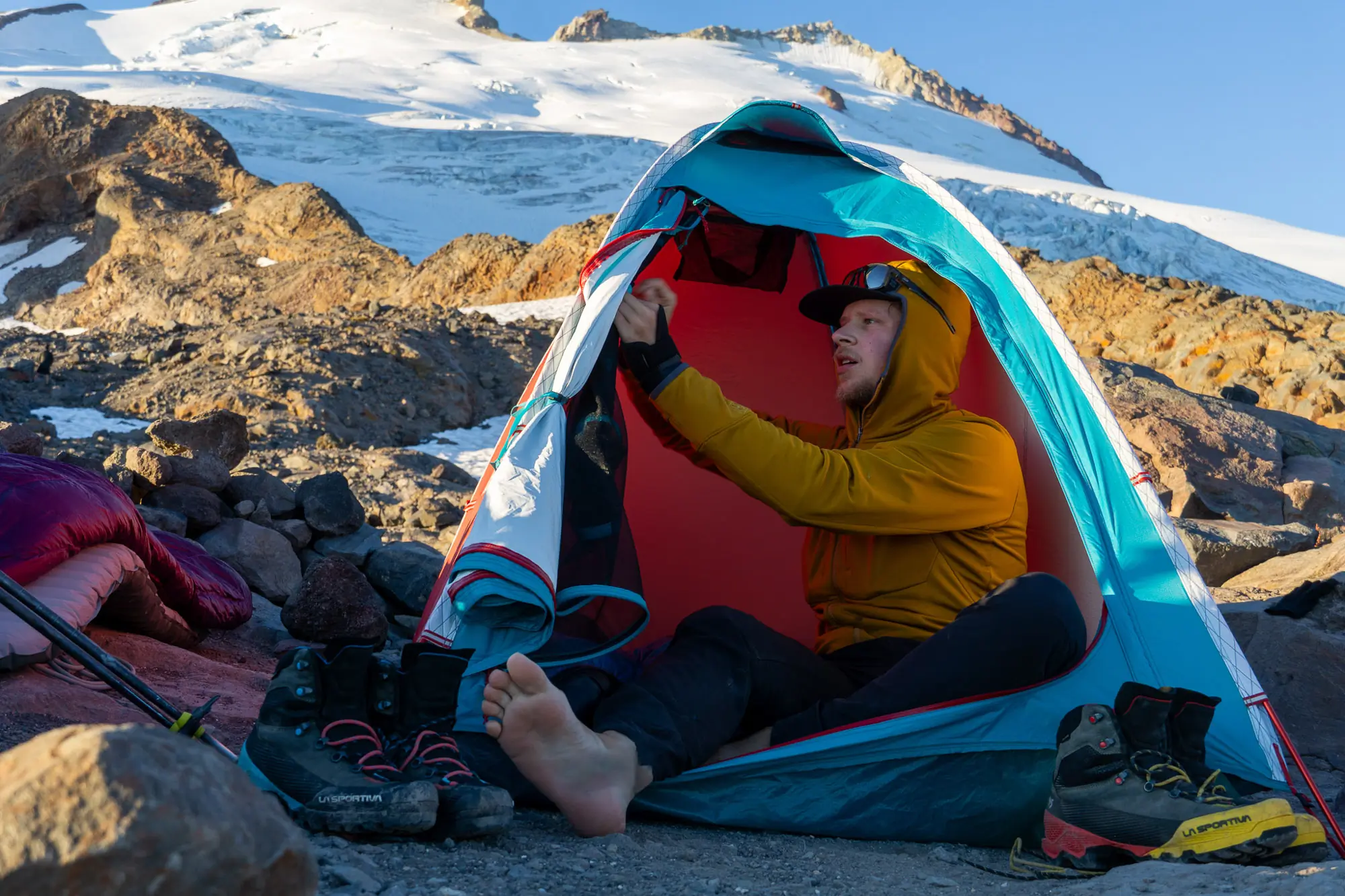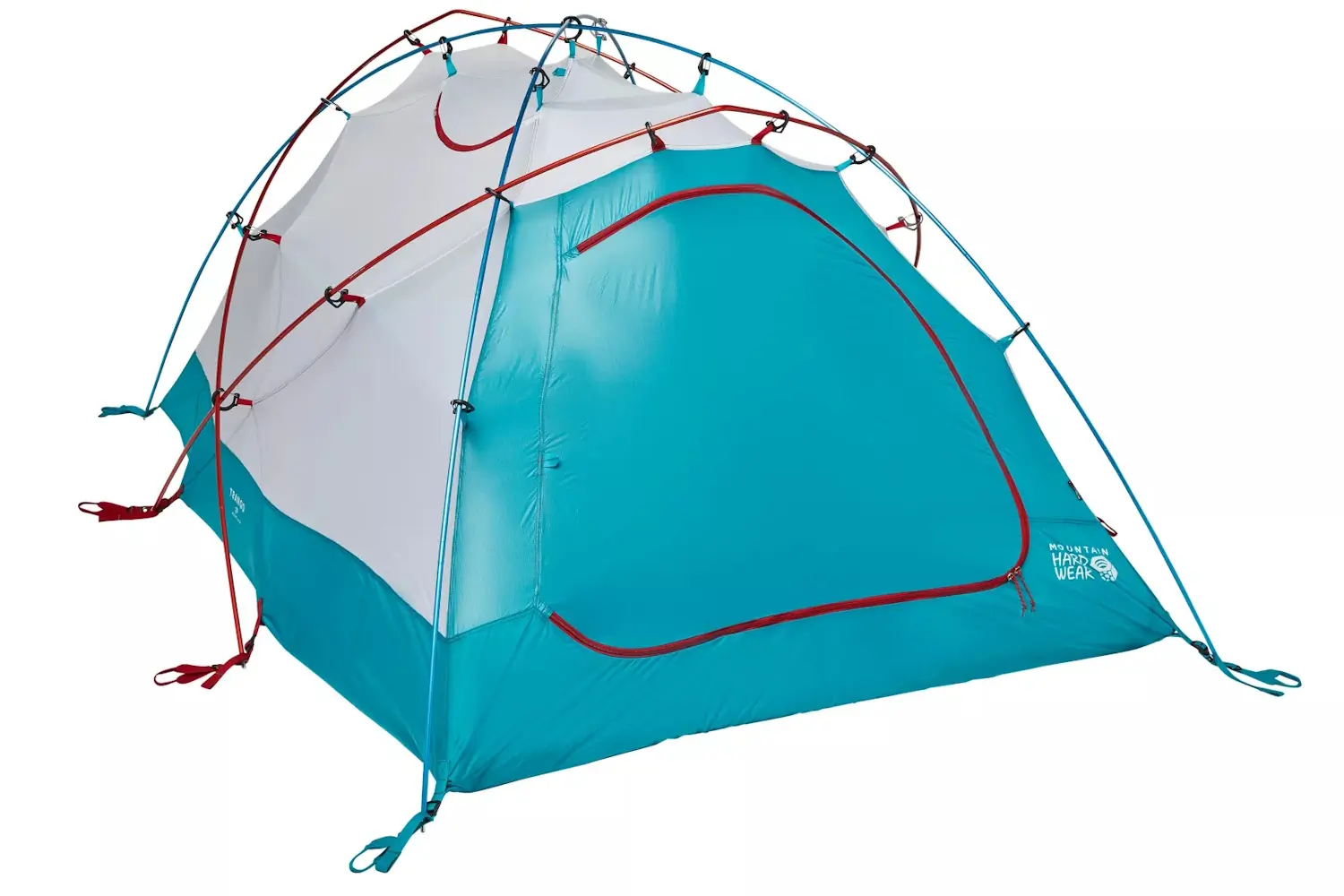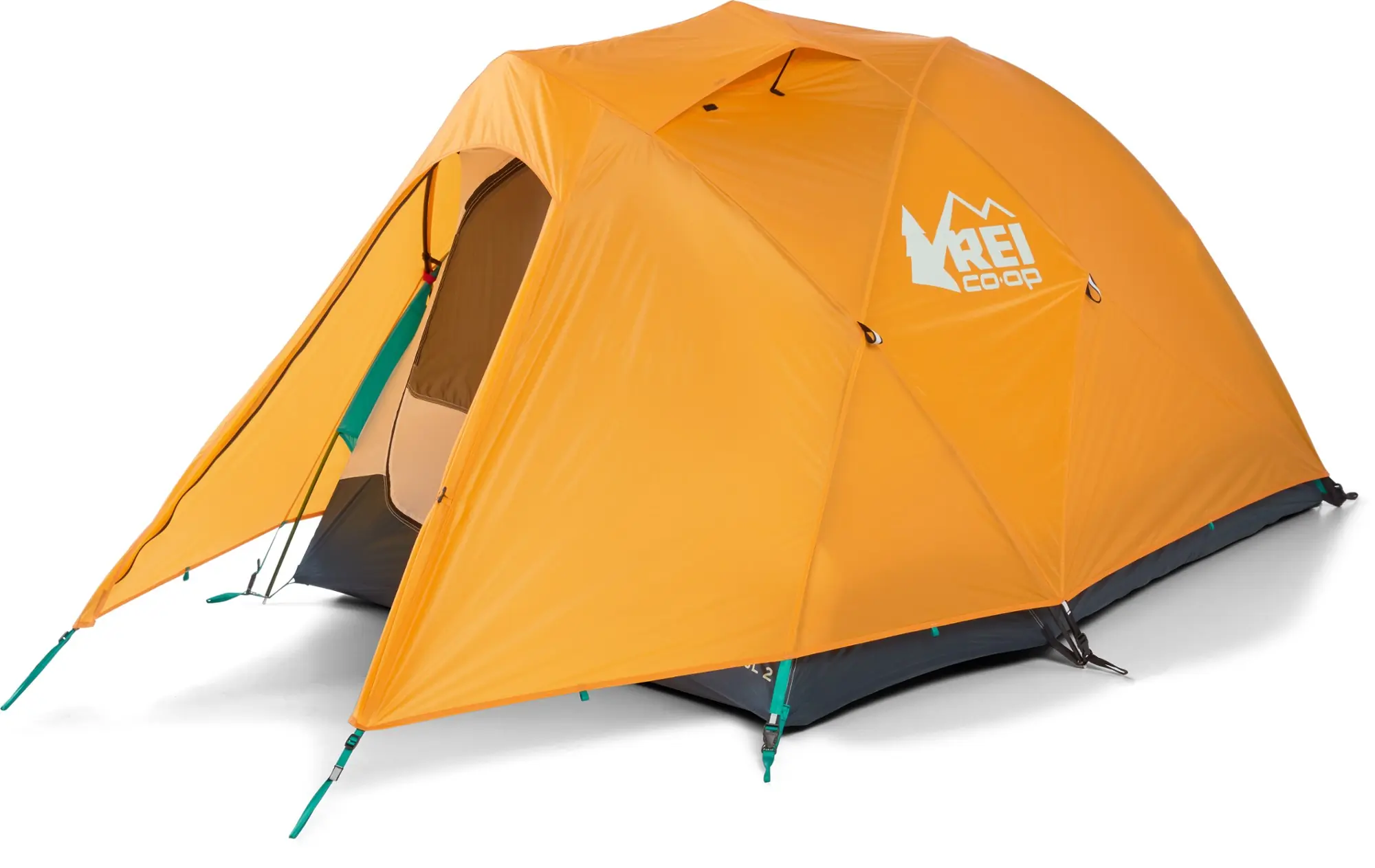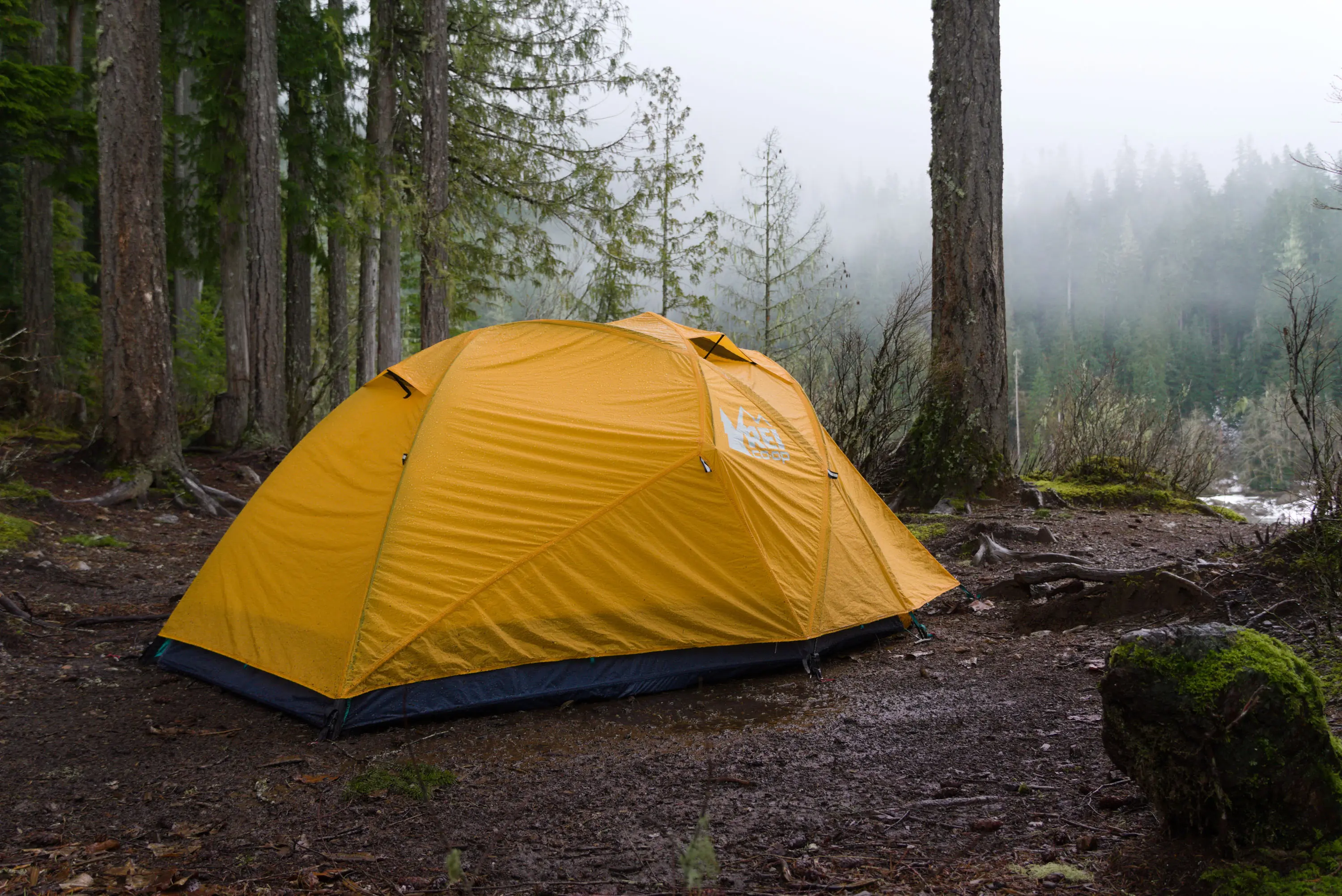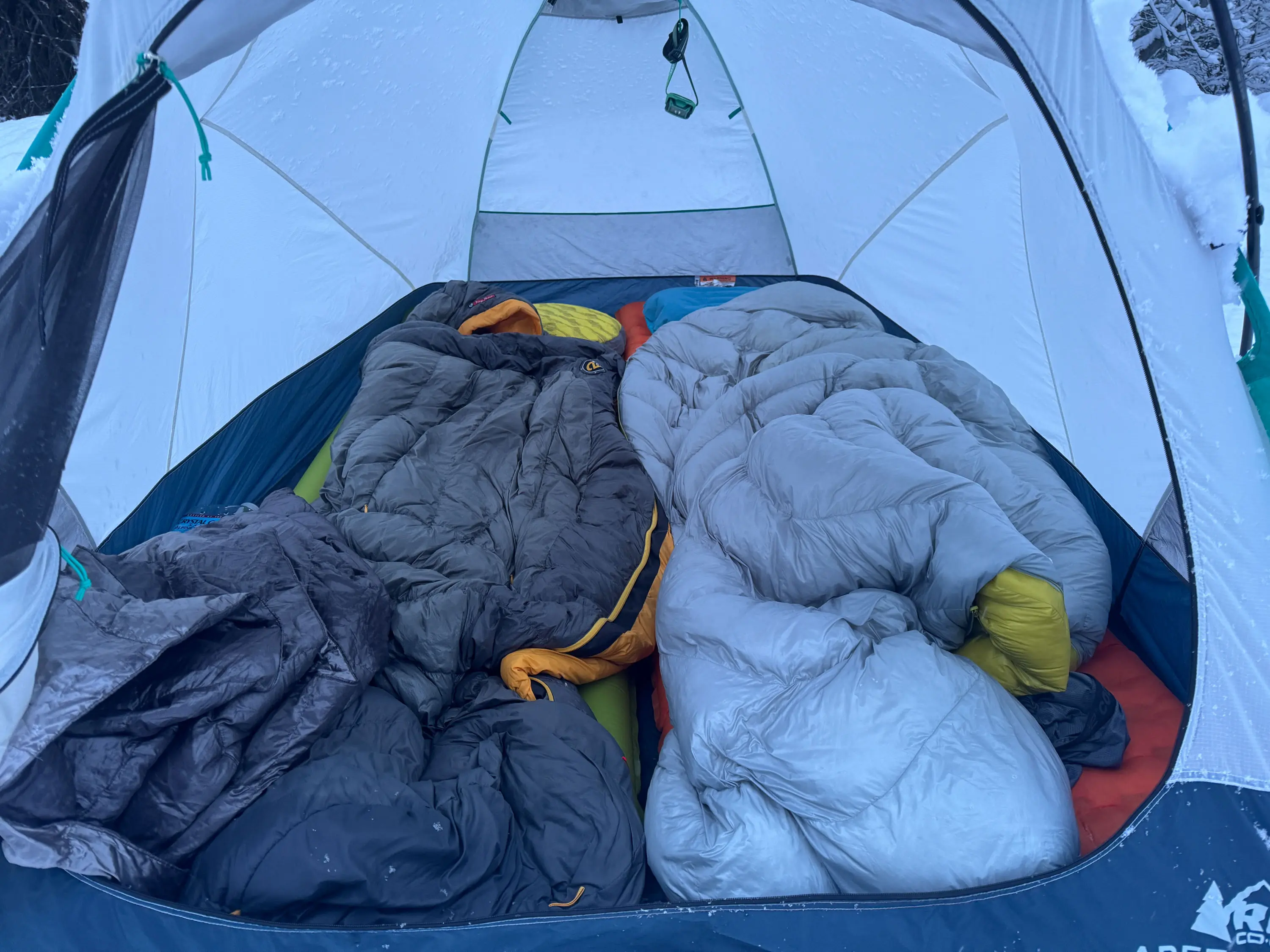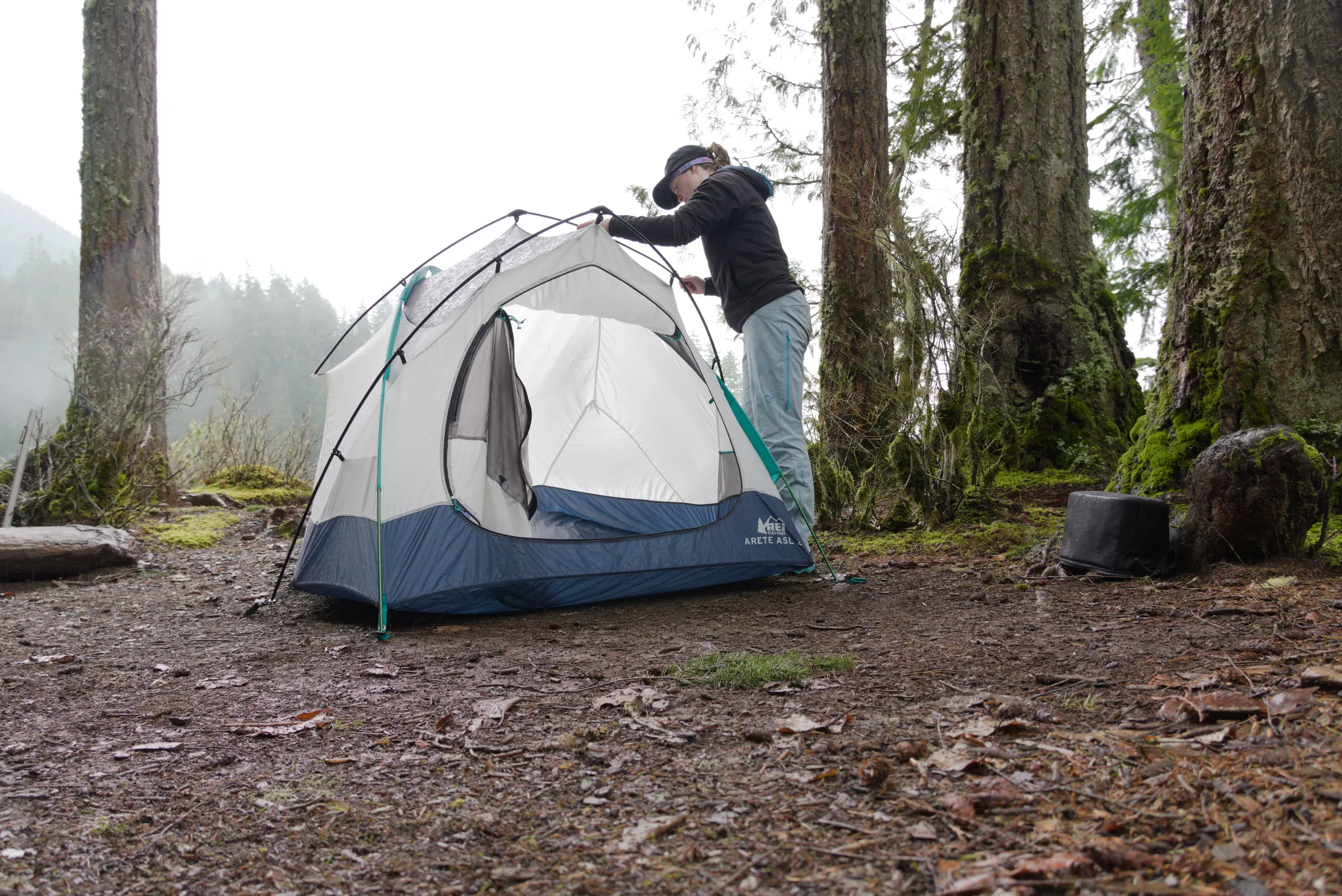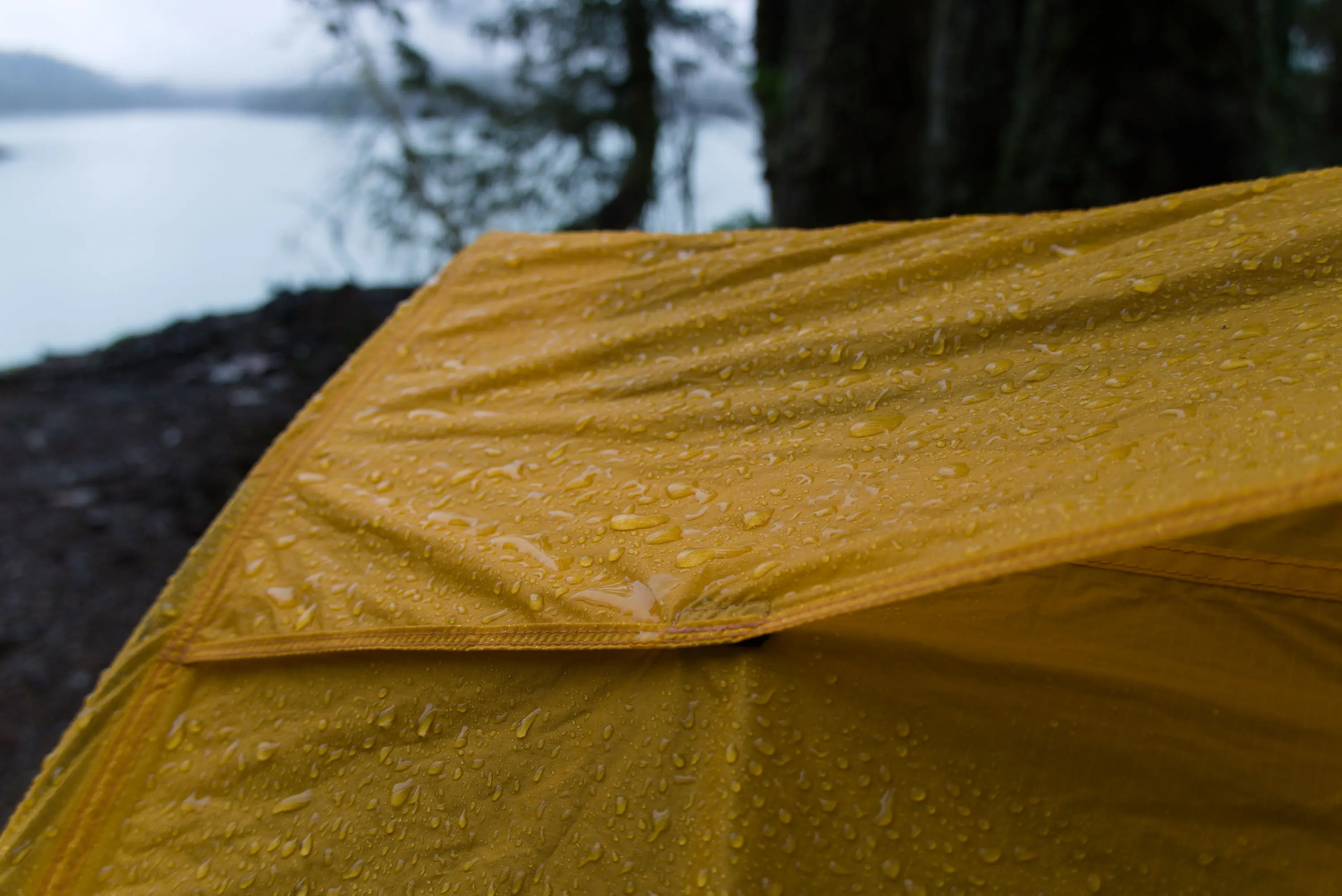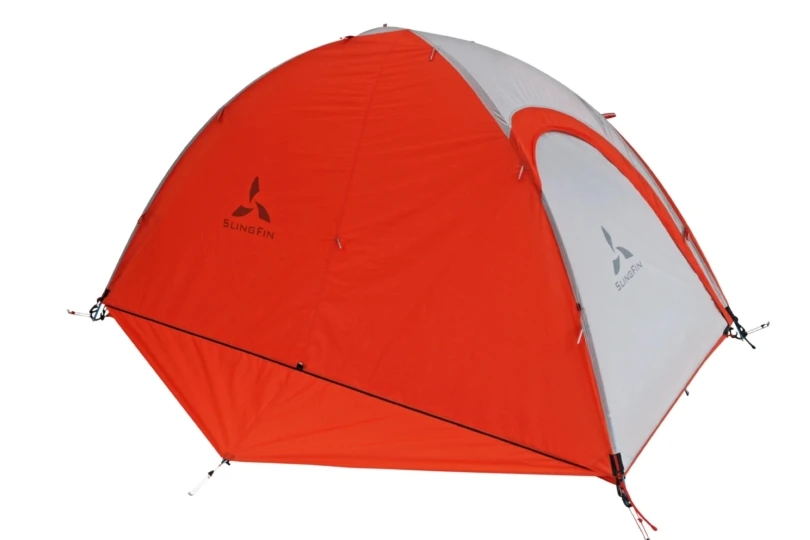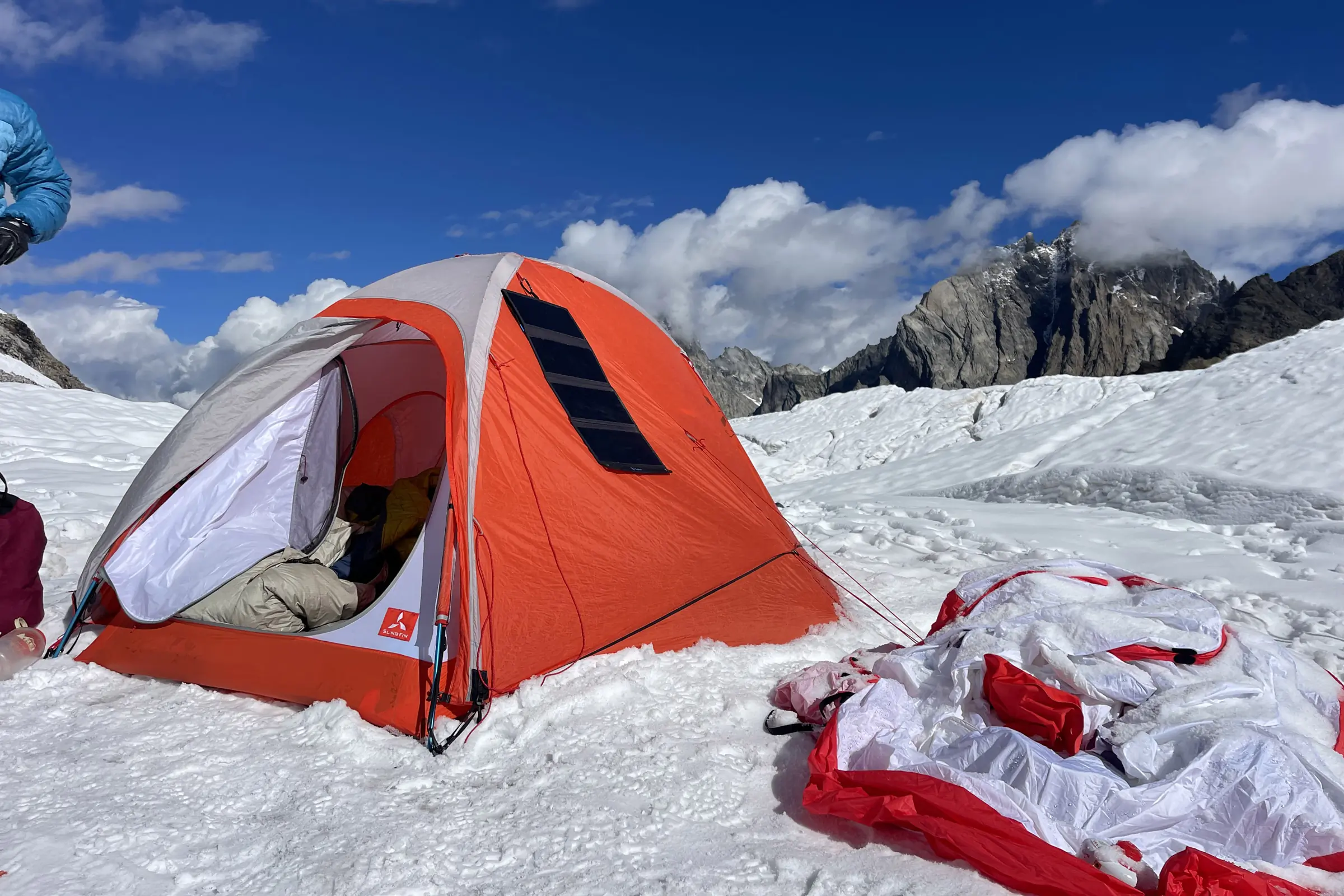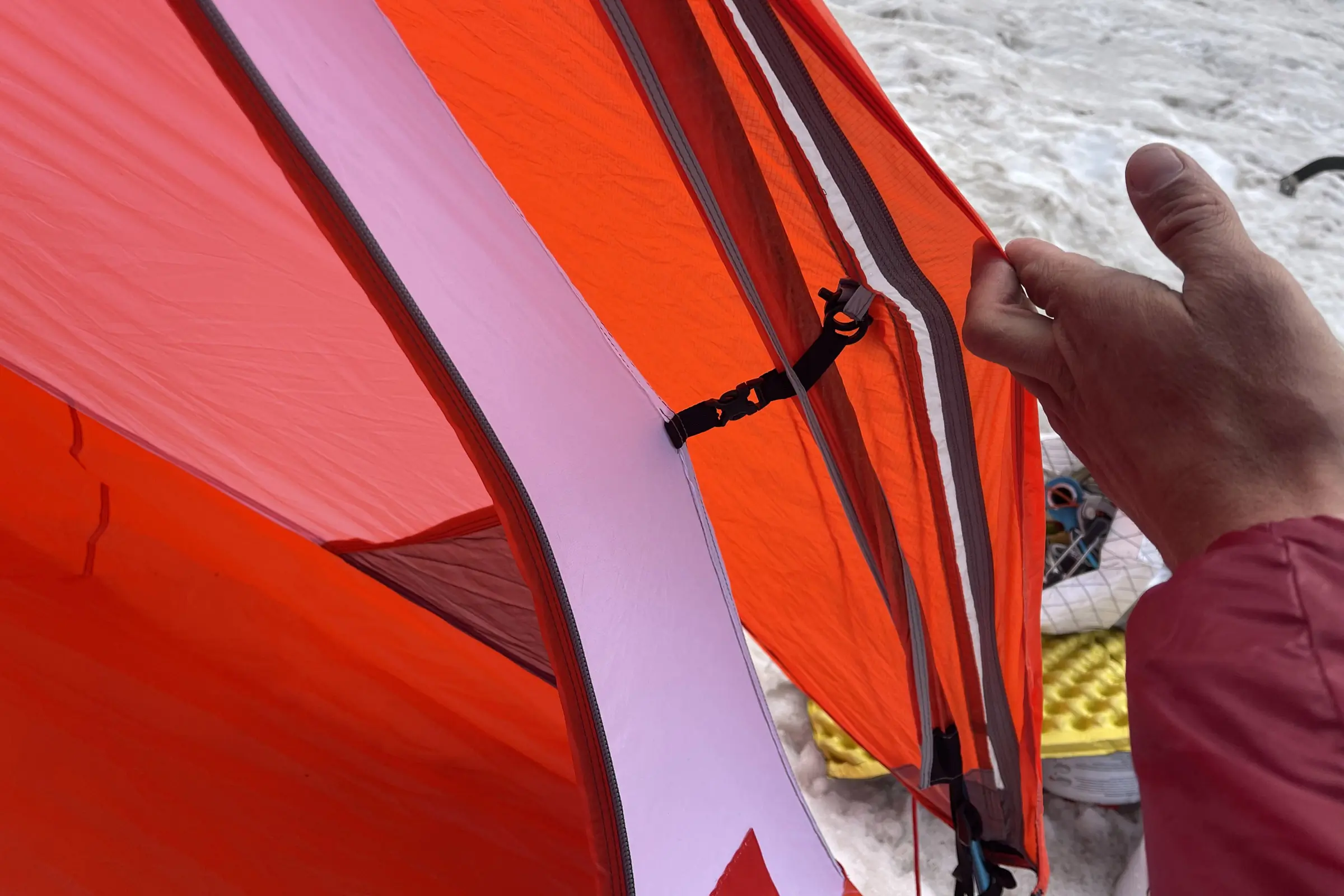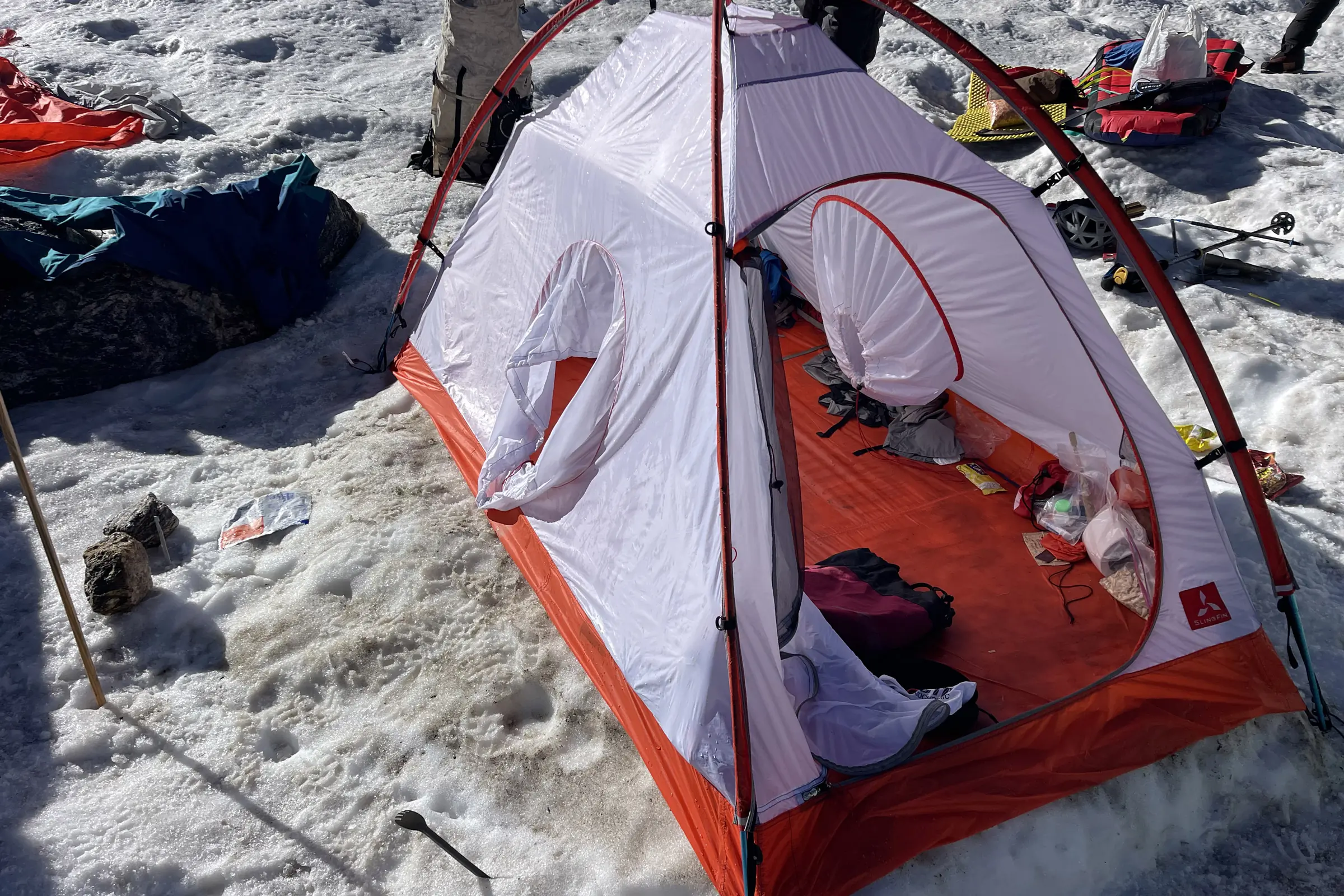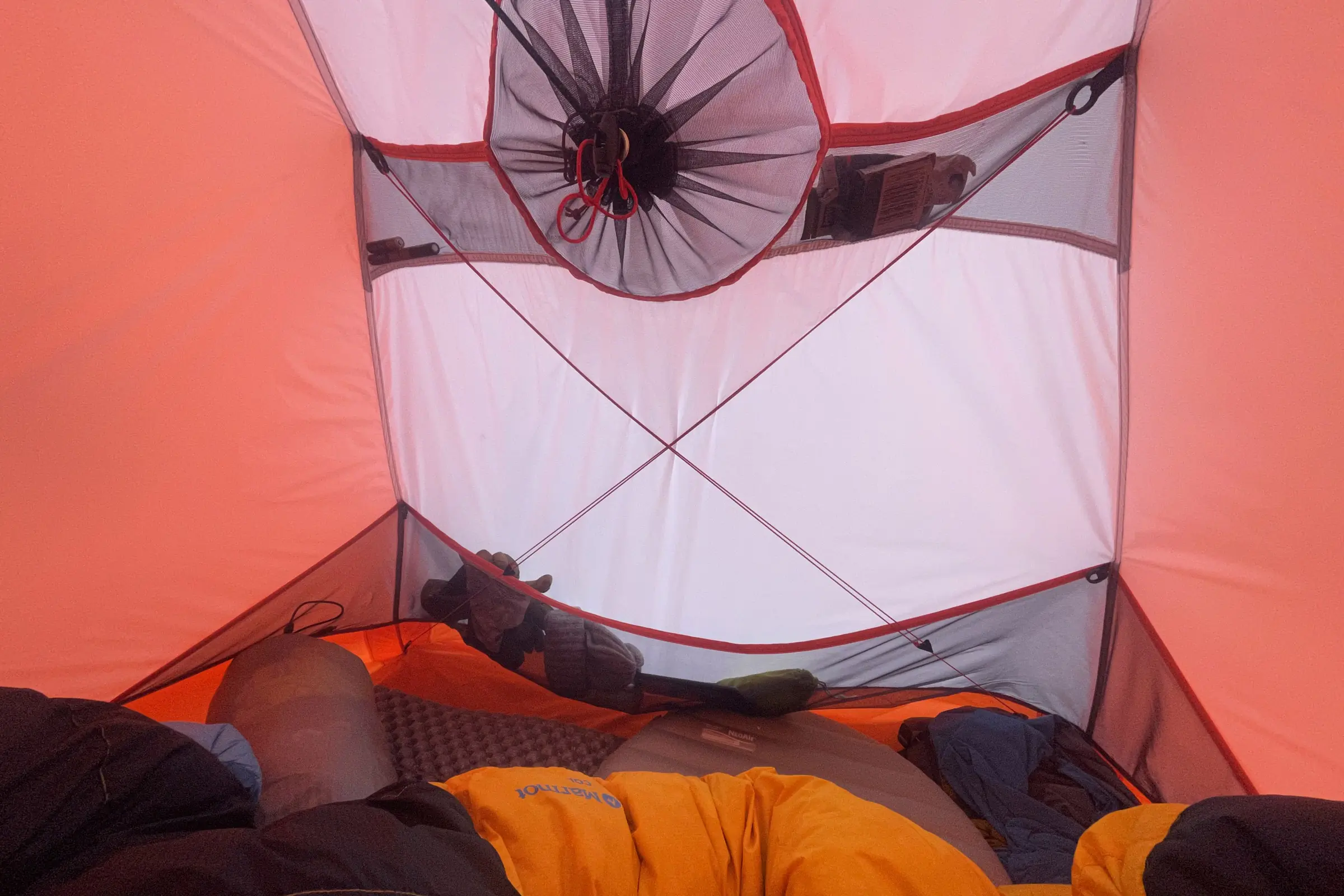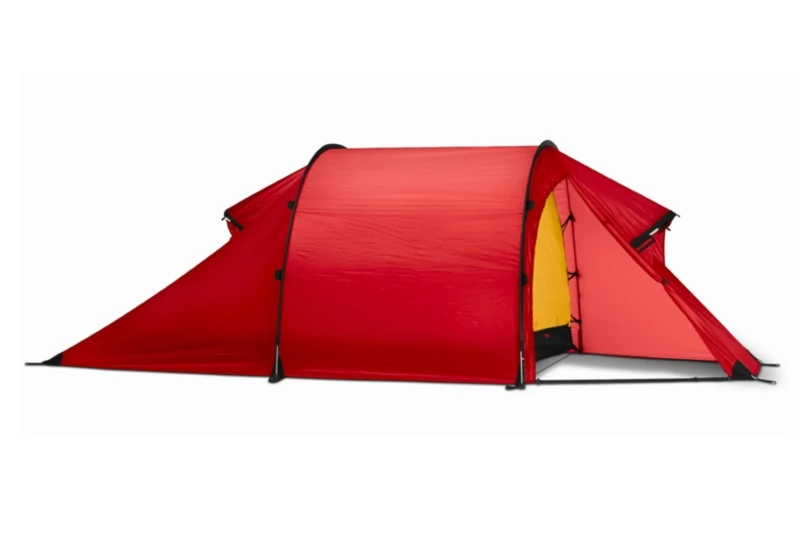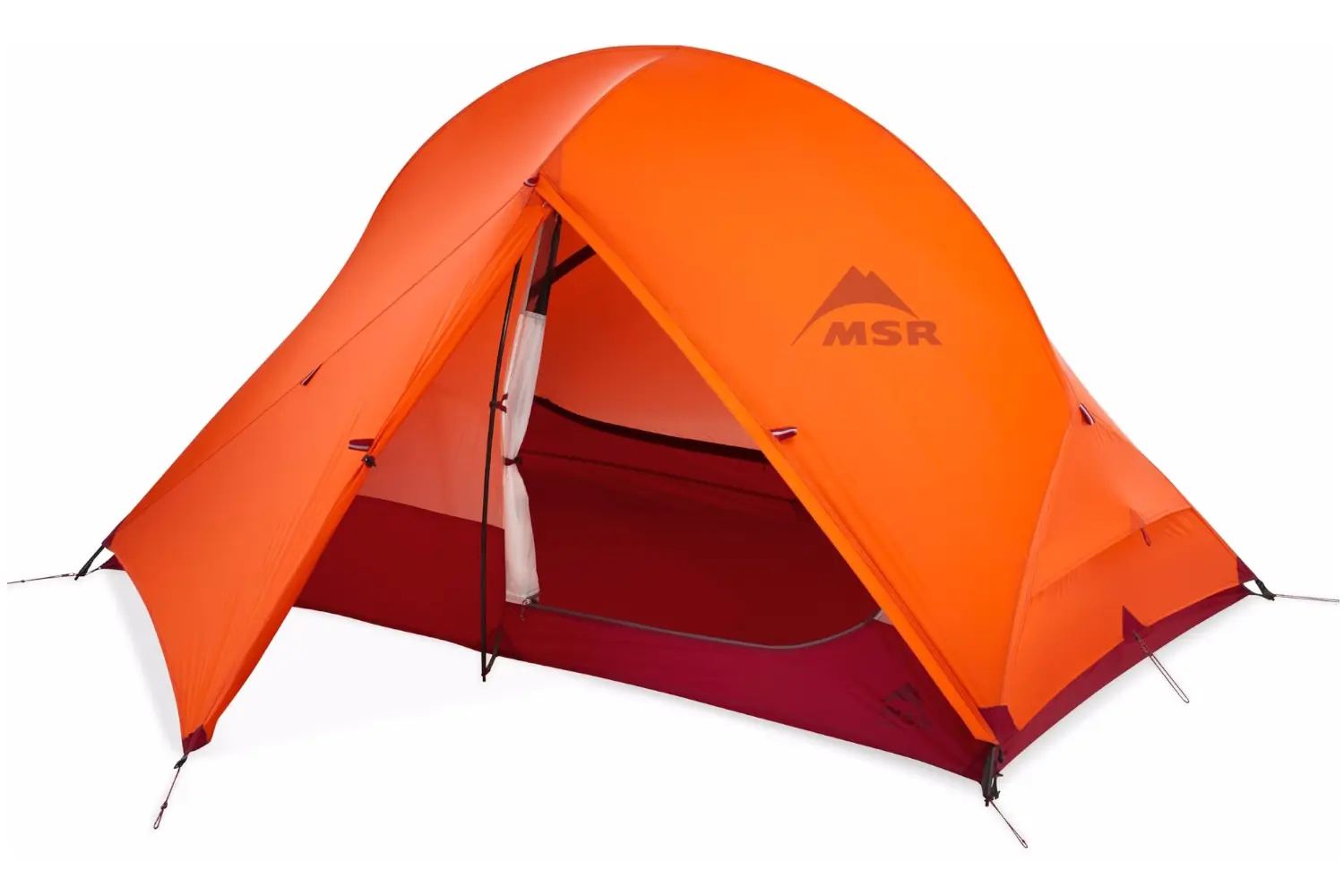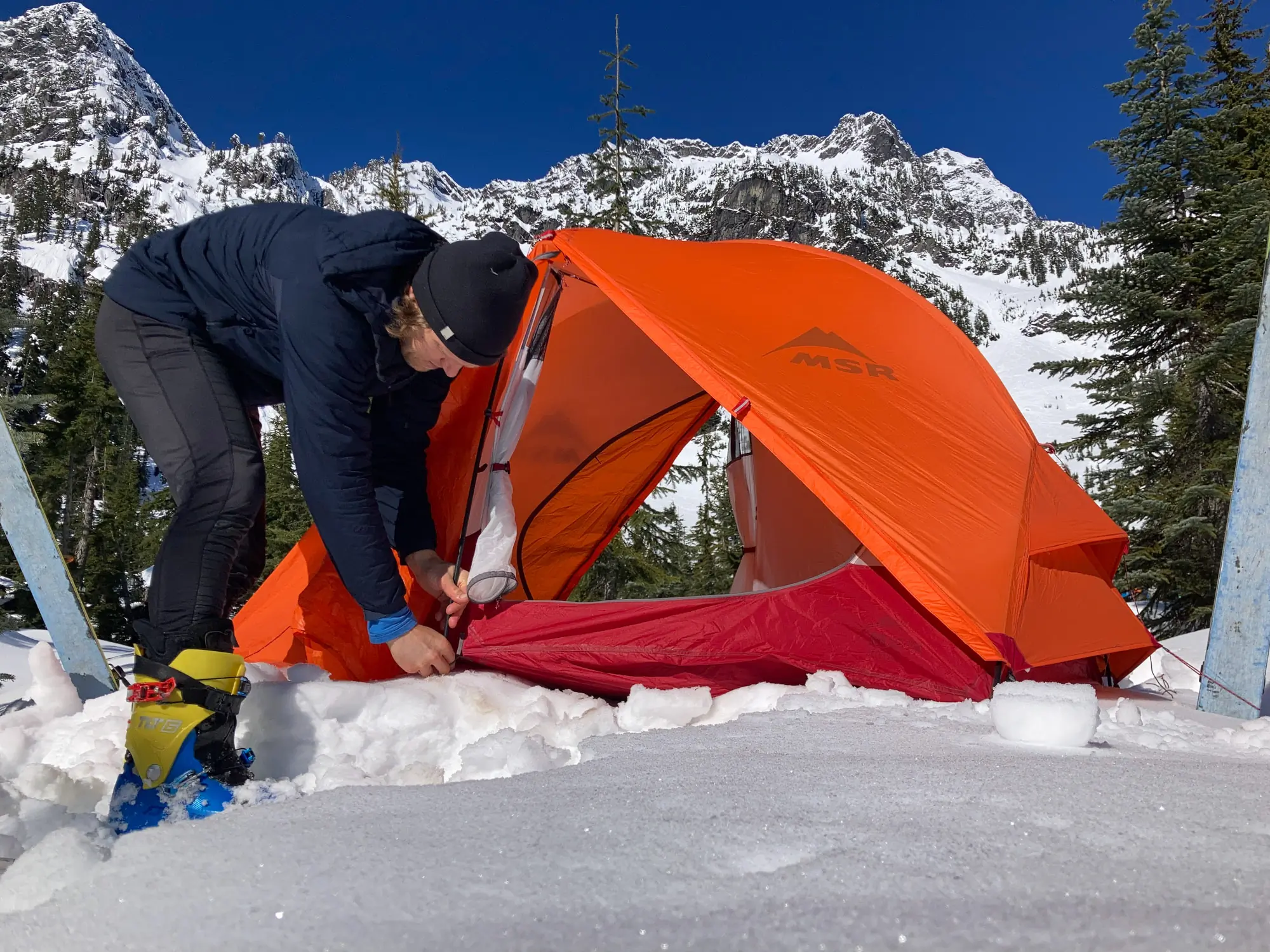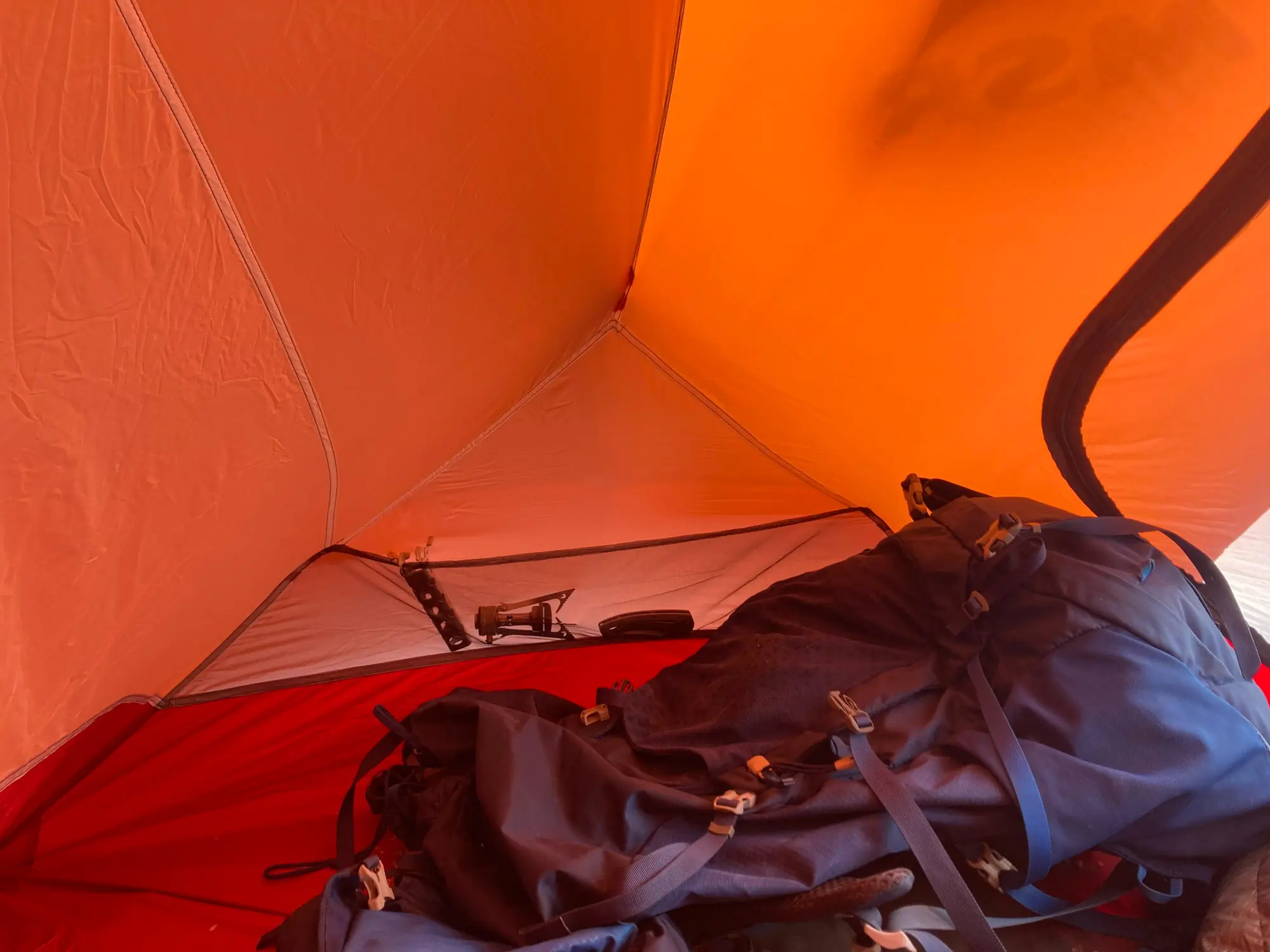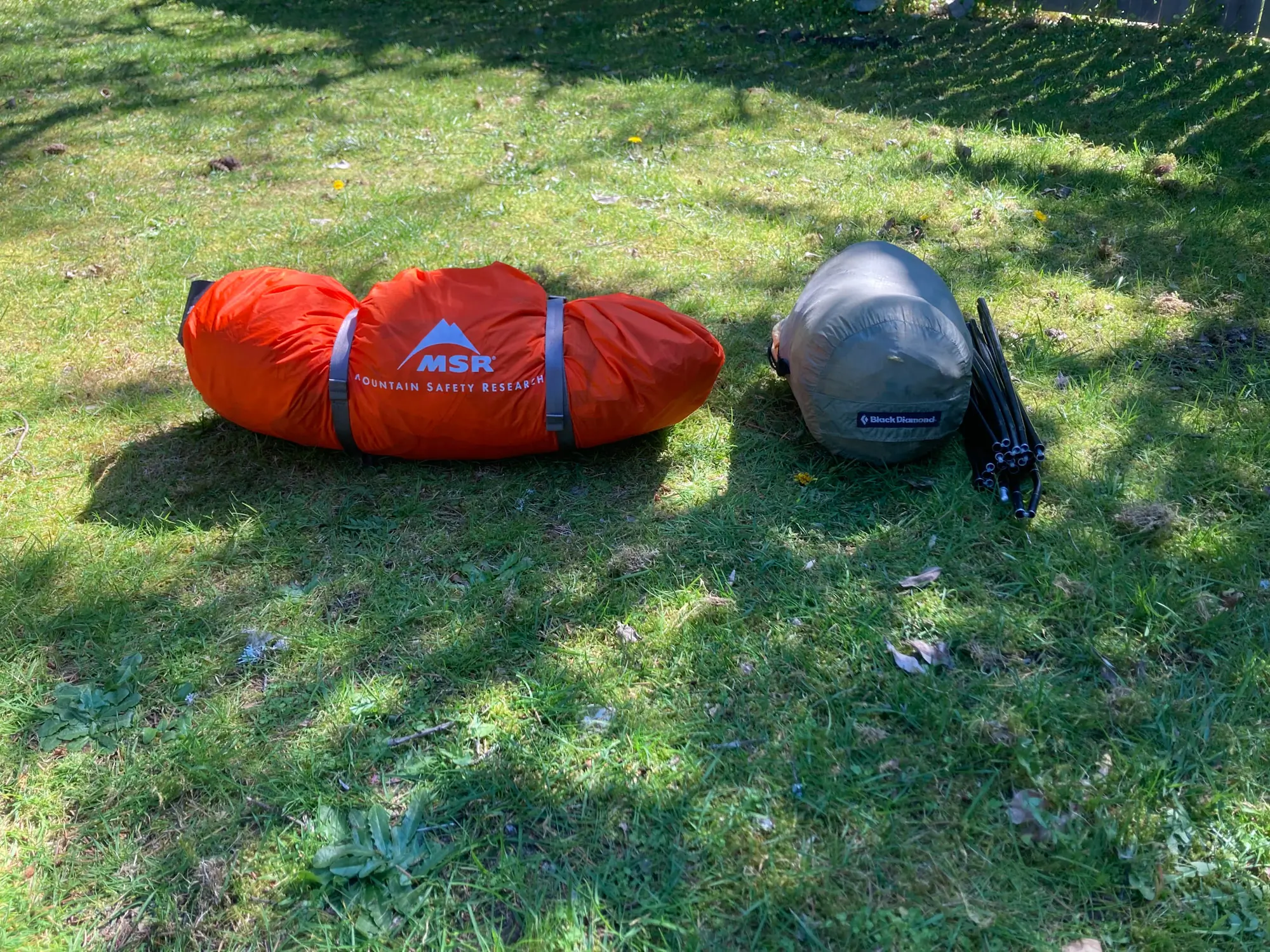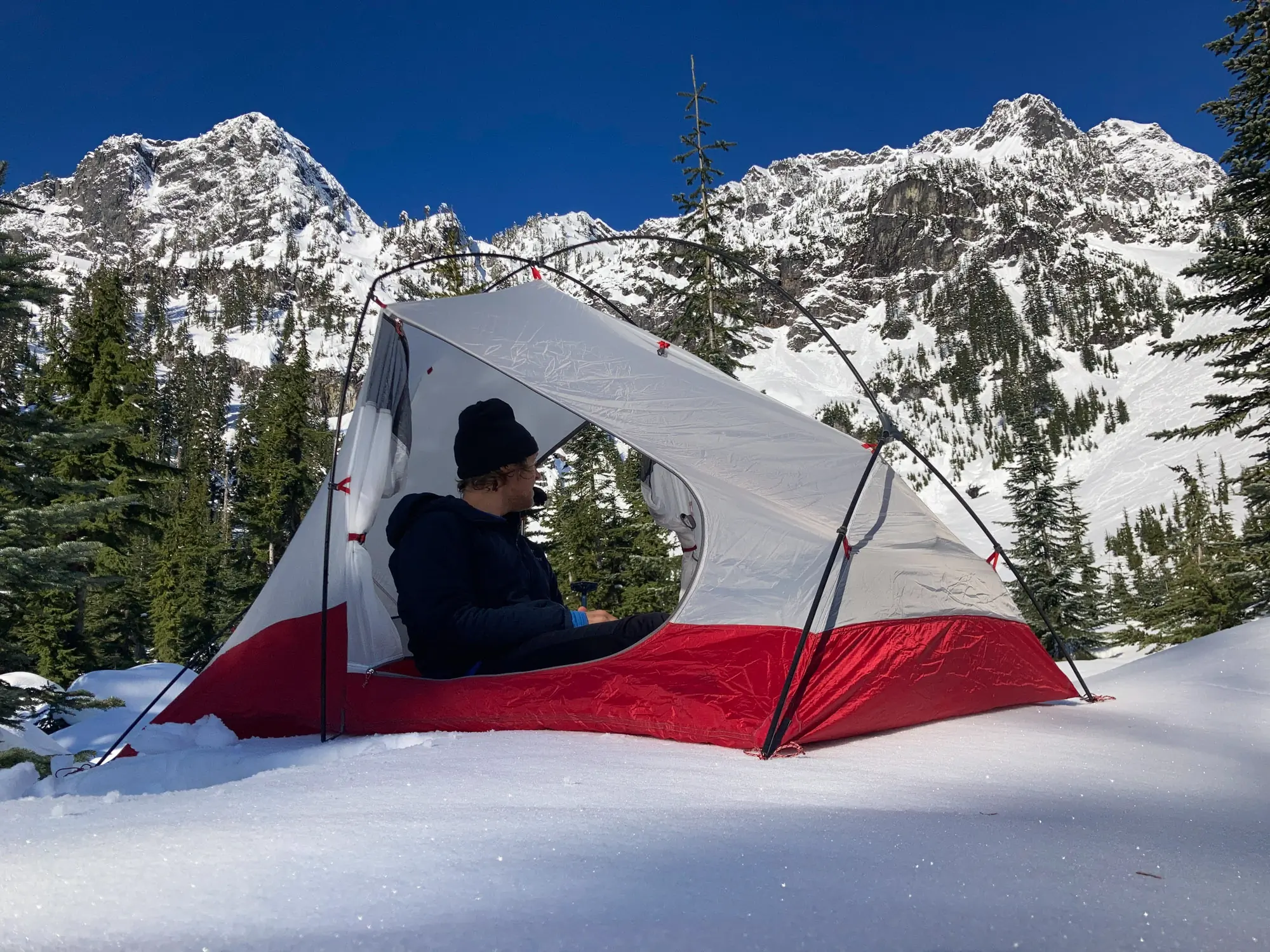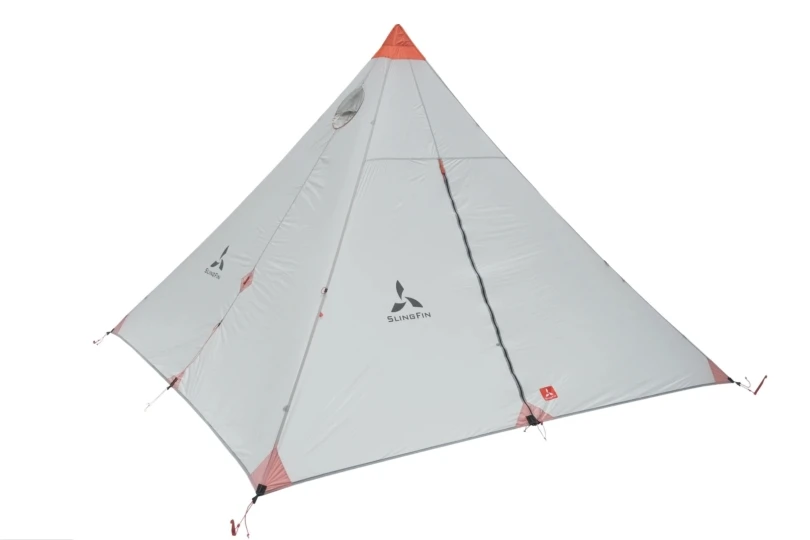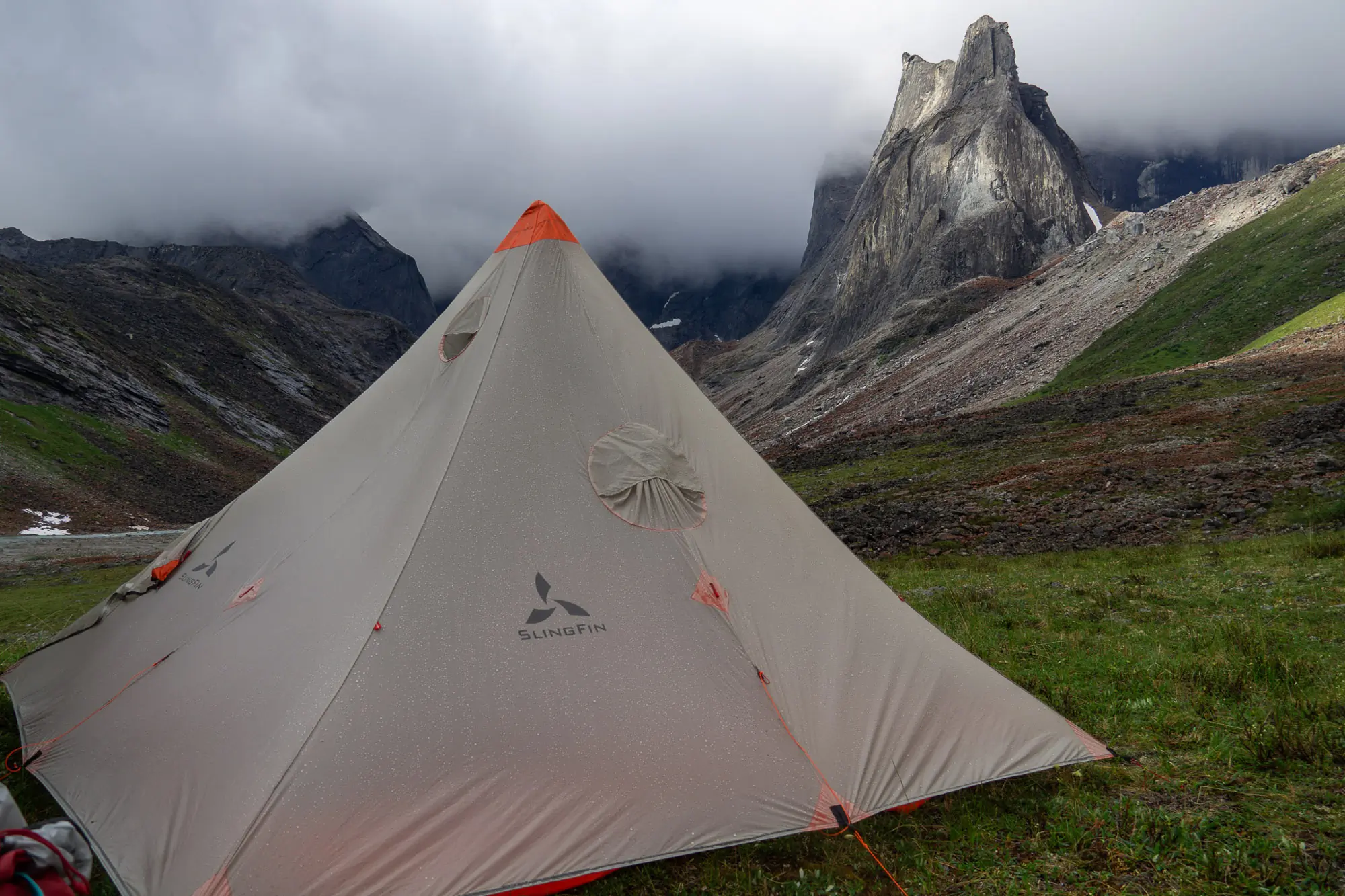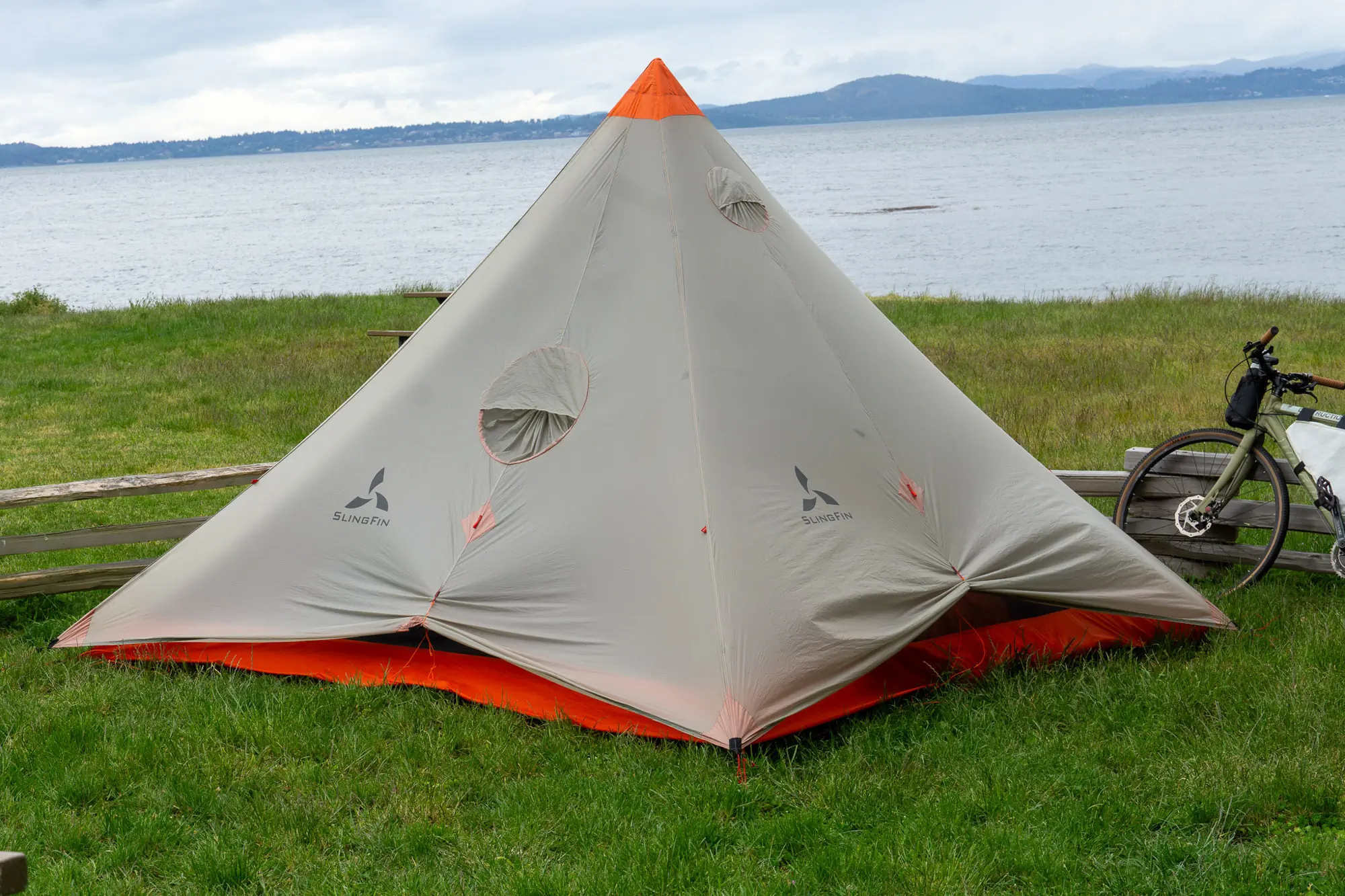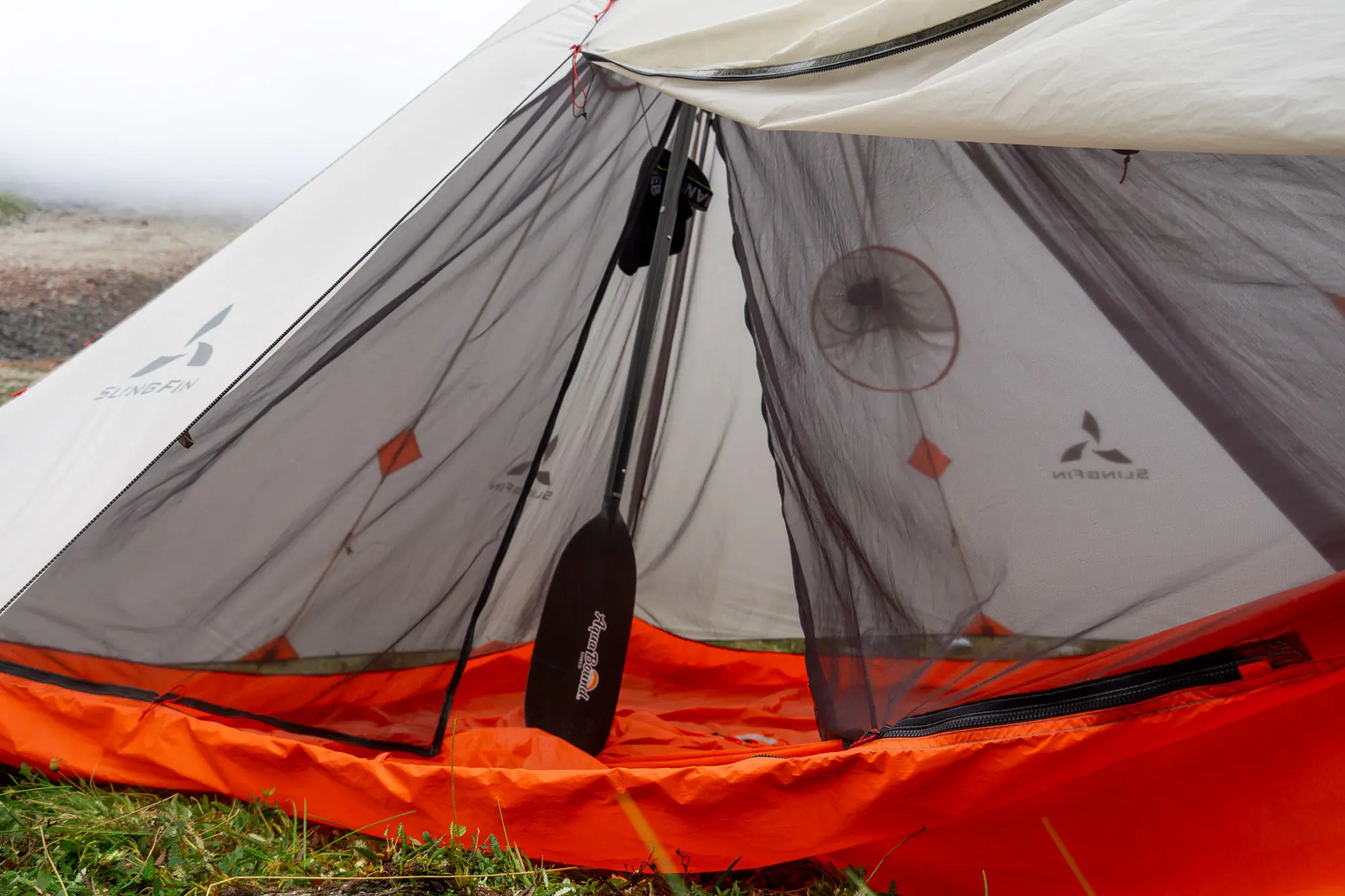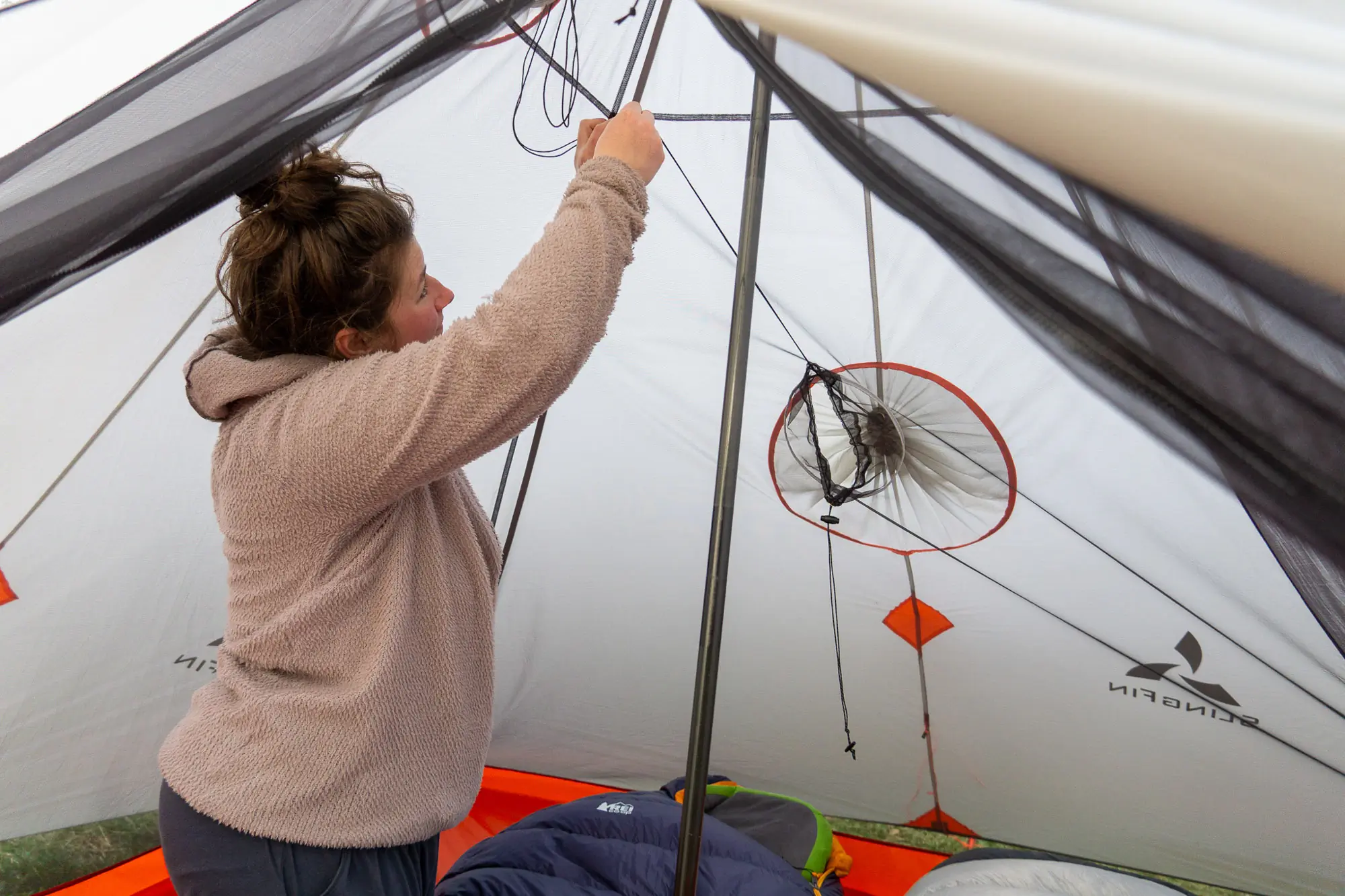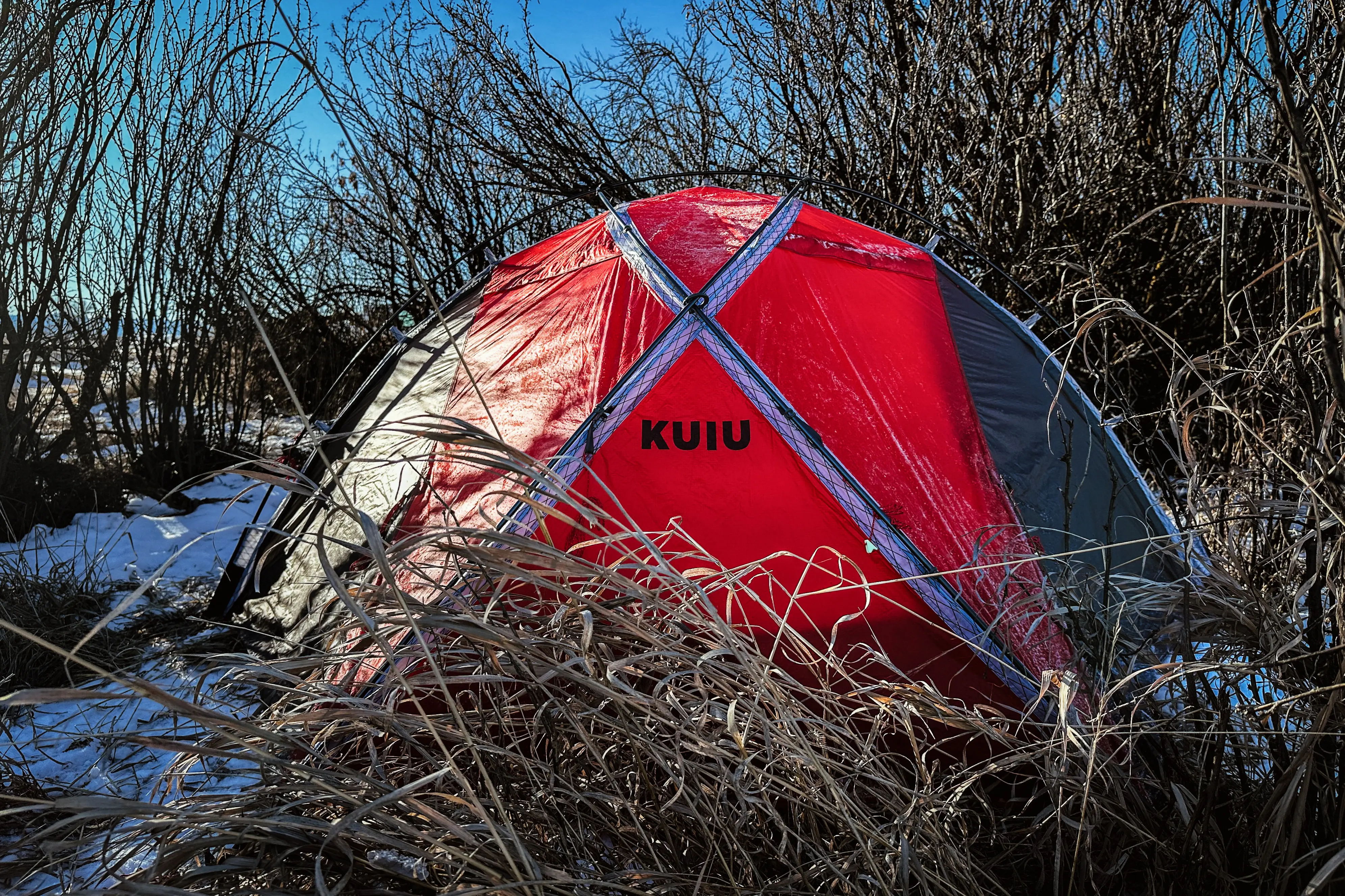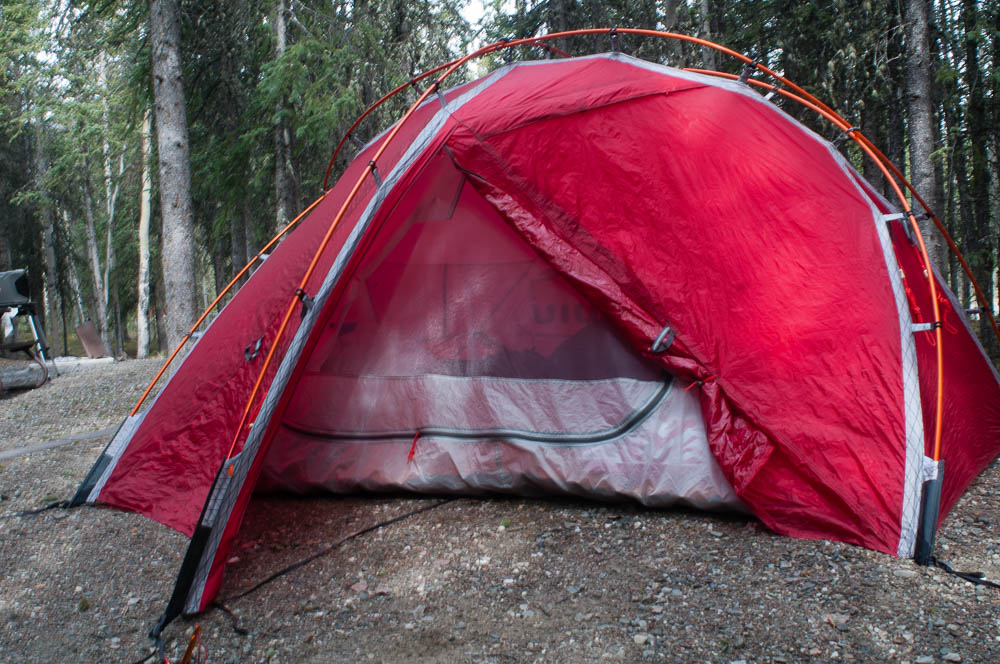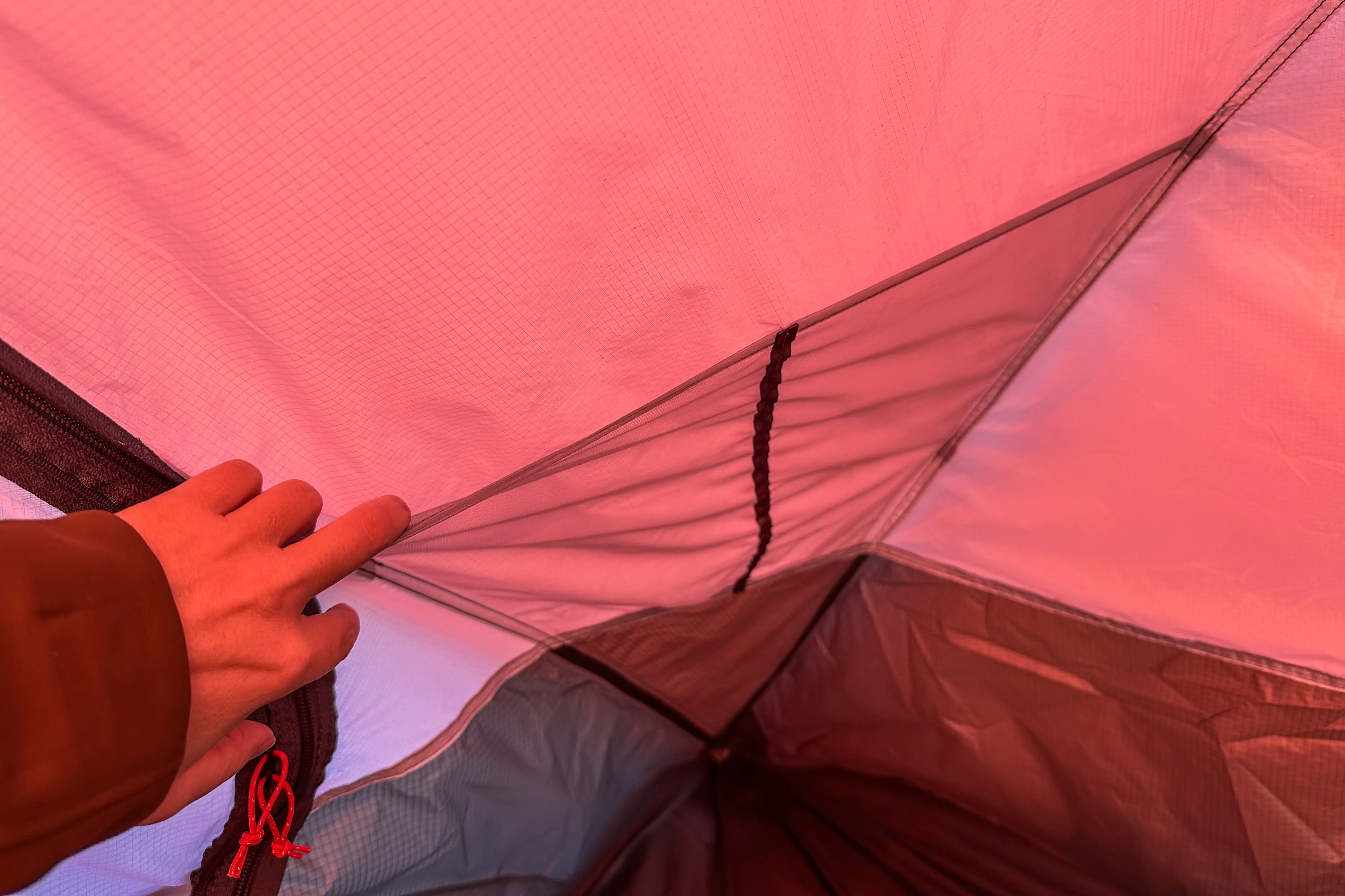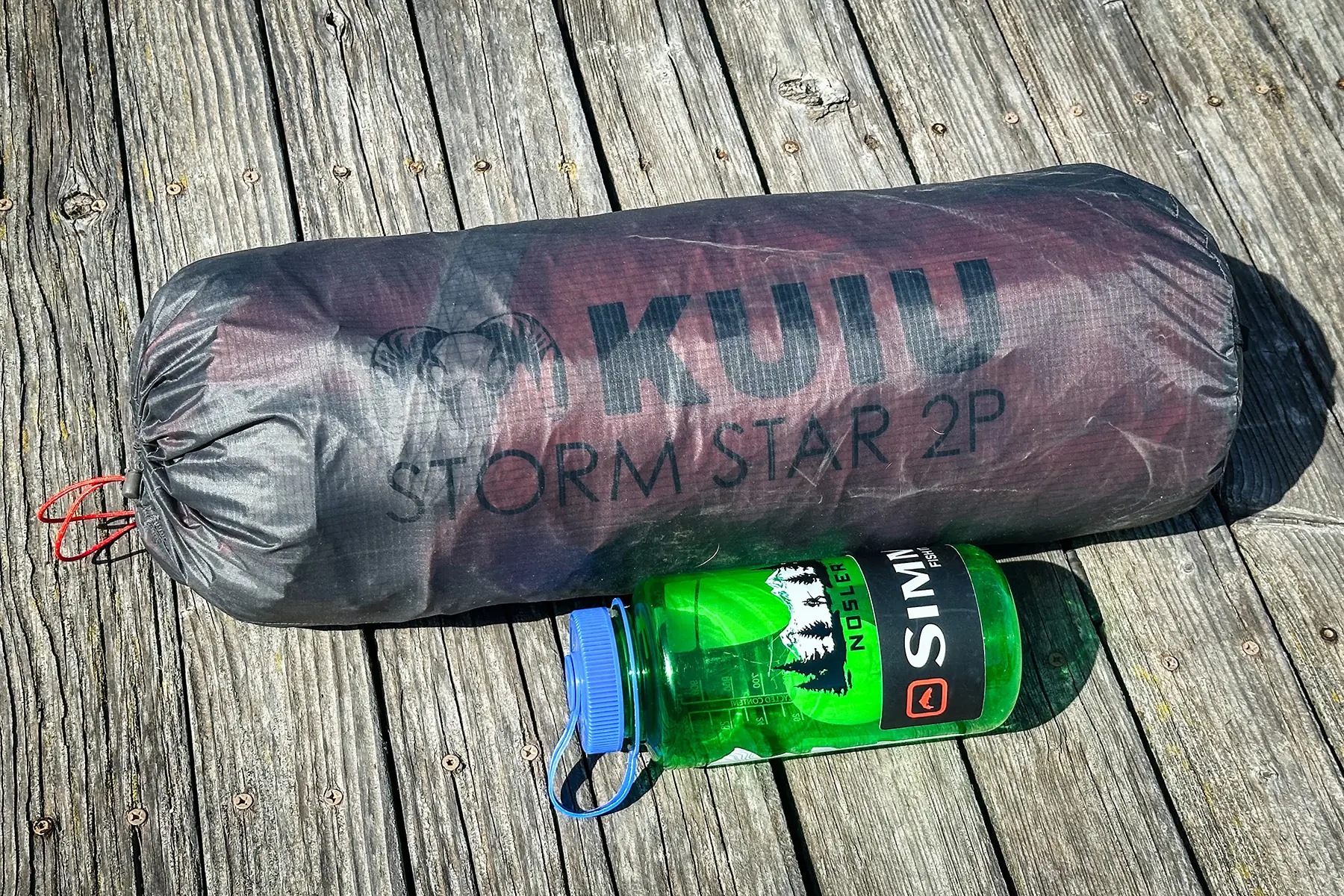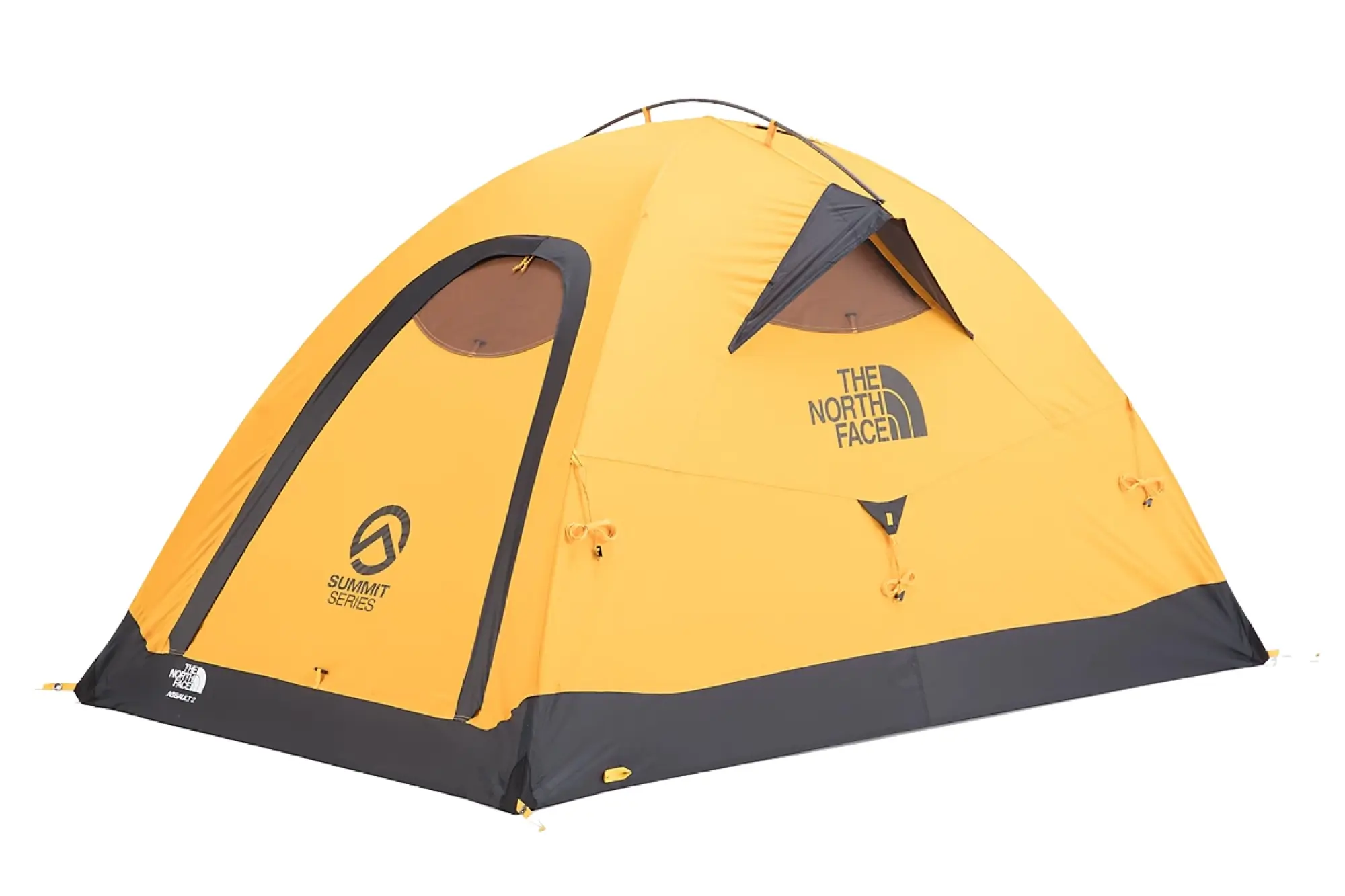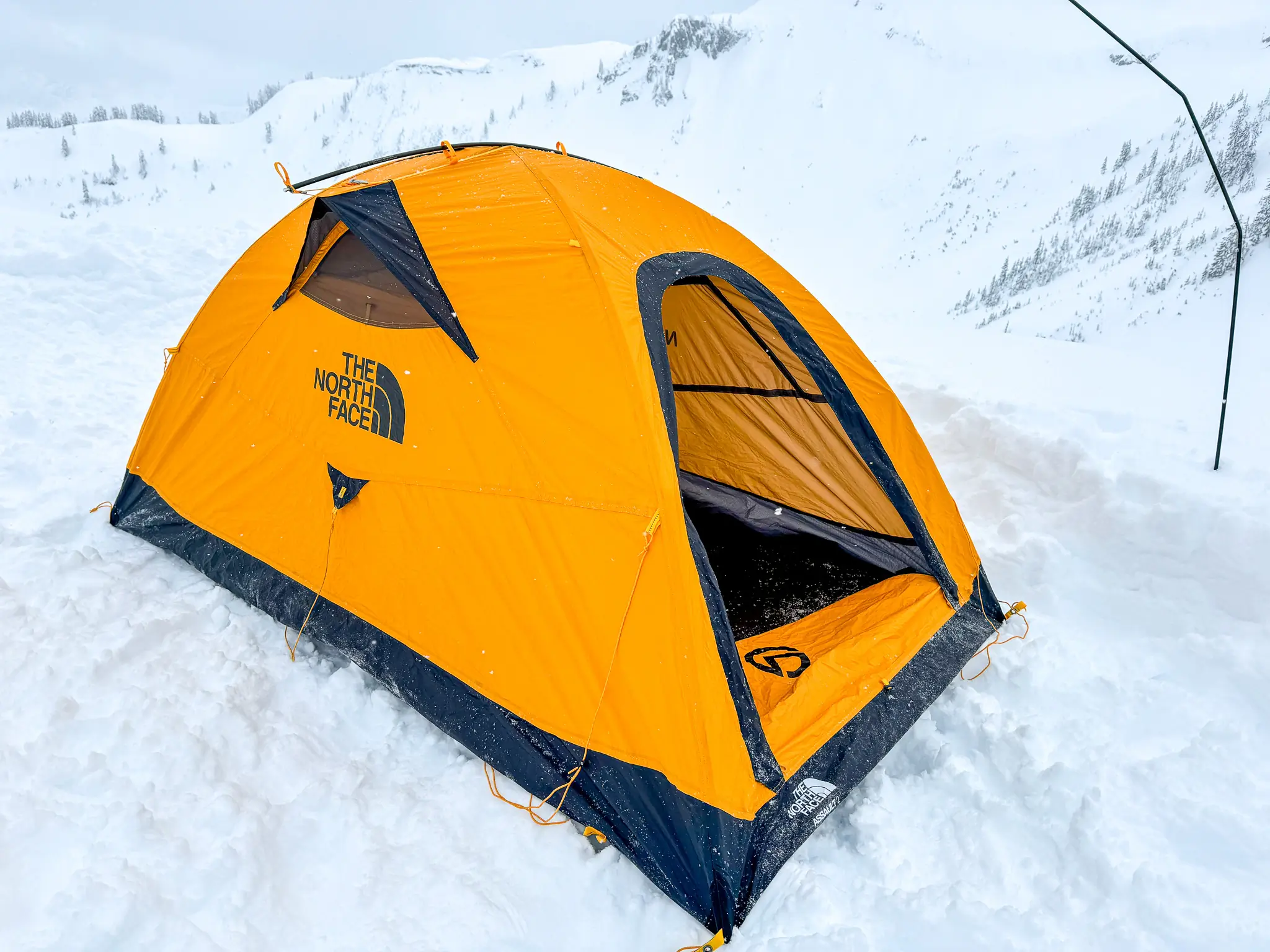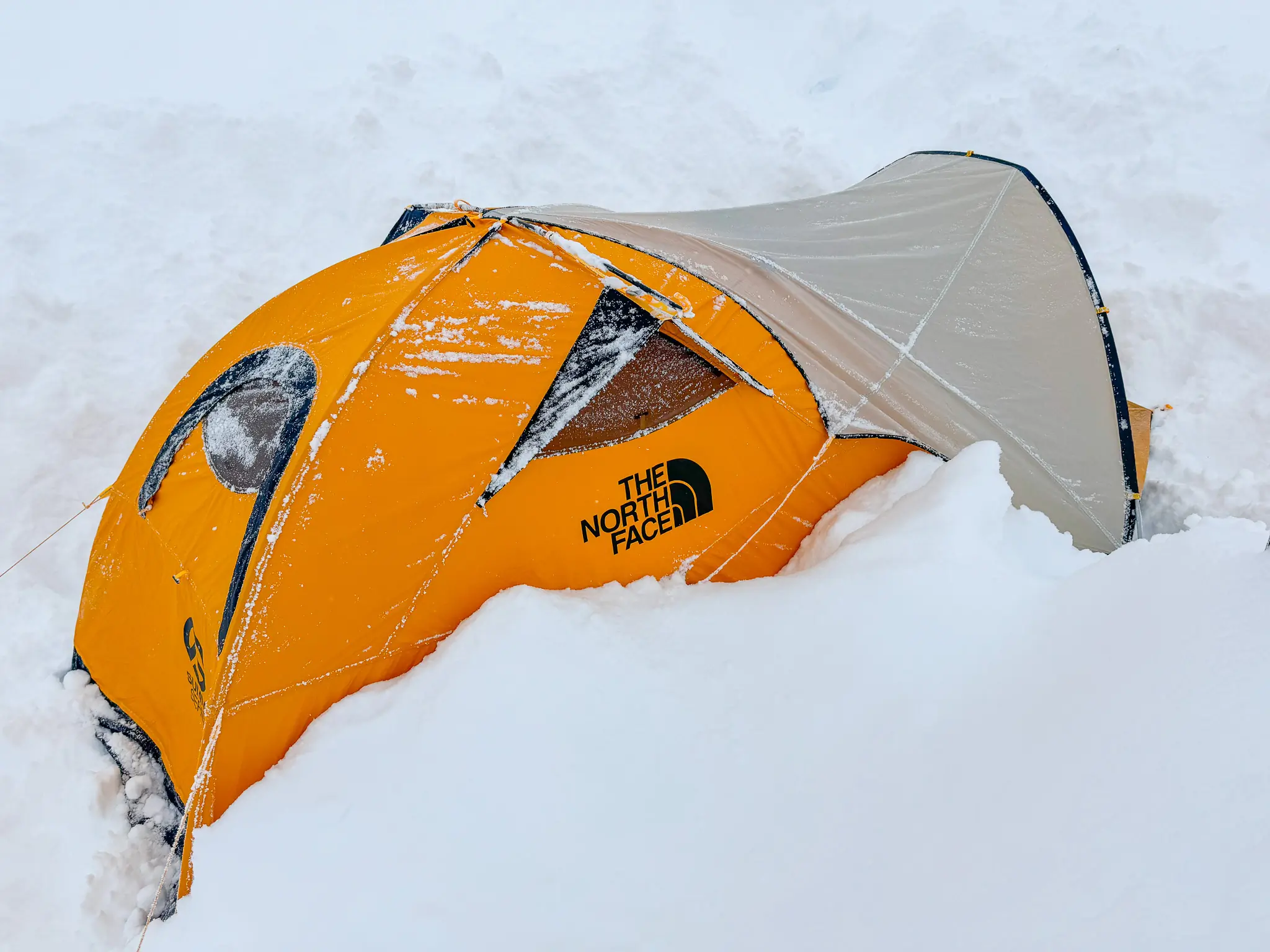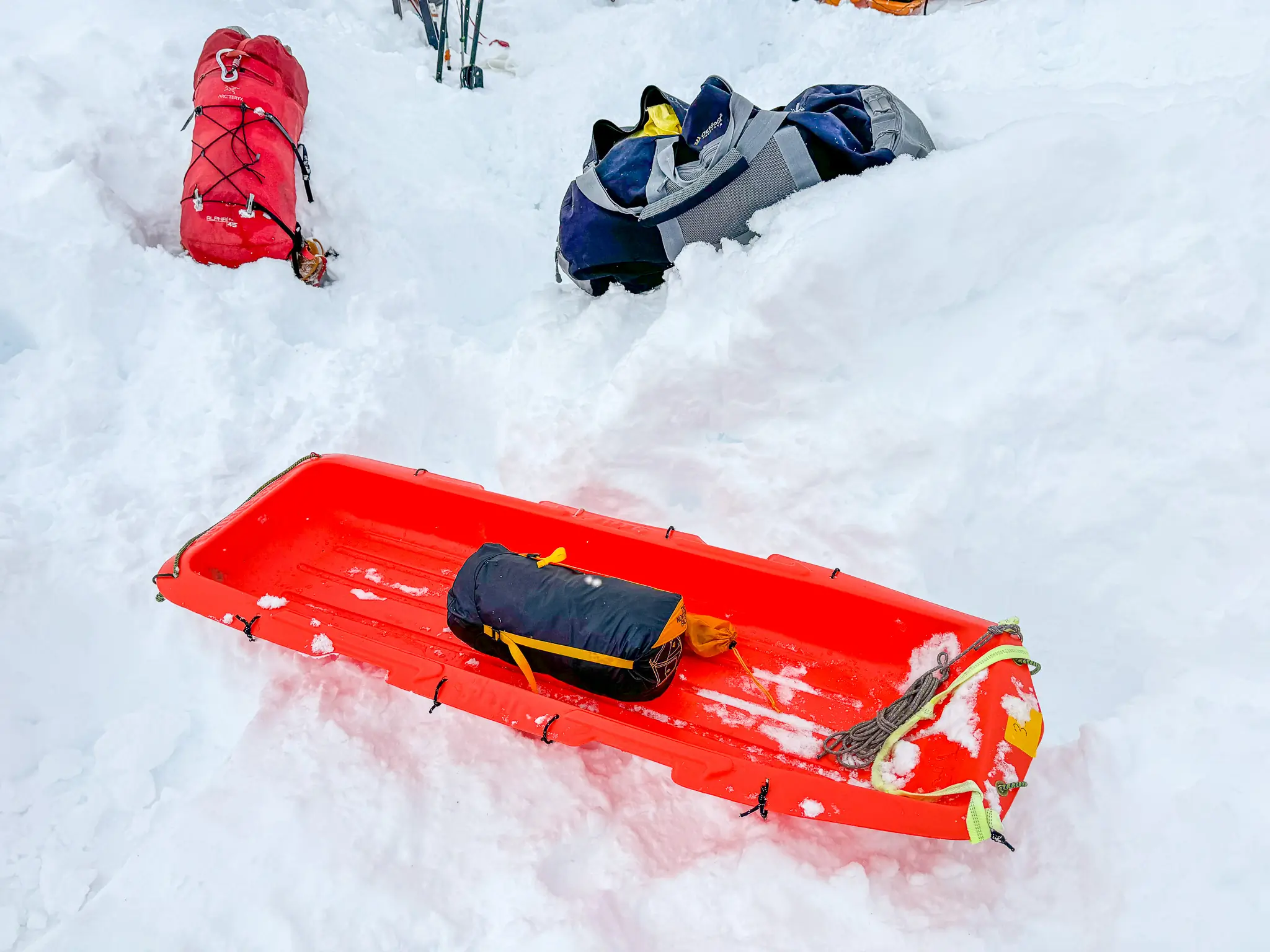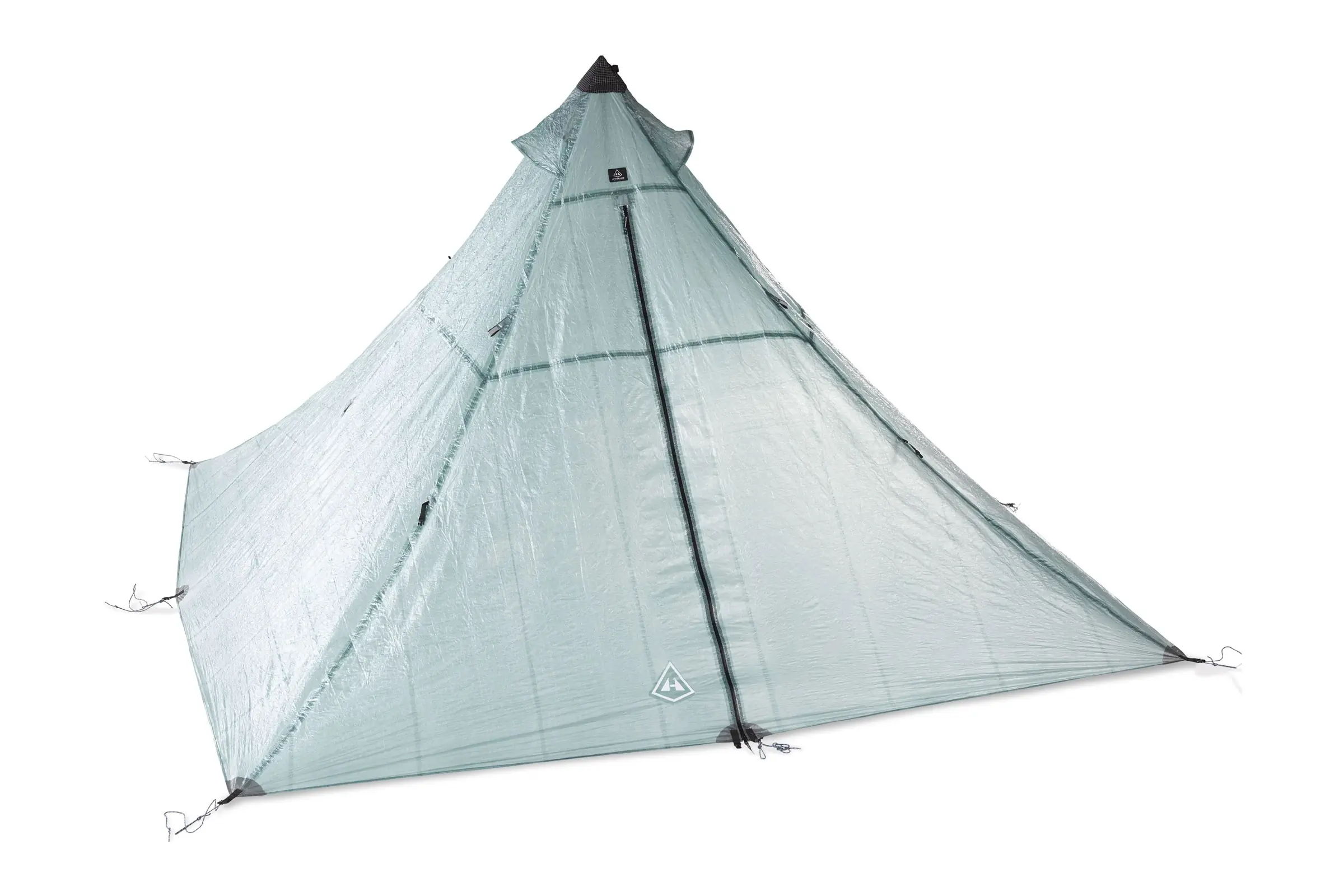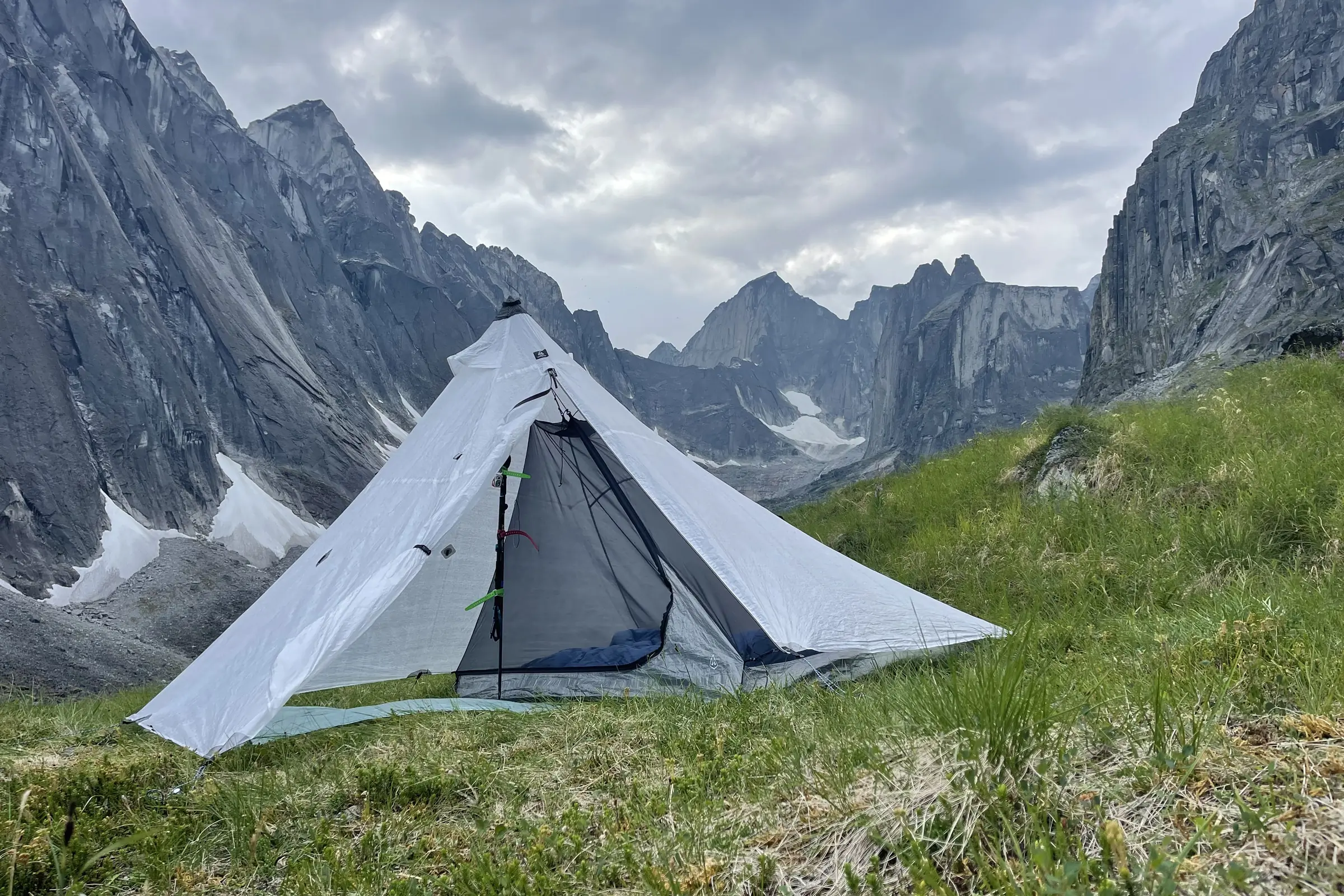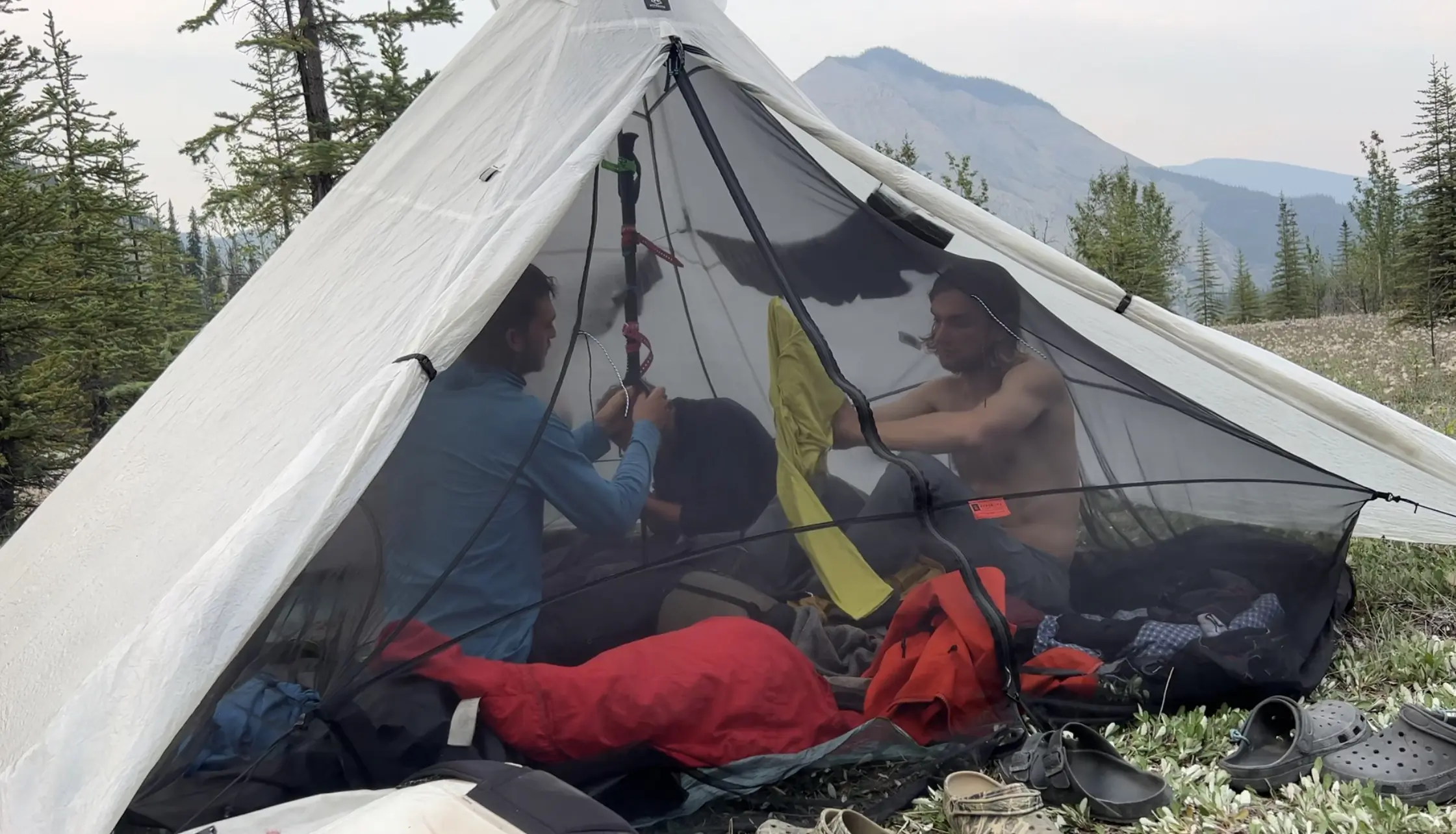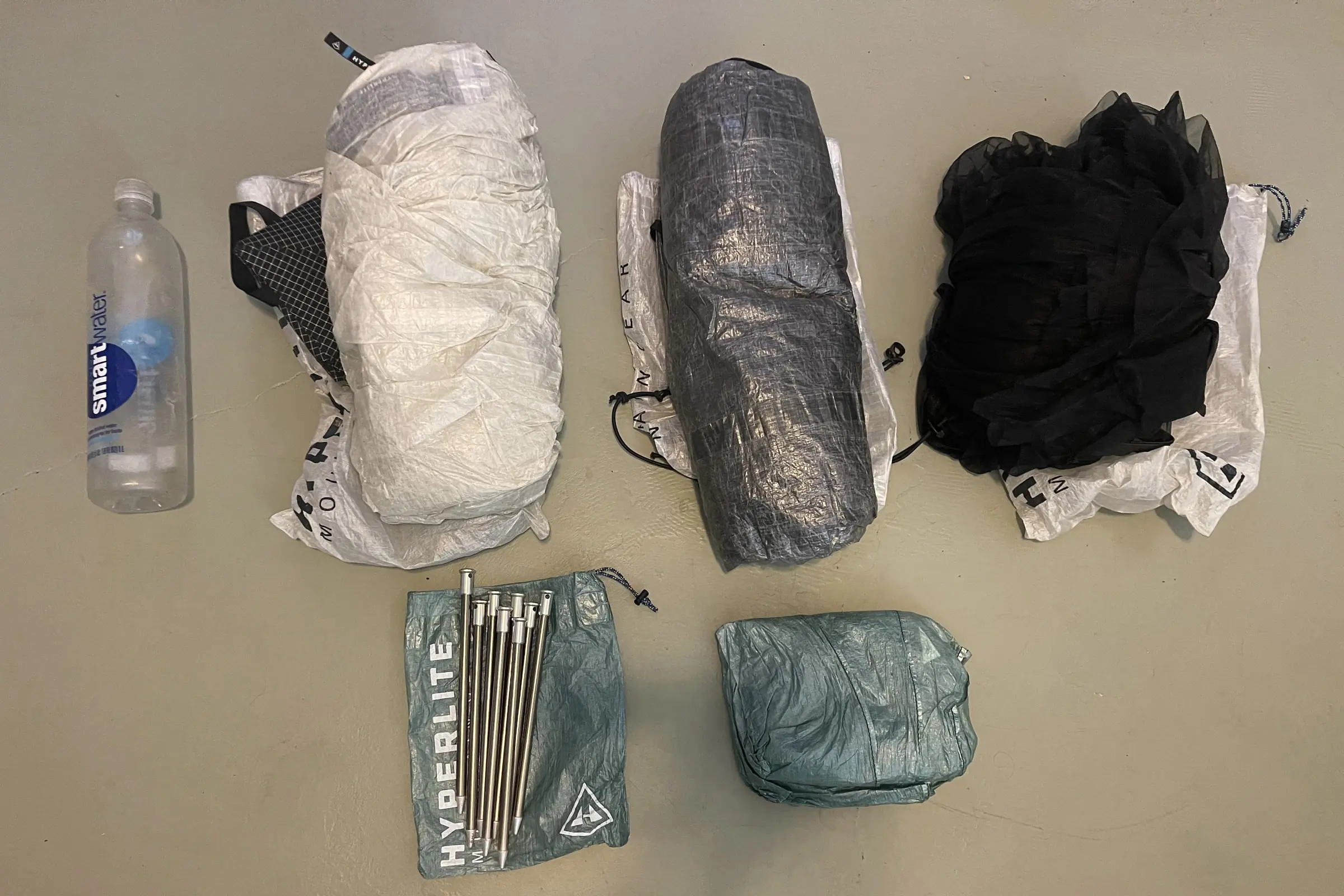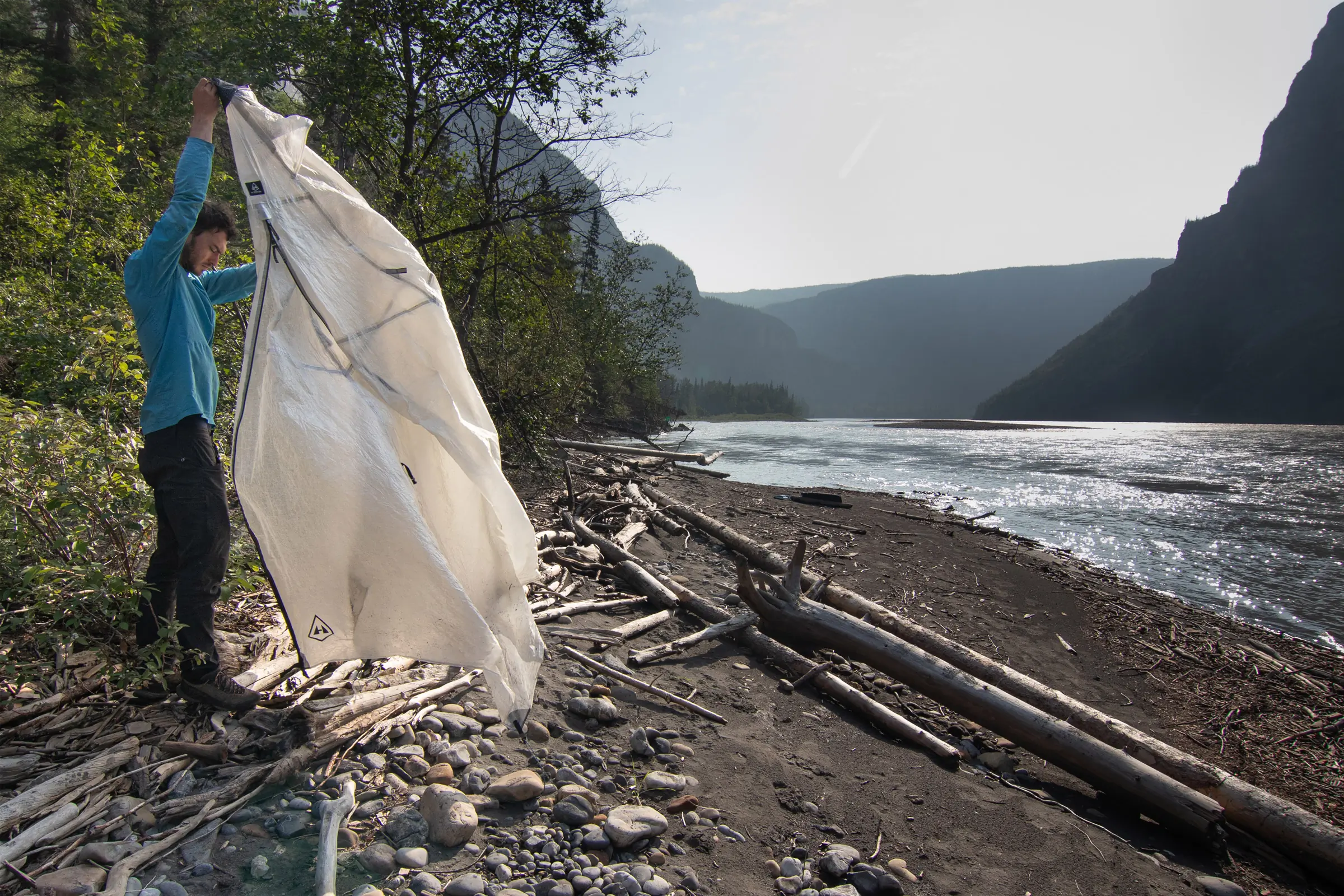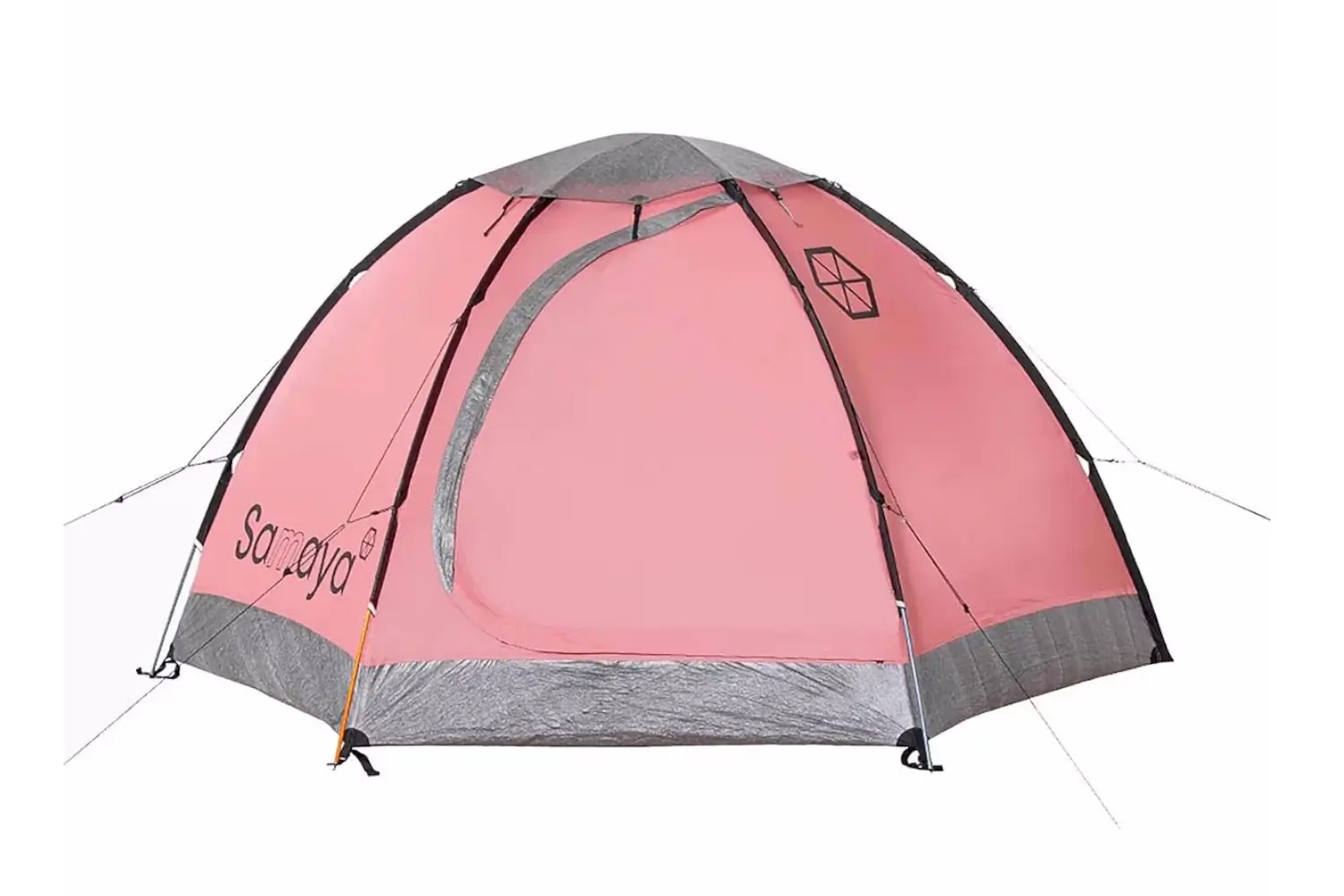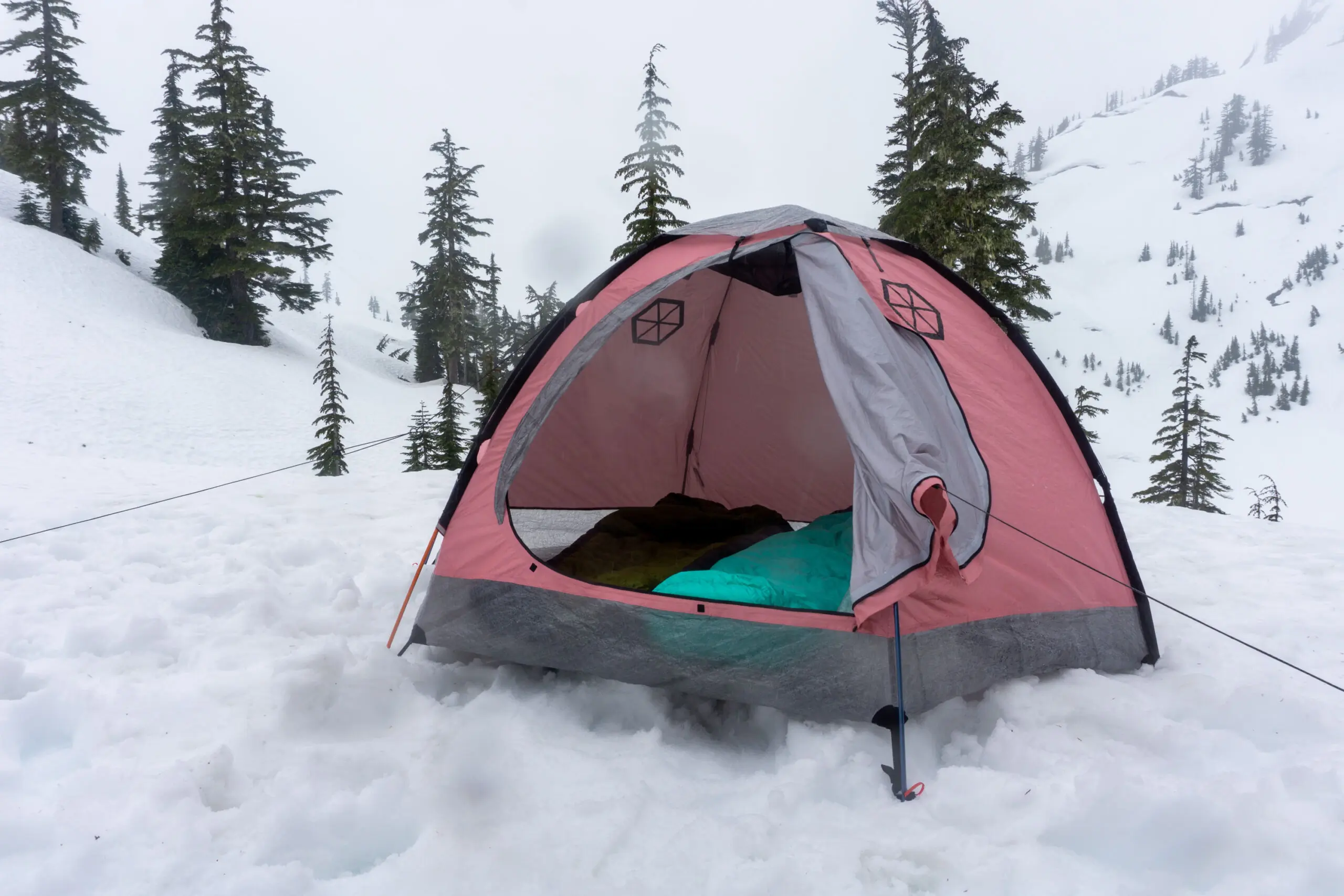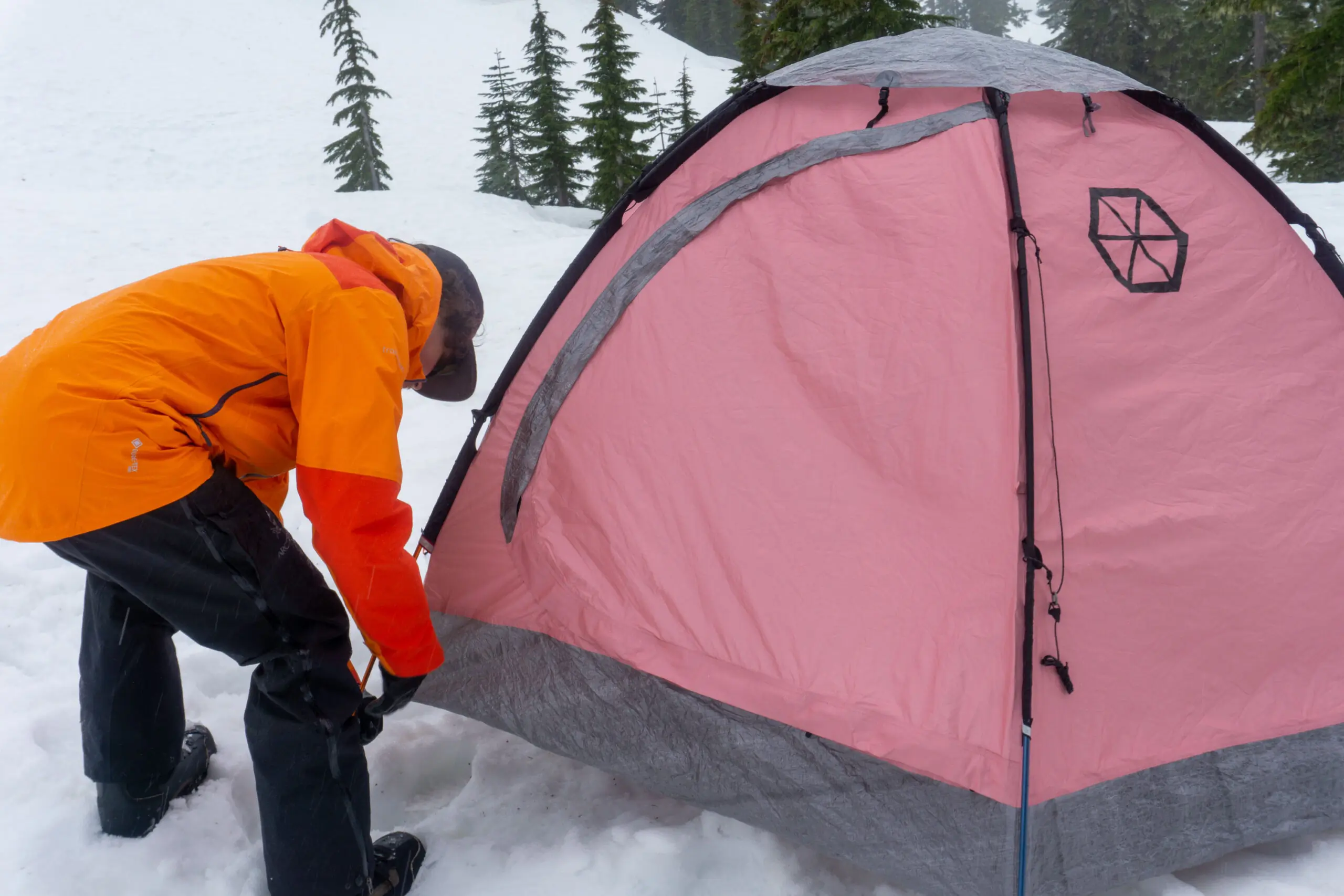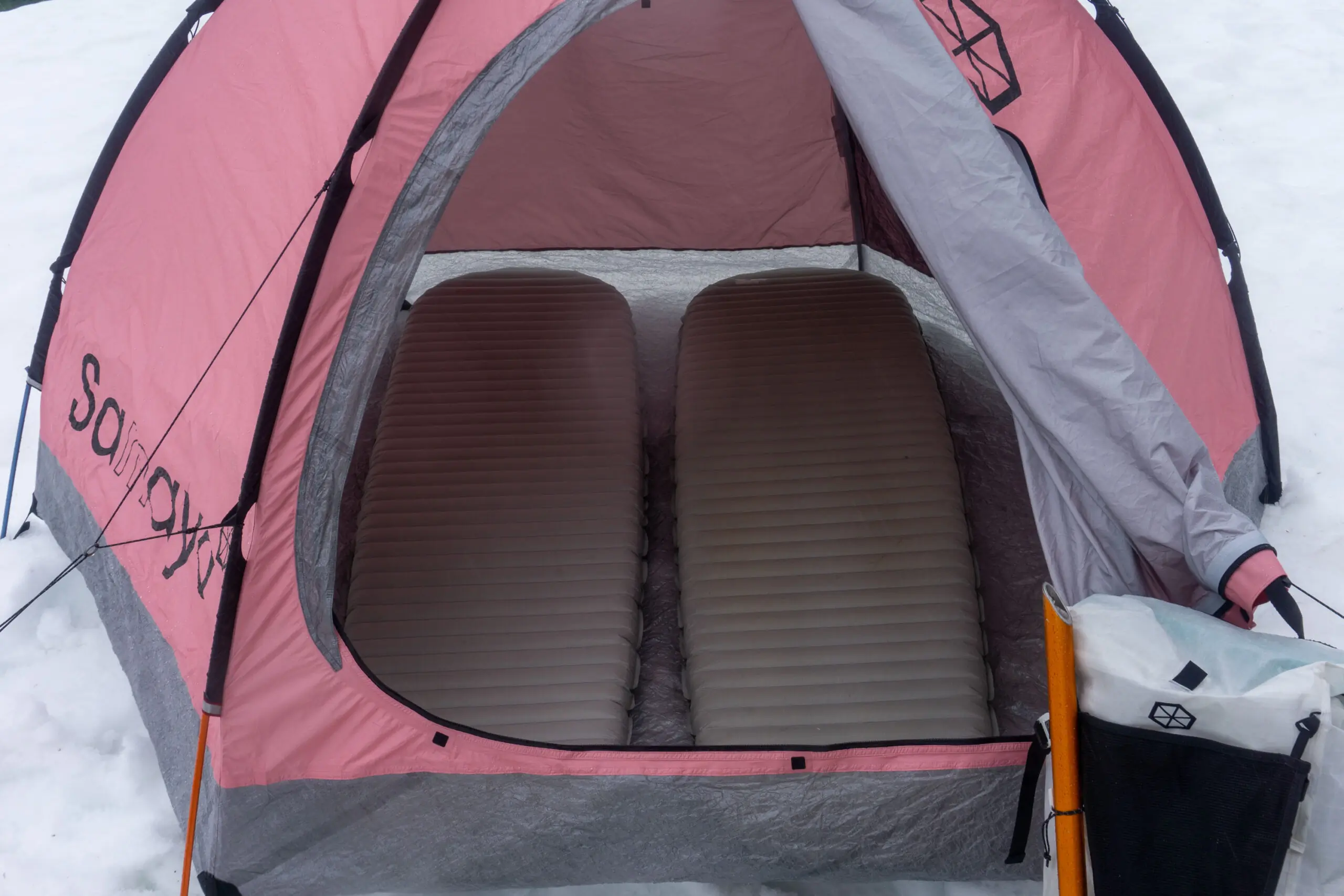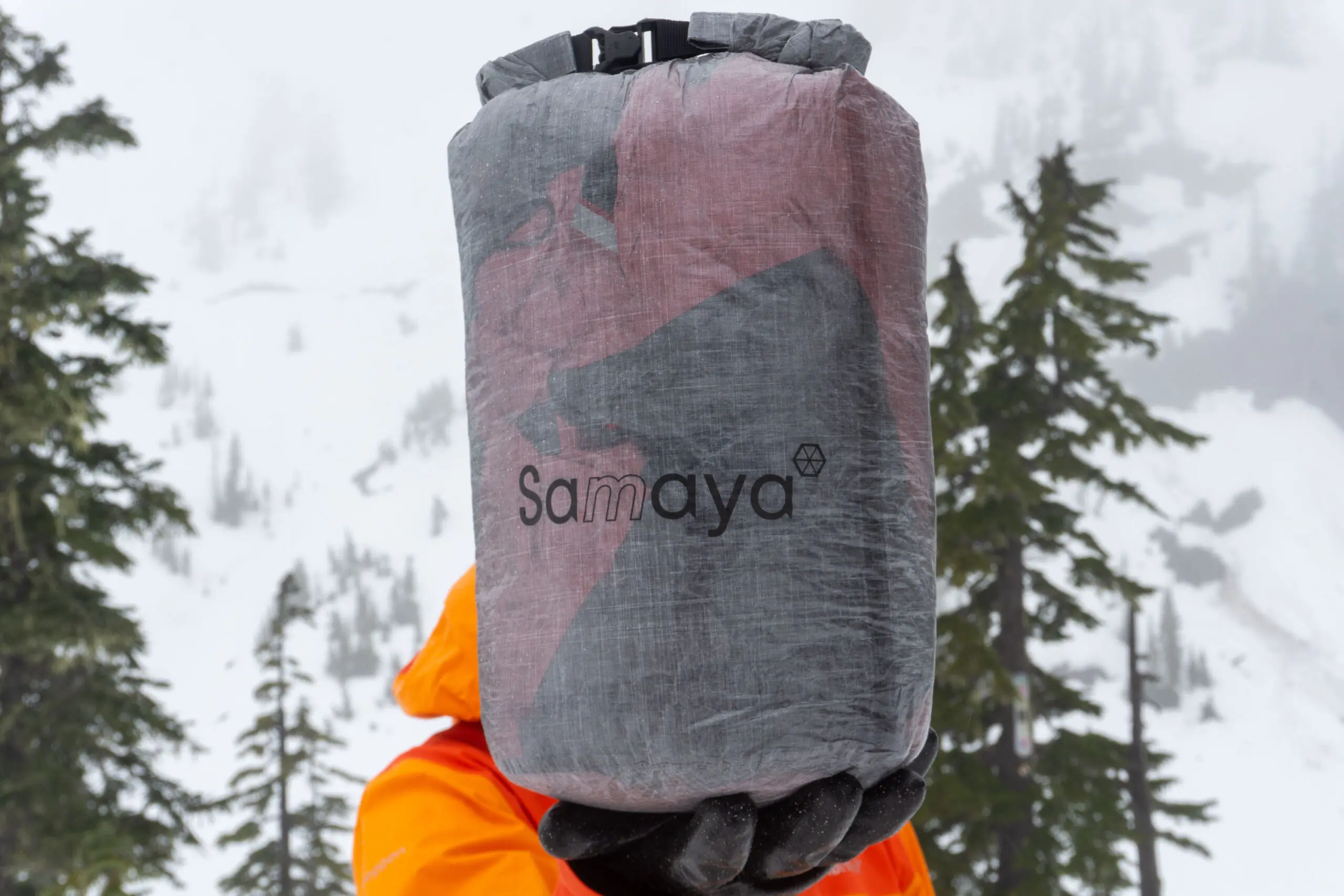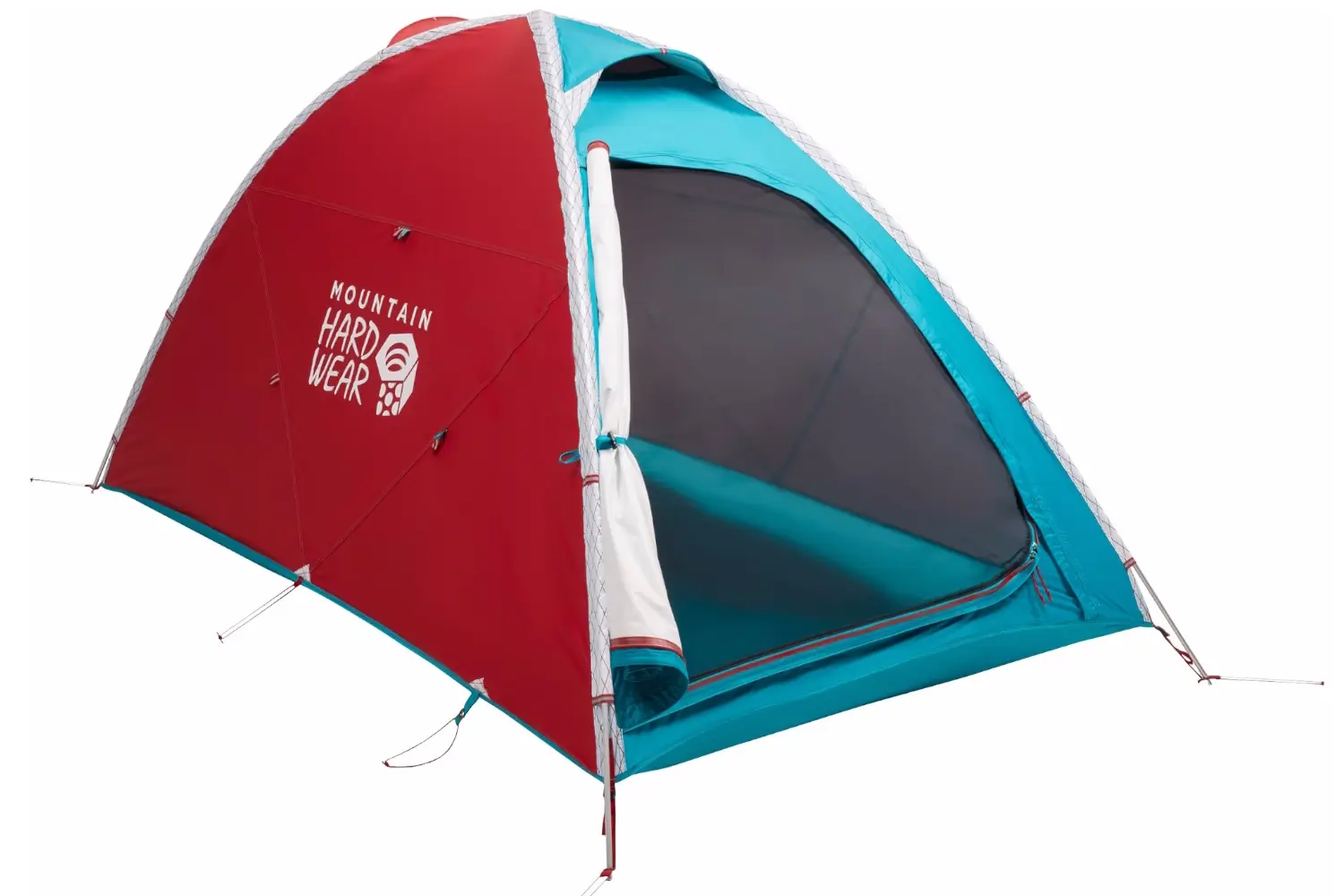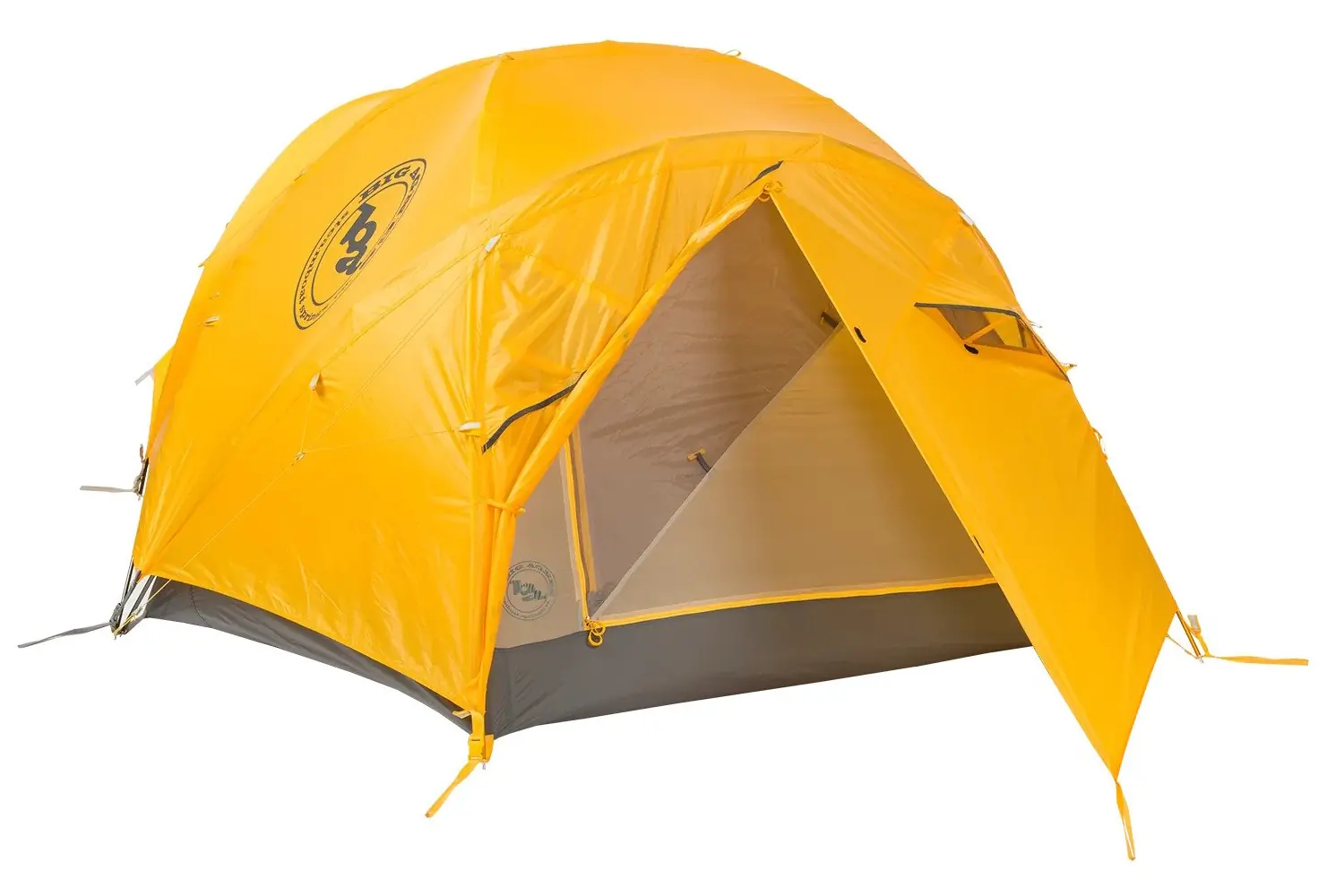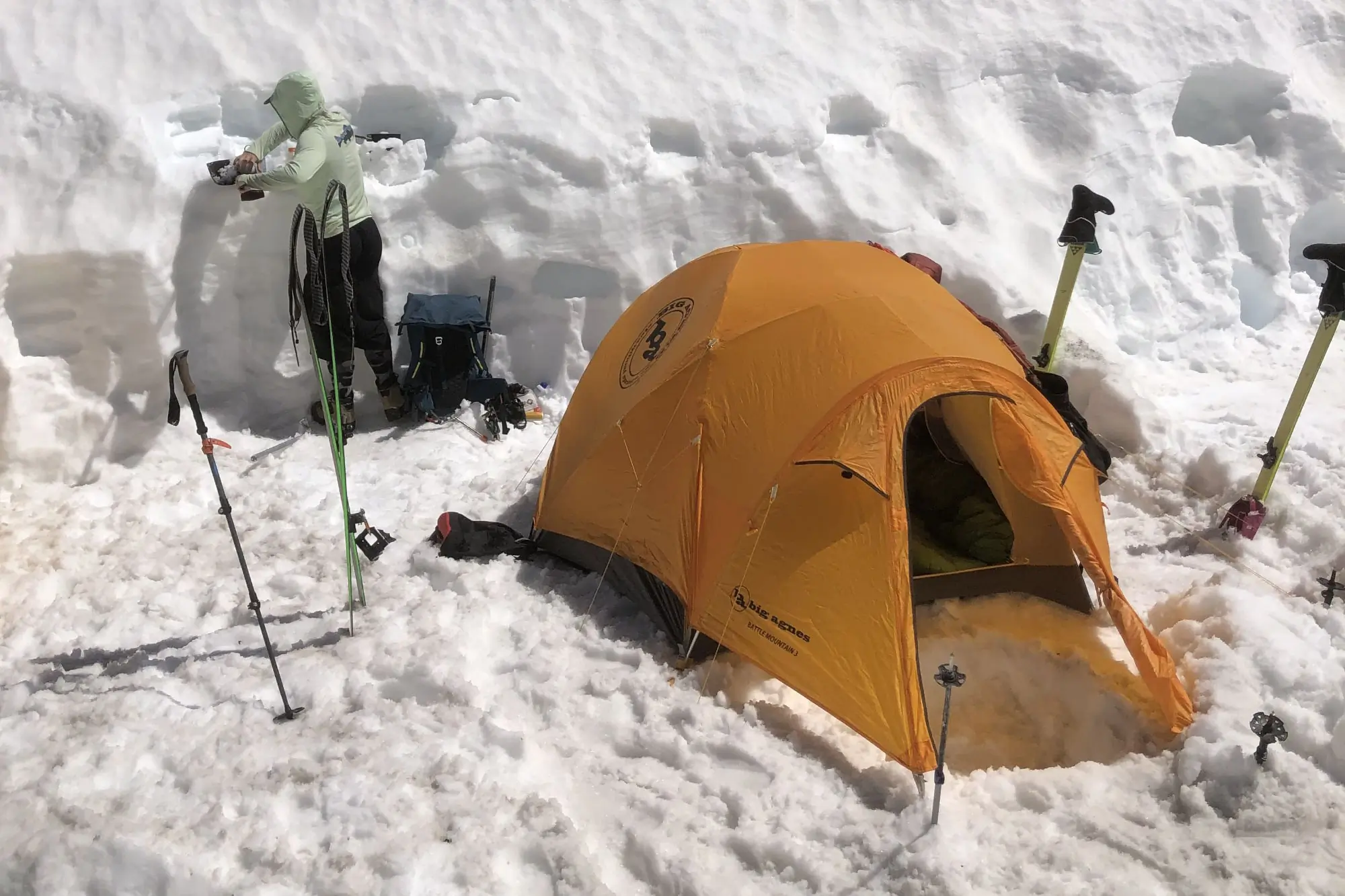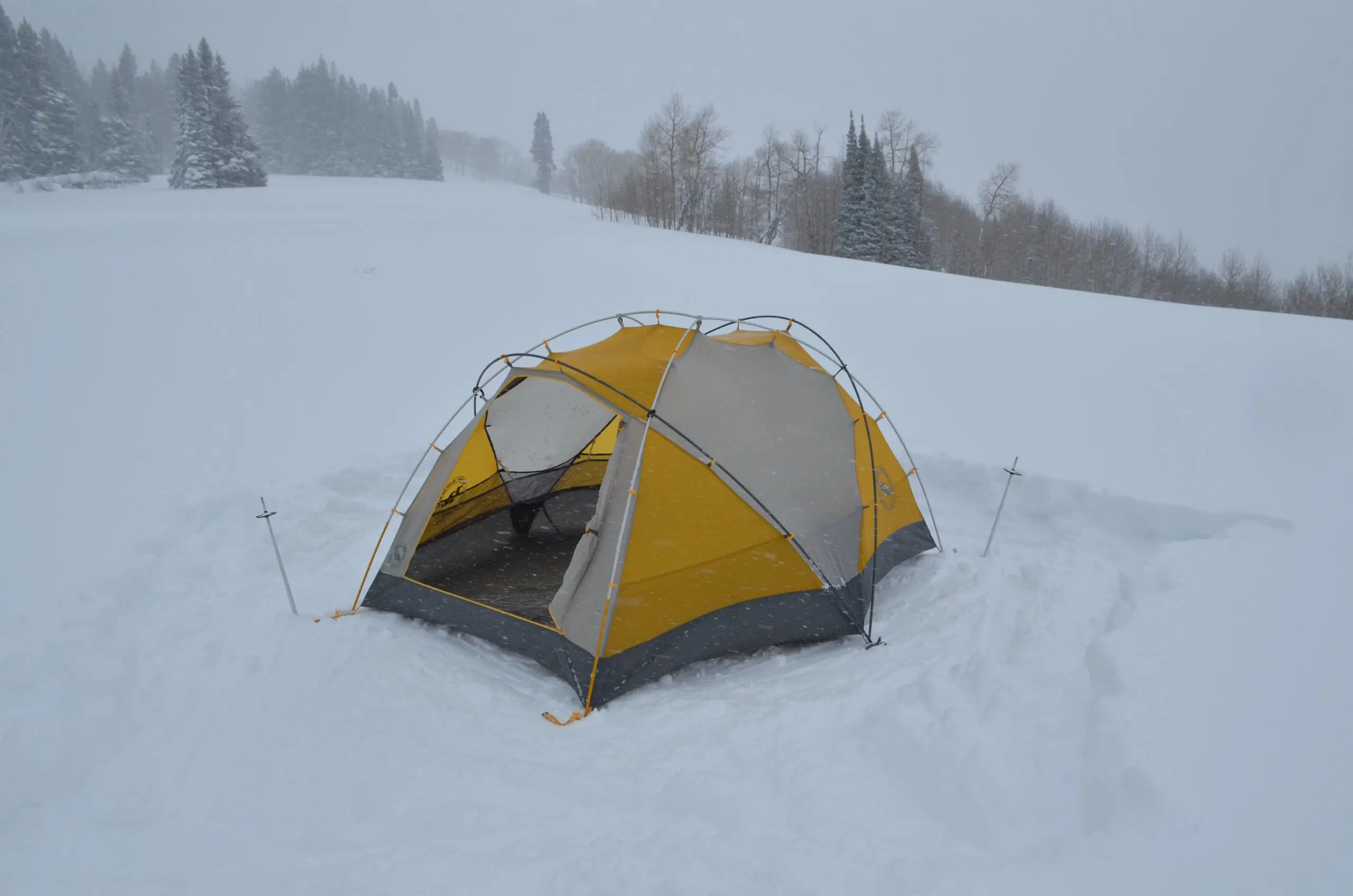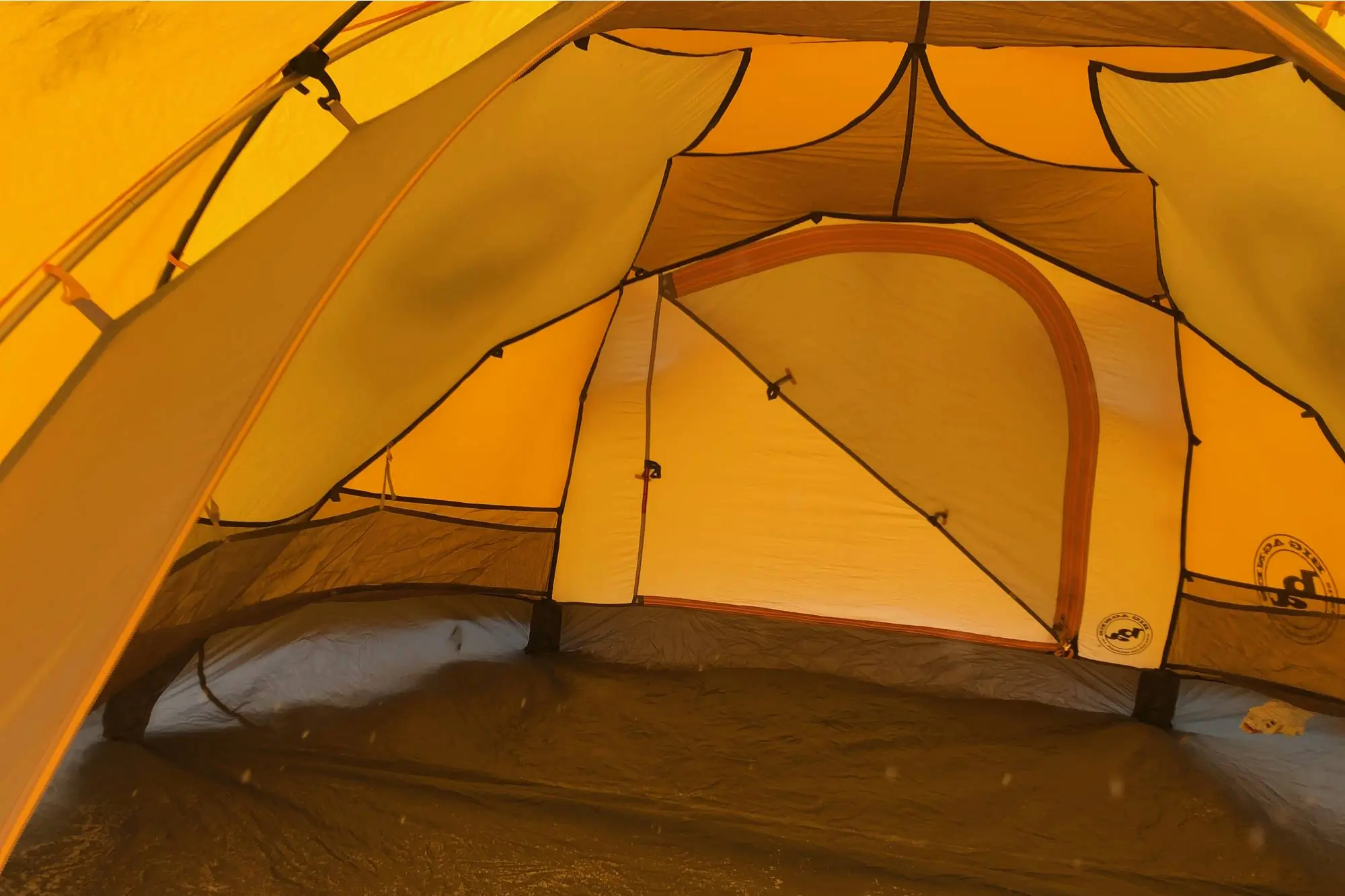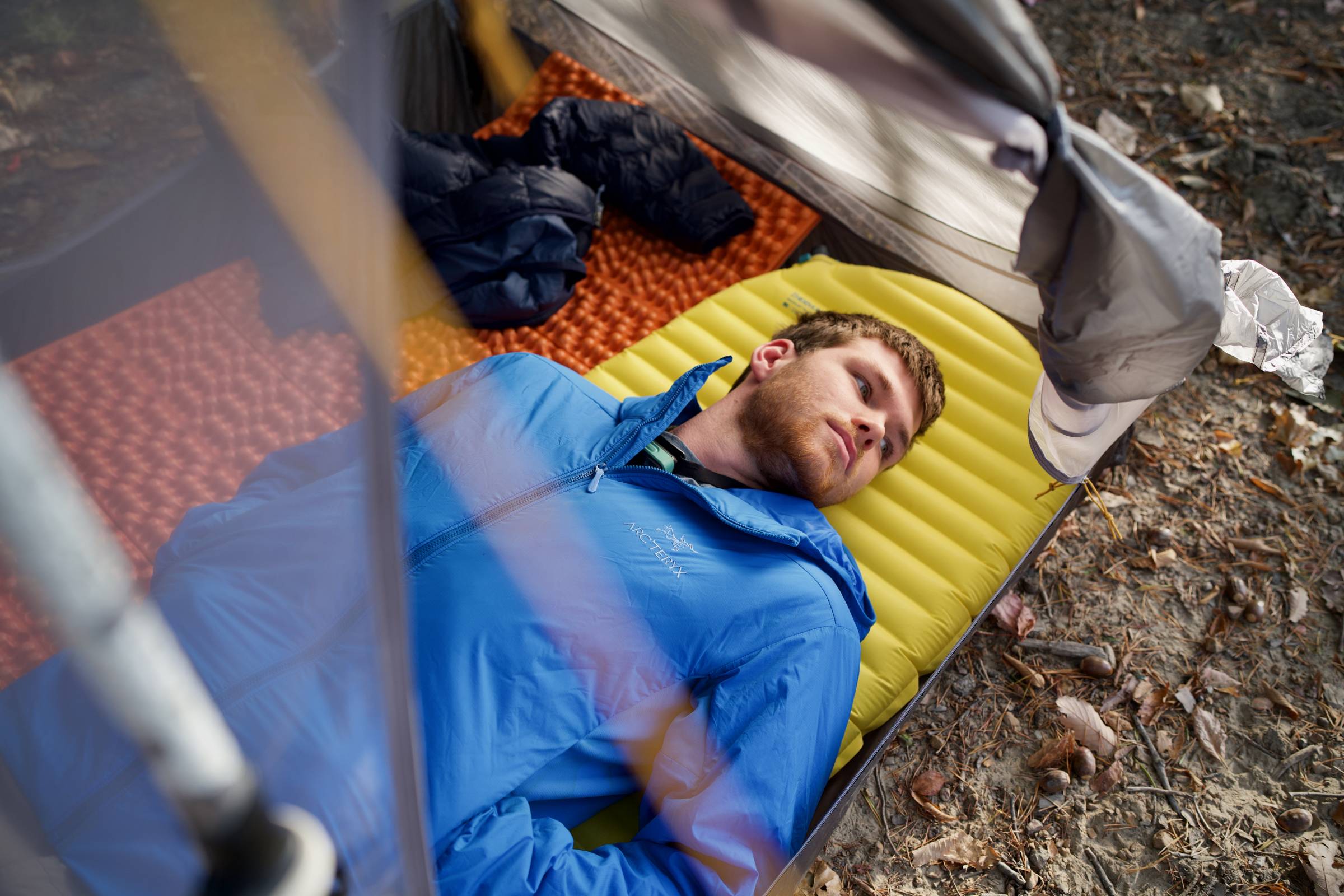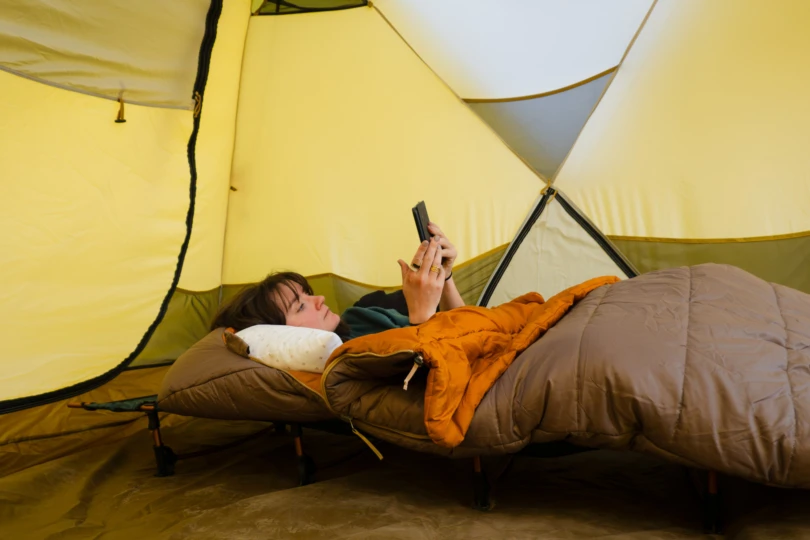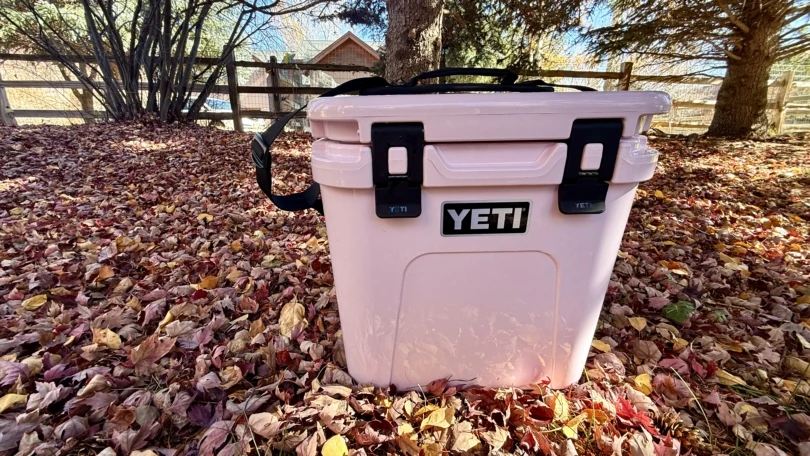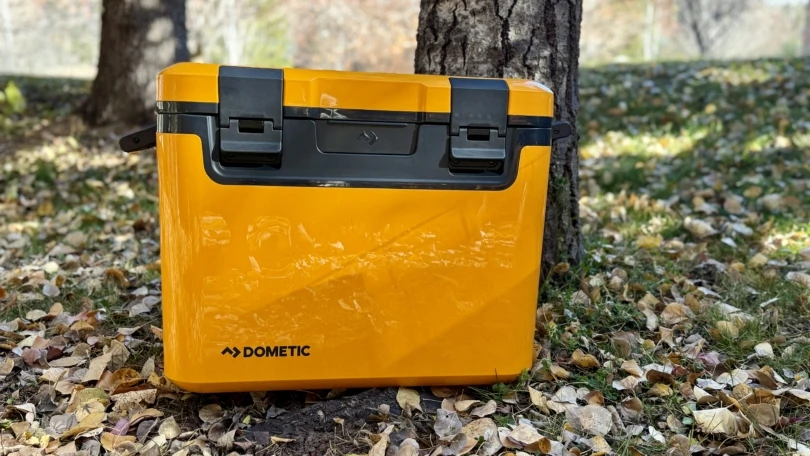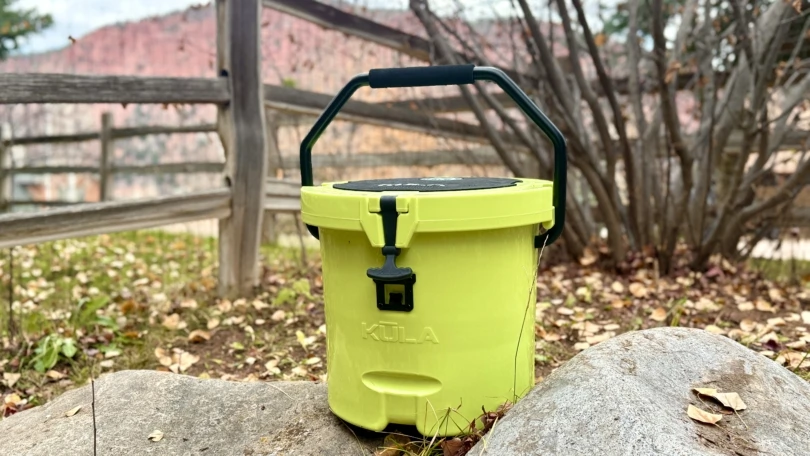Treading into the fourth season is no easy feat, and after you’ve slogged waist-deep, you’re going to need a shelter that’s as tough as the weather. The best 4-season tents are the elder shelters of the camping world and are toughened to put up with the worst of it on your next mountaineering, ski-touring, or alpine hunting trip.
After a few seasons spent in the high country, these are the tents I find myself reaching for time and time again. And while many 4-season tents can feel more like single-season tents, I considered shelters from all ends of the spectrum, from shoulder-season welterweights like the REI Co-op Arete ASL 2 that are keen to poke their noses into the alpine to expedition-ready brutes like the Mountain Hardwear Trango 3 Tent that will shoulder a 24-inch storm on Denali with ease.
Our experts are old hands at this and have tested more than 25 different burly shelters over the seasons — lugging them up the stratovolcanoes of the North Cascades and diving headlong with them into the refrigerated high valleys of Colorado. I sought out uncomfortable, persistent, and downright mean conditions to test these tents in and kept an eye out for important functional differences when it came to extreme weather resistance, durability, livability, and overall weight and packed size.
Editor’s Note: We recently updated this guide on November 17, 2025, to add my new favorite 4-season pyramid tarp, the SlingFin Cinder Cone, after testing it in Patagonia and above the Arctic Circle in Alaska. I also added the Hilleberg Nammatj 3, a highly versatile tunnel tent design that has proven its worth on deep expeditions.
The Best 4-Season Tents of 2025
Mountain Hardwear Trango 3 Tent
-
Weather Resistance
8.0
-
Living Space
8.0
-
Durability
8.0
-
Size & Weight
6.0
- Type: Basecamp and expeditions
- Weight: 11 lbs., 5.1 oz.
- Doors: 2
- Sleeps: 2
- Floor Area: 48 sq. ft.
- Vestibule Area: 15 sq. ft.
- Height: 45"
- Walls: Double
Pros
- Wall-to-wall deep mesh pockets are convenient and add structural strength
- Triple-reinforced window funnels in light and provides a bit of outdoor visibility
- Loops for internal clothesline
- Large vestibule entrance features a double door, so you can enter from either side
- Extra stakes included
Cons
- On the heavier side
- High volume for a regular backpacking trip
- Fewer ventilation ports on the fly compared to other designs
REI Co-op Arete ASL 2
-
Weather Resistance
7.0
-
Living Space
7.0
-
Durability
6.0
-
Size & Weight
7.0
- Type: Mountaineering and shoulder-season backpacking
- Weight: 6 lbs., 5 oz.
- Doors: 1
- Sleeps: 2
- Floor Area: 32.9 sq. ft.
- Vestibule Area: 8.7 sq. ft.
- Height: 43"
- Walls: Double
Pros
- Budget pricing
- Easy to set up
- Comfortable and spacious
- Easy to pack
- Handles winter weather well
Cons
- Smaller vestibule
- Height is a disadvantage in wind
- Fly doesn't drop to the ground quite far enough
SlingFin HotBox
-
Weather Resistance
7.0
-
Living Space
7.0
-
Durability
8.0
-
Size & Weight
9.0
- Type: High-altitude mountaineering
- Weight: 4 lbs., 2 oz.
- Doors: 1
- Sleeps: 2
- Floor Area: 26.8 sq. ft.
- Vestibule Area: 11 sq. ft. in side gear storage areas
- Height: 41"
- Walls: Double
Pros
- Bivy-style tent footprint with a full double-wall build
- Impressive resistance to condensation
- Side vestibules accessible through internal vents
- Internal guylines work with external WebTruss pole system for strong support
Cons
- Weight penalty compared to single-skin bivy tents
- Fly design requires smart set-up to avoid going broadside to the wind
Hilleberg Nammatj 3
-
Weather Resistance
8.0
-
Living Space
7.0
-
Durability
8.0
-
Size & Weight
9.0
- Type: Basecamp and expeditions
- Weight: 7 lbs., 4 oz.
- Doors: 1
- Sleeps: 3
- Floor area: 36.3 sq. ft.
- Vestibule area: 14 sq. ft.
- Height: 41"
- Walls: Double
Pros
- Highly versatile design isn't too heavy for backpacking
- Very weather-resistant, and can be run with stronger poles
- Super-tough Kerlon 1800 material
- Compact packed size
Cons
- Price
- Only one door
- GT version offers much larger vestibule space, but for extra $260
MSR Access 2
-
Weather Resistance
7.0
-
Living Space
6.0
-
Durability
6.0
-
Size & Weight
8.0
- Type: Treeline ski-mountaineering
- Weight: 4 lbs., 1 oz.
- Doors: 2
- Sleeps: 2
- Floor Area: 29 sq. ft.
- Vestibule Area: 17.5 sq. ft.
- Height: 42"
- Walls: Double
Pros
- Minimal pack size that rivals some backpacking tents
- Double wall and two door design bumps up livability
- Impressively sturdy for the weight
- Mostly solid interior fly holds in heat
- Studded with guy-out points
Cons
- Carbon fiber poles aren't the most durable, and need to be treated with care
- No interior room for gear, has to be stored out in vestibules
SlingFin Cinder Cone Pyramid Tent
-
Weather Resistance
8.0
-
Living Space
9.0
-
Durability
8.0
-
Size & Weight
9.0
- Type: Basecamp and expeditions
- Weight: 2 lbs., 7.4 oz.
- Doors: 1
- Sleeps: 4
- Floor area: 81 sq. ft.
- Vestibule area: N/A
- Height: 72"
- Walls: Single or double
Pros
- Super-versatile setup options
- Many ventilation ports and systems
- Rugged nylon 66 and ALUULA Durlyte construction
- Small packed size
Cons
- Will need to be seam sealed
- No hang loop on the exterior of the tarp
KUIU Storm Star 2 Person Tent
-
Weather Resistance
8.0
-
Living Space
7.0
-
Durability
7.0
-
Size & Weight
7.0
- Material: Ripstop Nylon
- Weight: 5 lbs., 5.2 oz.
- Claimed Capacity: 2 adults
- Max Height: 45"
- Season: Four season
Pros
- Spacious vestibules at each door
- Eight interior pockets provide space to organize small items
- Adjustable vents help manage condensation
- Dimension-Polyant pole sleeves are rugged
Cons
- Not an ideal construction for warm weather
- Requires muscle to get the clips onto the poles
Other 4-Season Tents We Trust
-
Weather Resistance
8.0
-
Living Space
7.0
-
Durability
7.0
-
Size & Weight
7.0
- Type: High-alpine mountaineering
- Weight: 5 lbs., 7 oz.
- Doors: 1.5
- Sleeps: 2
- Floor area: 26.7 sq. ft.
- Vestibule area: Unpublished
- Height: 42"
- Walls: Single
Pros
- Removable vestibule allows to strip weight while on route
- Tight footprint for setup on small ledges
- Easy to set up body with unique interior pole design
- Large vents and breathable fabric minimize condensation
Cons
- Finicky vestibule setup
- Vent construction causes snow to become trapped
- Heavy compared to true bivy-style tents
-
Weather Resistance
7.0
-
Living Space
8.0
-
Durability
7.0
-
Size & Weight
8.0
- Type: Basecamp and expeditions
- Weight: 1 lb., 11 oz.
- Doors: 1
- Sleeps: 4
- Floor Area: 85 sq. ft.
- Vestibule Area: N/A
- Height: 75"
- Walls: Single
Pros
- Very lightweight at sub-2 pounds
- Versatile with multiple interior accessories
- Four-season utility with correct guying out
- Can use a number of different poles to suspend
- Functions as a sleeping shelter, or group cook tent
Cons
- Doesn't pack down as small as some ultralight tents
- High price point
- No internal organization features
-
Weather Resistance
8.0
-
Living Space
8.0
-
Durability
7.0
-
Size & Weight
9.0
- Type: Alpinism and basecamp
- Weight: 3 lbs., 12 oz.
- Doors: 1
- Sleeps: 2-3
- Floor Area: 34.4 sq. ft.
- Vestibule Area: (Optional) 20.5 sq. ft.
- Height: 47"
- Walls: Single
Pros
- Waterproof-breathable Nanovent membrane canopy
- 2.5-person capacity provides plenty of space for kit
- Long and deep storage pockets
- Smart overhead vent system
- Self-equalizing guylines
Cons
- Top-dollar price
- Single door can lead to drips on entry
- Finicky setup
- Included stakes aren't confidence-inspiring
-
Weather Resistance
7.0
-
Living Space
5.0
-
Durability
7.0
-
Size & Weight
8.0
- Type: High-alpine mountaineering
- Weight: 3 lbs., 15.9 oz.
- Doors: 1
- Sleeps: 2
- Floor Area: 25.3 sq. ft.
- Vestibule Area: N/A
- Height: 45"
- Walls: Single
Pros
- Tension Arch design holds strong against gales
- Proper 10,000 mm waterproofed canopy
- Bug-net second doors aids in ventilation
- Many guy-out points for securing tent down to ledge
- D-shaped door doesn't lay on floor when opened
Cons
- Very minimal floor plan requires tip-to-tail sleeping arrangements
- Ventilation won't be the best in liquid-precip situations
-
Weather Resistance
7.0
-
Living Space
6.0
-
Durability
6.0
-
Size & Weight
6.0
- Type: Mountaineering and expeditions
- Weight: 8 lbs., 13 oz.
- Doors: 2
- Sleeps: 3
- Floor Area: 44 sq. ft.
- Vestibule Area: 13 + 6 sq. ft.
- Height: 44"
- Walls: Double
Pros
- Durable enough to withstand harsh winter conditions
- Lightweight compared to many 4-season tents
- Fast Fly mode allows for faster setup and lighter weight
- Comfortably fits three people and gear
- Self-equalizing guy points make it easy to pull tent taut
Cons
- Heavier than most 3-season tents
- Not super breathable in warmer months
- Other comparable tents have more floor area
- Type: Backpacking and mountaineering
- Weight: 5 lbs., 3 oz.
- Doors: 1
- Sleeps: 3 adults
- Floor Area: 36.5 sq. ft.
- Vestibule Area: 13 sq. ft.
- Height: 45"
- Walls: Double
Pros
- Nice 3/4 season option for backpackers headed into winter
- Good airflow and moisture management
- Great headroom
- Fairly lightweight compared to other options
Cons
- Too short in length for some folks
- Zippers aren’t all burly and seem a bit cheap
- Only one door can be a drawback for some travelers
4-Season Tents Comparison Chart
| 4-Season Tent | Price | Weight | Floor Area | Walls | Type |
|---|---|---|---|---|---|
| Mountain Hardwear Trango 3 Tent | $1,050 | 11 lbs., 5.1 oz. | 48 sq. ft. | Double | Basecamp and expeditions |
| REI Co-op Arete ASL 2 | $449 | 6 lbs., 5 oz. | 32.9 sq. ft. | Double | Treeline winter camping |
| SlingFin HotBox | $750 | 4 lbs., 2 oz. | 26.8 sq. ft. | Double | Light and fast alpinism |
| Hilleberg Nammatj 3 | $1,115 | 7 lbs., 4 oz. | 36.3 sq. ft. | Double | Basecamp and expeditions |
| MSR Access 2 | $800 | 4 lbs., 1 oz. | 29 sq. ft. | Double | Treeline ski-mountaineering |
| SlingFin Cinder Cone Pyramid Tent | $490 | 2 lbs., 7.4 oz. | 81 sq. ft. | Single | Basecamp and expeditions |
| KUIU Storm Star 2 Person Tent | $599 | 5 lbs., 5.2 oz. | 29.5 sq. ft. | Double | Alpine hunting and backpacking |
| The North Face Assault 2 | $800 | 5 lbs., 7 oz. | 26.7 sq. ft. | Single | High-alpine mountaineering |
| Hyperlite Mountain Gear UltaMid 4 | $849 | 1 lb., 11.2 oz. | 85 sq. ft. | Single | Alpinism and basecamp |
| Samaya 2.5 Tent | $1,200 | 3 lbs., 12 oz. | 34.4 sq. ft. | Single | Light and fast alpinism |
| Mountain Hardwear AC 2 | $750 | 3 lbs., 15.9 oz. | 25.3 sq. ft. | Single | High-alpine mountaineering |
| Big Agnes Battle Mountain 3 | $900 | 8 lbs., 13 oz. | 44 sq. ft. | Double | Mountaineering and expeditions |
| NEMO Equipment Kunai 3 | $699 | 5 lbs., 3 oz. | 36.5 sq. ft. | Double | Backpacking and mountaineering |
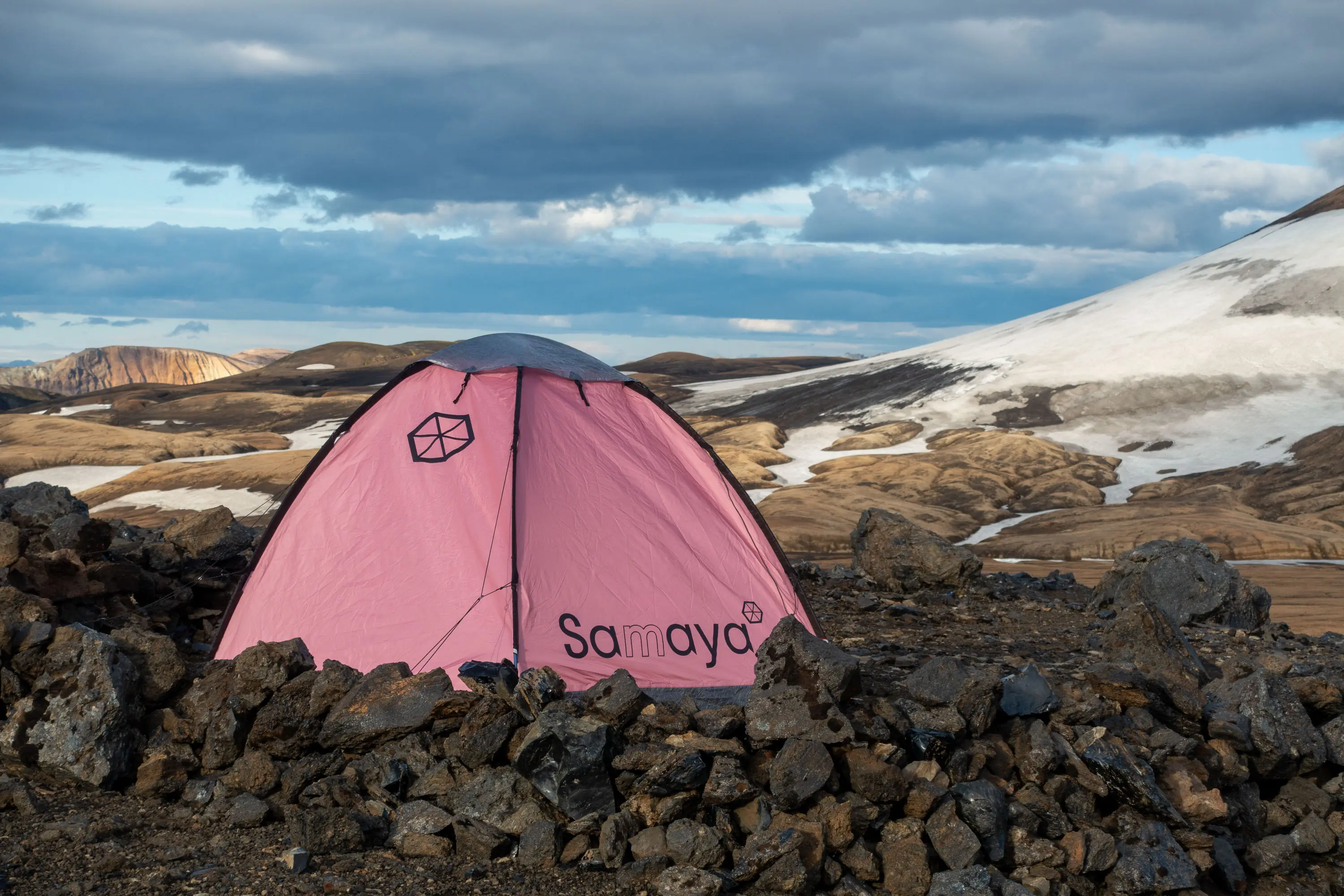
How We Tested the Best 4-Season Tents
Proving the mettle of 4-season tents is no joke. From driving snowstorms to freezing temps — you have to be fully immersed in the conditions that make them expedition-worthy. To create this guide, the GearJunkie team does just that, and every year, we put each model through its paces in brutal conditions — trying to find the limit of these bomb-proof shelters so you don’t have to.
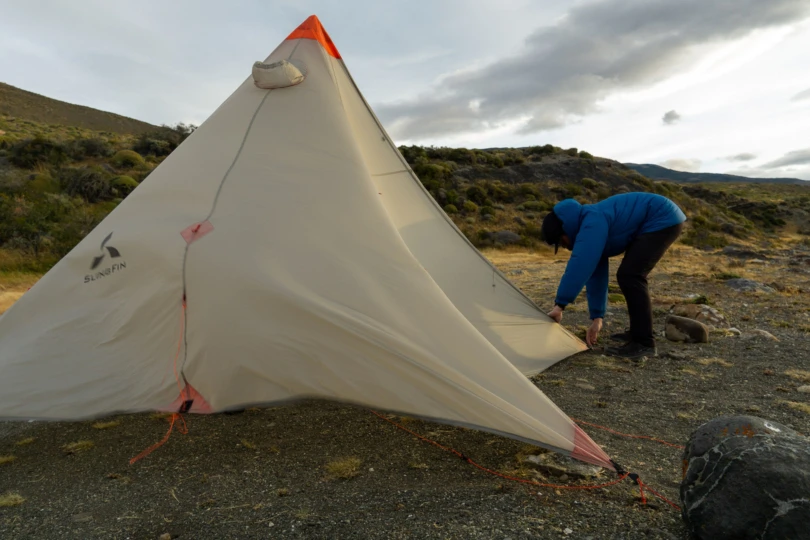



Our Testing Process and Testing Locations
The majority of our testing occurs on Kulshan — also known as Mt. Baker — a 10,786-foot Pacific Northwest volcano that generates its own weather, fueled by moisture-rich storms off the Pacific. From this test bed, we are able to experience all manner of alpine conditions, including 24-hour snowfall measured in feet, gusts that will knock over rock walls, and sometimes, electrical storms.
During testing, we scrutinized each tent with some specific criteria in mind — durability, extreme weather resistance, and livability — to offer a variety of options for different objectives. We also strive to test 4-season shelters in a variety of climates, as the dry and frigid alpine of Colorado is a whole different ball game compared to the tempest-whipped western flanks of the Cascades. Our notes were also compared with the knowledge of experienced AMGA-certified mountain guides to ensure that these are the best 4-season tents available today.
Whether you’re making an assault into the Alaska Range or overlanding into the backcountry on a hunting excursion, we’d feel confident recommending anything on this list for the toughest of adventures.
Out of the field, we also stacked these tents up side by side in a handful of bench tests to get the nitty gritty on specs, and ensure that manufacturers’ claims are accurate. This includes measuring weights in-house, comparing floor area when using standard and wide-width sleeping pads, looking at packed volumes, and comparing the ease of set-up when providing the tent to testers with no instructions.
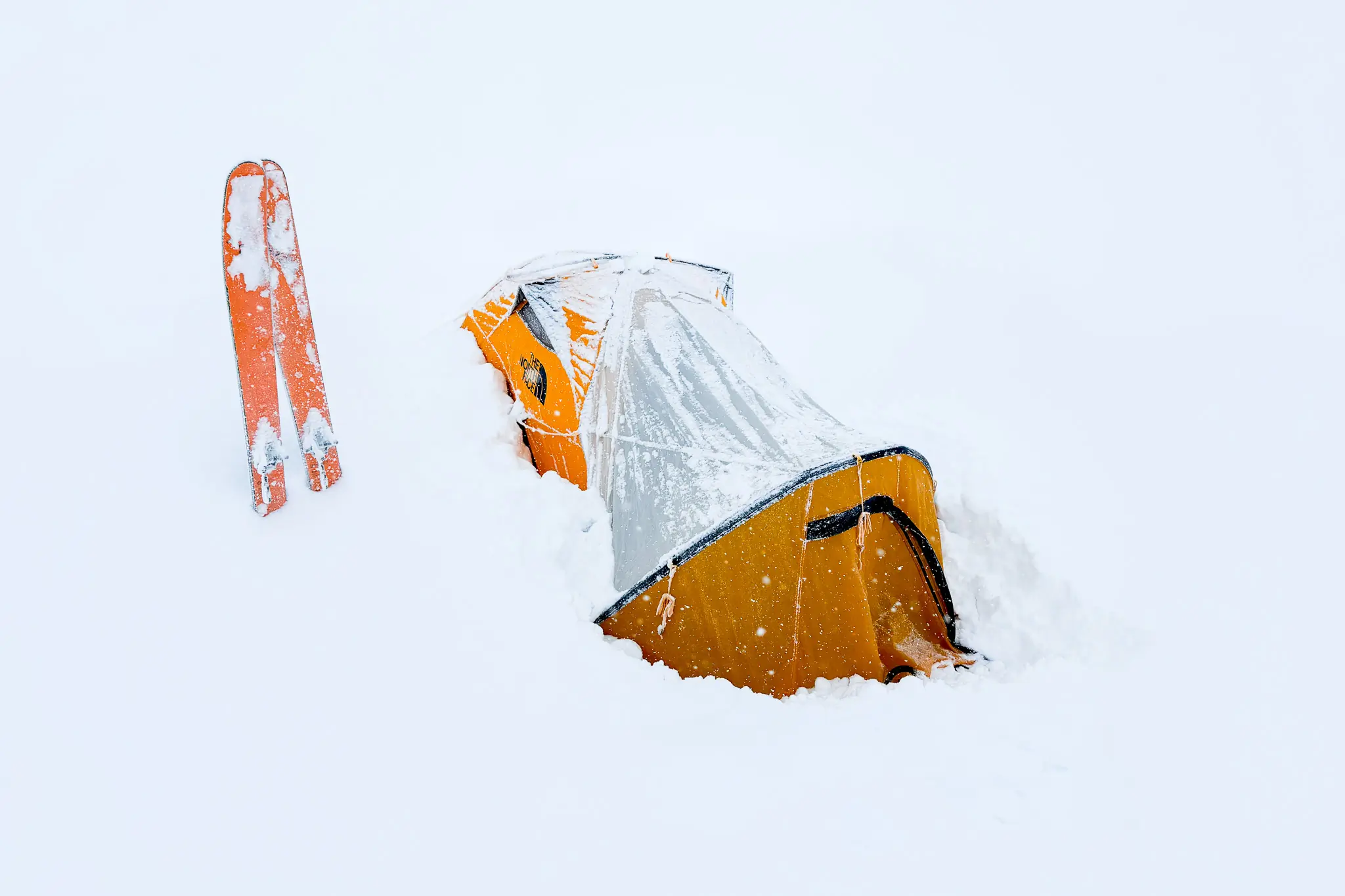



Our Expert Testers
Our team includes mountaineers, alpine climbers, skiers, splitboarders, and high-country hunters of every stripe, living and recreating in the ice chests of the Rockies, Sierra, and Cascades. Senior snow sports Editor Morgan Tilton grew up in the mountains of Colorado and makes year-round travel into the mountains look easy — living and playing in the hills around Southwest Colorado. Tilton has been putting skis, snowshoes, and mountaineering boots on the ground for this guide since 2021 and began our look into 4-season shelters with a slate of 10 of the best from across the spectrum.
In addition, I, Senior Editor Nick Belcaster, also tied in and punched in my fair share of the route in order to test these tents — climbing and mountaineering in the North Cascades of Washington State and British Columbia. I have several years of experience helping to lead the Equipment arm of one of the country’s larger mountaineering guide operations, the American Alpine Institute.
My experience also extends to having coordinated the equipping of a season of guided Denali ascents for around 100 people, which involved everything from rigging expedition sleds to ensuring it all had a ski plane to fly out on. There’s little space in a turboprop Beaver for sub-par tents — and even less in our closets — which demands a hard look at what really works out on the ice.
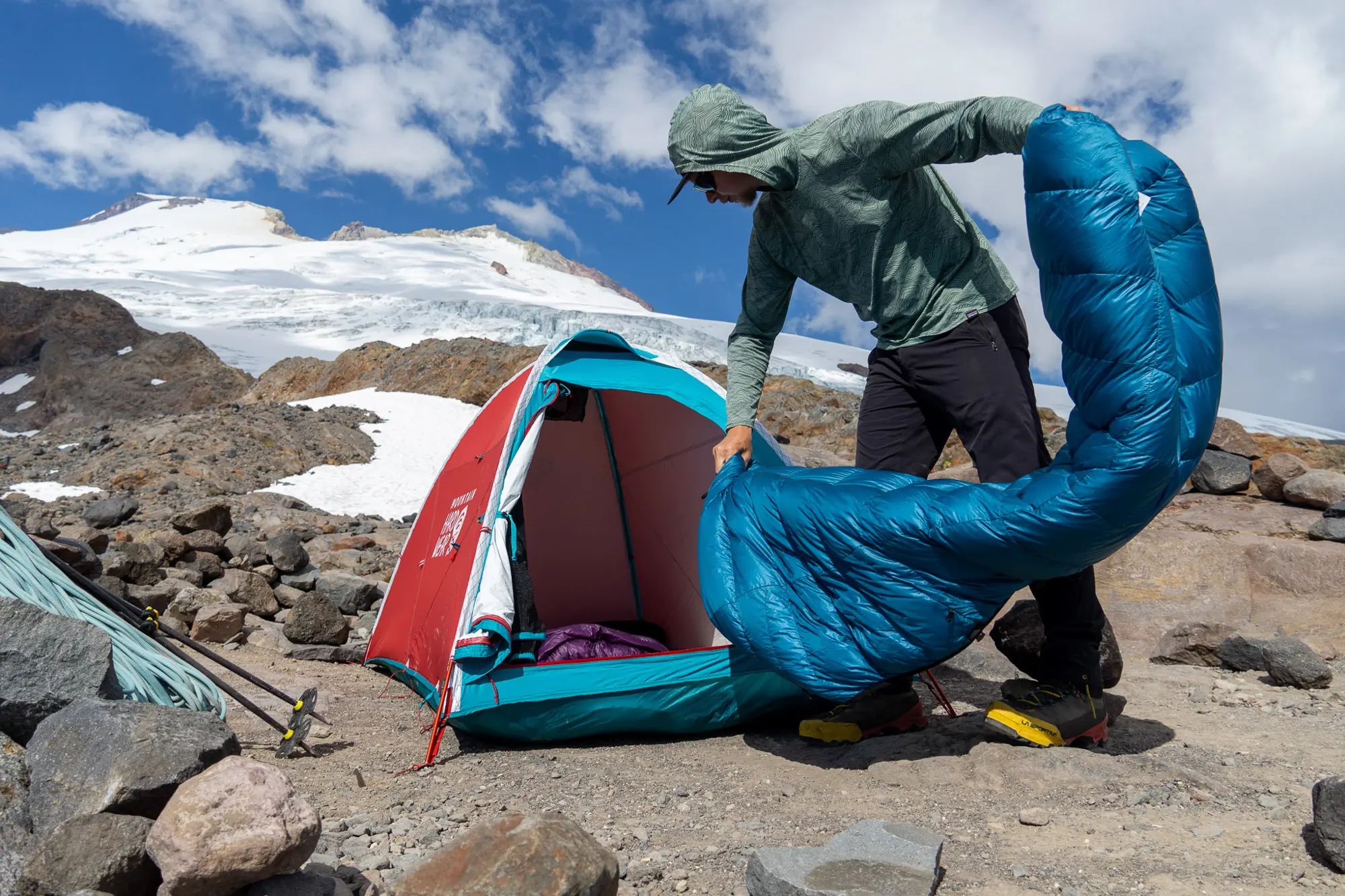



Buyer’s Guide: How to Choose a 4-Season Tent
The burliest four-season tents are constructed to withstand brutal winds, shed heavy snowpack or rain, and comfortably store gear in a protected cubby. The tradeoff? These designs can often retain summertime warmth and humidity.
Year-round tents are protective across variable and tough conditions, but they’re not the most airy for hotter days or nights. Also, the high-end construction requires beefier material that sports a bigger bill than most three-season builds.
All options considered, these heavier-set tents are a dependable choice for mountaineers, expeditionists, and other seasoned outdoor travelers who want a dependable structure any day of the year that provides protection in the harshest elements. If you’re looking for something that’ll be better for fairer conditions (and nicer to carry on your back), check out our guides on the Best Backpacking Tents and Best Ultralight Tents. And if you’re having trouble deciding what kind of tent you need, our primer on How to Choose the Best Tent for Camping or Backpacking is illuminating.
Seasonality
Tents are typically built for three-season or four-season conditions. A three-season tent will suffice if you plan on using your tent across the spring, summer, and fall.
The infrastructure of a three-season tent can handle rain and light snow. Usually, these builds are not ideal for heavy snow, super-high winds, or vicious storms — like the blizzard conditions you might face while ski mountaineering. A four-season tent is a better choice for full-on winter, the weight of snow, and strong winds.
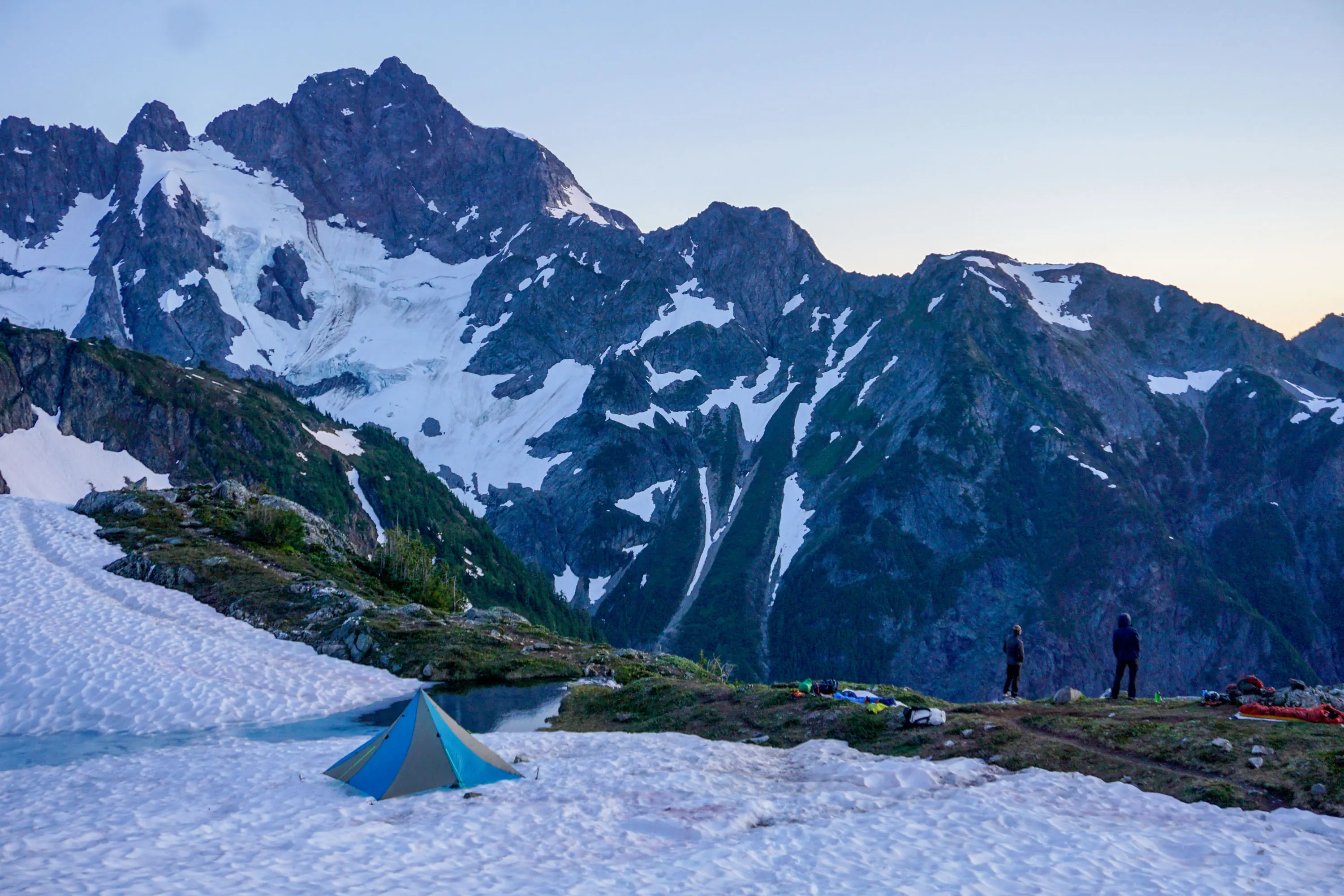



Types of 4-Season Tents
A spectrum of designs exists within the four-season tent category. For instance, our lineup here includes year-round tents for vehicles from truck beds to rooftops. Folks often seek four-season tents for backpacking and hunting in inclement weather in the winter, along alpine routes, or during the shoulder seasons.
People need four-season shelters for mountaineering, with or without skis, or winter backcountry trips. Some of these tents are better suited above or below treeline, while others are perfect for polar exploration.
Mountaineering tents are often streamlined and constructed with a single wall to save weight and easily move camp day to day on a long, challenging expedition. In contrast, a basecamp tent is roomier and weighs more.
Basecamp tents are a comfortable choice for a shorter haul to a lower point where adventurers need to spend time acclimating to altitude or waiting for a safe weather window. Most of these designs are double-walled to help enhance ventilation and prevent condensation, and a broad range of capacities exist to house large groups or a ton of gear.
Tunnel tents can withstand brutal wind — think 70 mph — better than dome or wedge-style tents, which can hit a limit of around 50 mph. But tunnel tents are not freestanding.
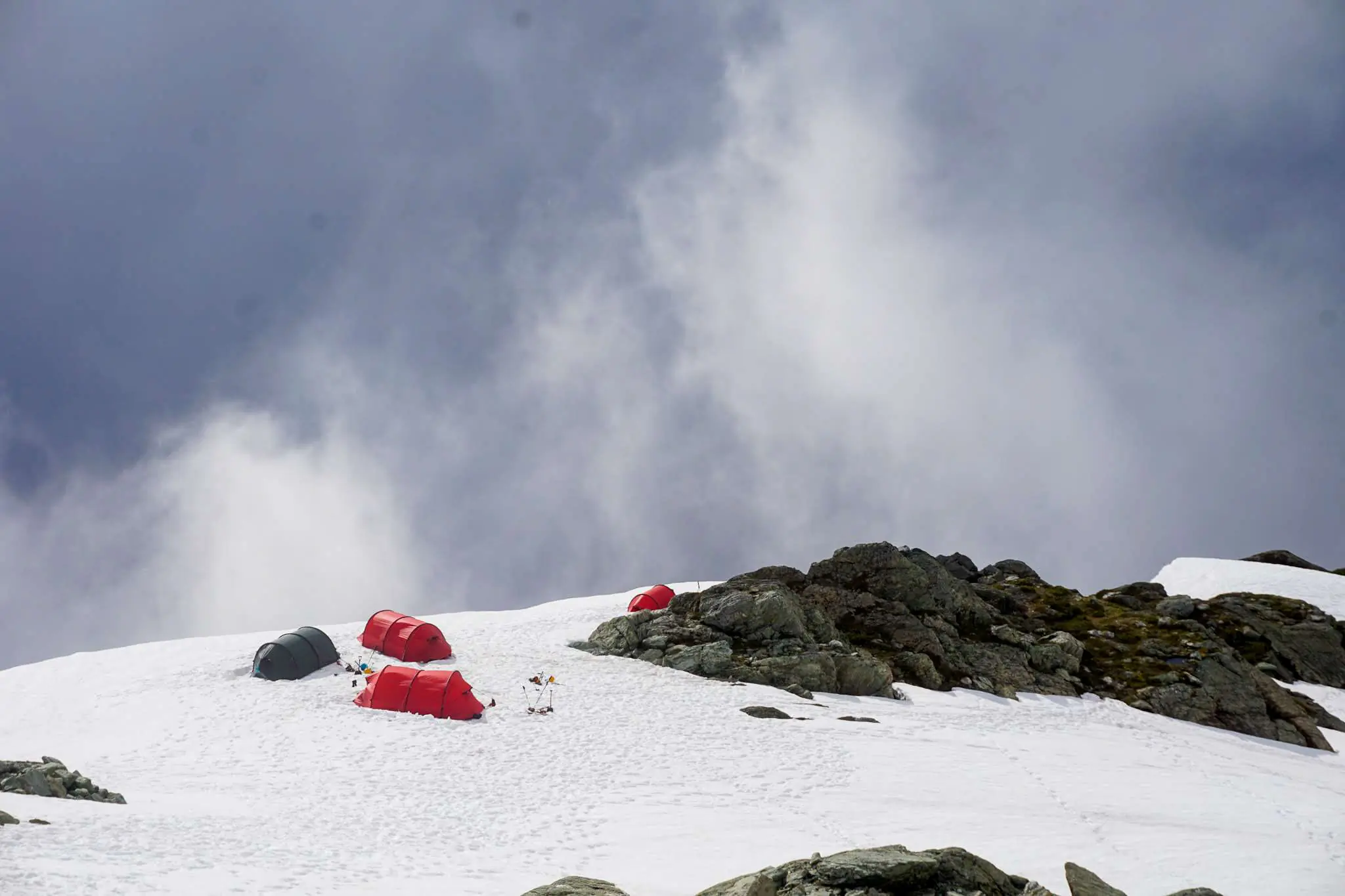



Capacity & Doors
Folks aiming for lighter-weight four-season tents can invest in a one- or two-person design. Three- and four-person tents are a common choice, too, while some four-season basecamp options are large enough to fit big groups of six or more people.
Your ideal tent capacity depends on the number of campers, their overall size, and how much equipment you need to store inside the tent or vestibule. Brands generally categorize their tents based on the number of people, but the dimensions — length, width, height, and vestibule size — vary from tent to tent.
The tent’s peak height, which is where the tent is the tallest, also differs between each model. It’s nice to have a generous height in a four-season tent when the weather turns south and you really need to hunker down.
Get out your tape measure as you research. If you’re tall or wide, pay extra attention to the width and length of the tent’s dimensions as well as the area of your sleeping pad. And consider how much storage space you’ll want for gear. It’s also a good idea to visit a local retailer where the tent can be set up for you to check out in person.
You’ll want to consider whether one or two doors are more functional for you. Two doors can be helpful for each sleeper to have their own exit and entry or to access gear organized in multiple vestibules. But eliminating a door can cut weight and cost.


Vestibule & Interior Storage
To help protect equipment, four-season tents have one or two zipper-enclosed vestibule doors — but not all vestibules are created equal. They each have a unique volume, height, and shape.
Some vestibule entries include a double door like on the Mountain Hardwear Trango 3 Tent or interior loops to hang items like in the MSR Remote 2. The Remote 2 also features a storm flap along the bottom and a ventilation window along the top, which are strategic additions.
Compare your body and sleeping pad measurements to the tent’s width and length. If your expedition requires a lot of gear, it can be nice — or necessary — to have extra room to bring cargo inside the cabin. Otherwise, the vestibule can be a great spot to leave the pack or boots. The foyer is also a good place to cook over a compact, portable stove if you’re stuck in the tent due to hair-raising weather.
Inside, four-season tents usually have mesh pockets along the wall to store items like a phone or headlamp. Again, these features are not universal. The Remote 2 only has two mesh pockets, while the Mountain Hardwear Trango 3 Tent has more than 10 pouches that line the walls and ceiling.
Generally, lighter tents don’t have as many storage compartments as heavier tent designs. Another nice touch is interior loops for hanging a clothesline, carabiners, or to clip a lantern.
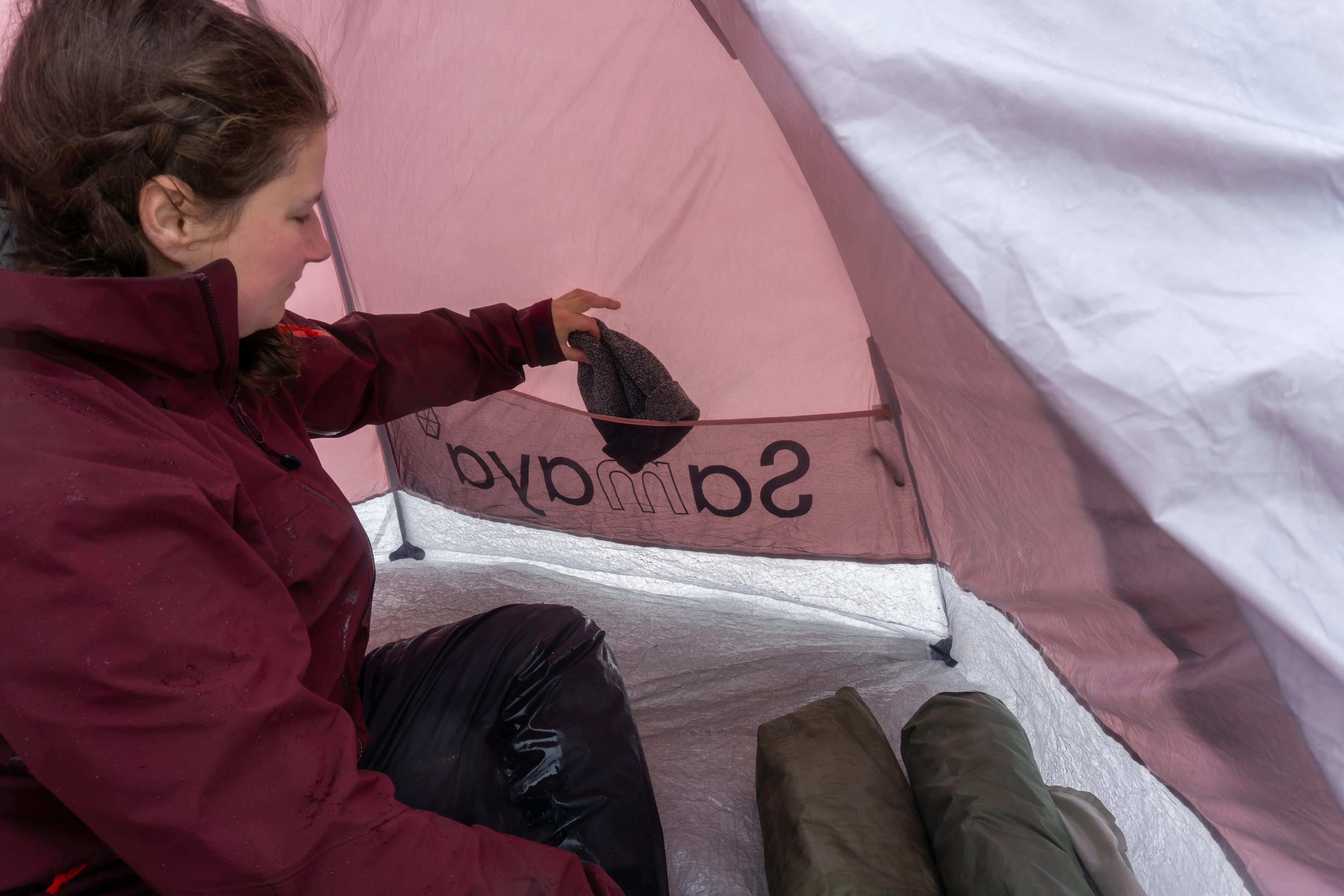



Weight
A dwelling’s weight hinges on the materials, size, and whether the walls are single or double. Most four-season tent specs include a trail or minimal weight and a packaged weight — the former doesn’t include stakes, guylines, or stuff sacks. (We highlight the minimal weight of the products listed in this guide.)
One of the lightest four-season tents on the market is the Hilleberg Akto 1 Tent for a single person, tapping in at 3 pounds, 12 ounces. By comparison, the Mountain Hardwear Trango 3 Tent is 11 pounds, 5 ounces, but significantly more storm-worthy and spacious.
The sizes and weights of the tents in our guide vary widely. The heaviest option is a basecamp tent with room for three adults that weighs close to 9 pounds. Our lightest choice is the Samaya 2.5 Tent, which utilizes Dyneema Composite Fabric and is only 3 pounds 12 ounces. Weight is most crucial if you’ll be hauling your tent for consecutive days and want to minimize the heft of your load.
Regardless of weight, you’ll need to select a tent that delivers the protection and features you need — like two doors, the capacity for three people, or a large vestibule. Generally, the lighter a tent is, the less headroom there is. But cutting ounces isn’t as important as being adequately protected in the conditions where you plan to go.
If you’re picking a four-season rooftop tent that will be stationary, the weight matters less but needs to be within your manufacturer’s roof rack requirements.
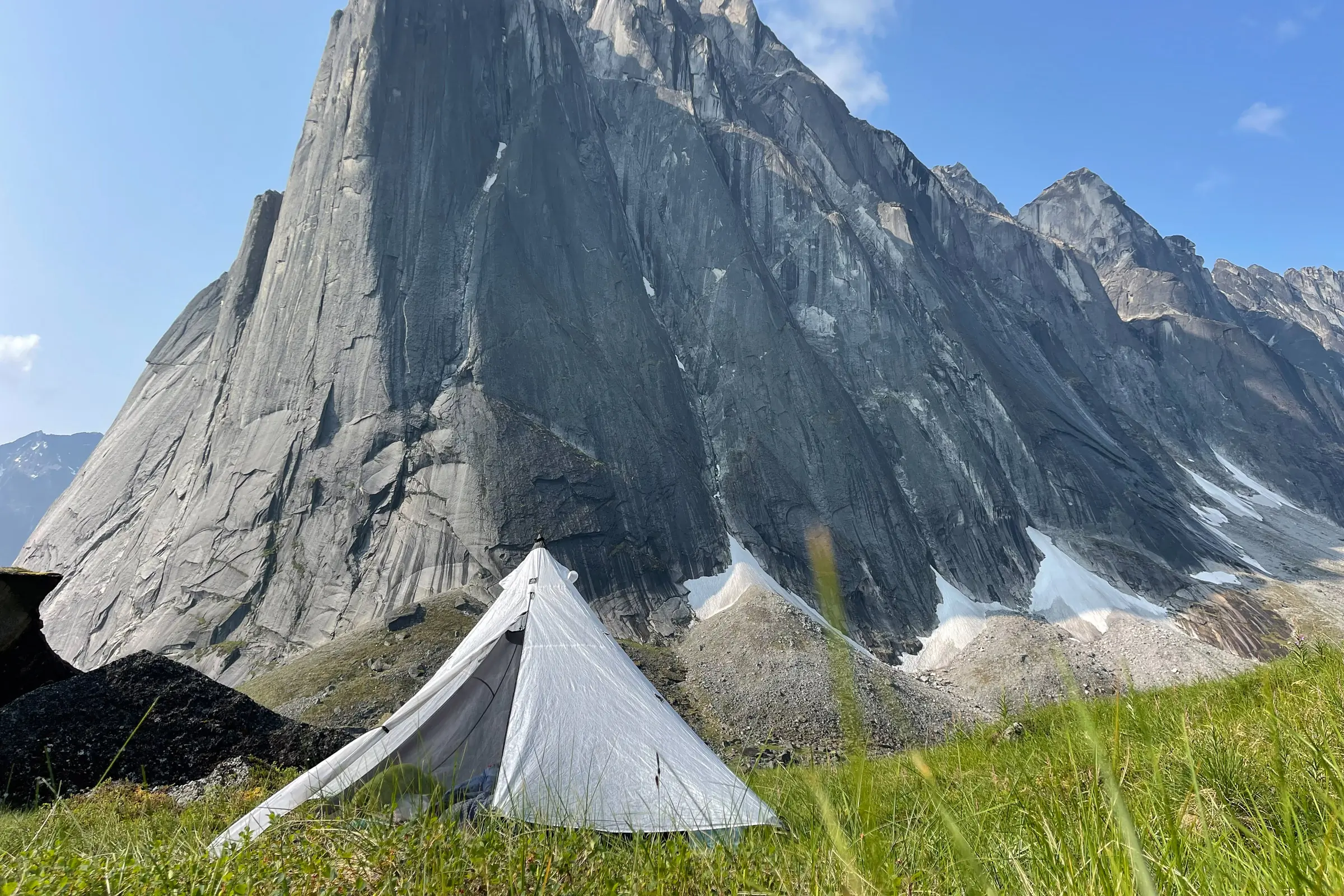



Ventilation
The nemesis of four-season tents is the challenge of providing excellent ventilation. While ultralight tents often feature walls constructed of mesh, storm doors that furl back, or no walls at all for airflow, four-season tents don’t. These structures feature minimal windows to optimize structural protection and warmth in wind, rain, and heavy snow.
Walls constructed of mesh decrease the overall temperature inside the tent, so the majority of four-season tent walls are solid fabric. Simultaneously, if you’re posted up inside your tent for a bout of stormy weather, you’ll want good ventilation to minimize indoor frost and moisture.
Well-designed four-season tents have integrated passive ventilation ports or windows in the tent and rainfly. These vents can keep out snow while minimizing condensation, so the inside of the tent doesn’t feel clammy. The MSR Remote 2 fly features four vents with snow flaps, which provide ventilation and help reduce condensation while keeping out spindrift.
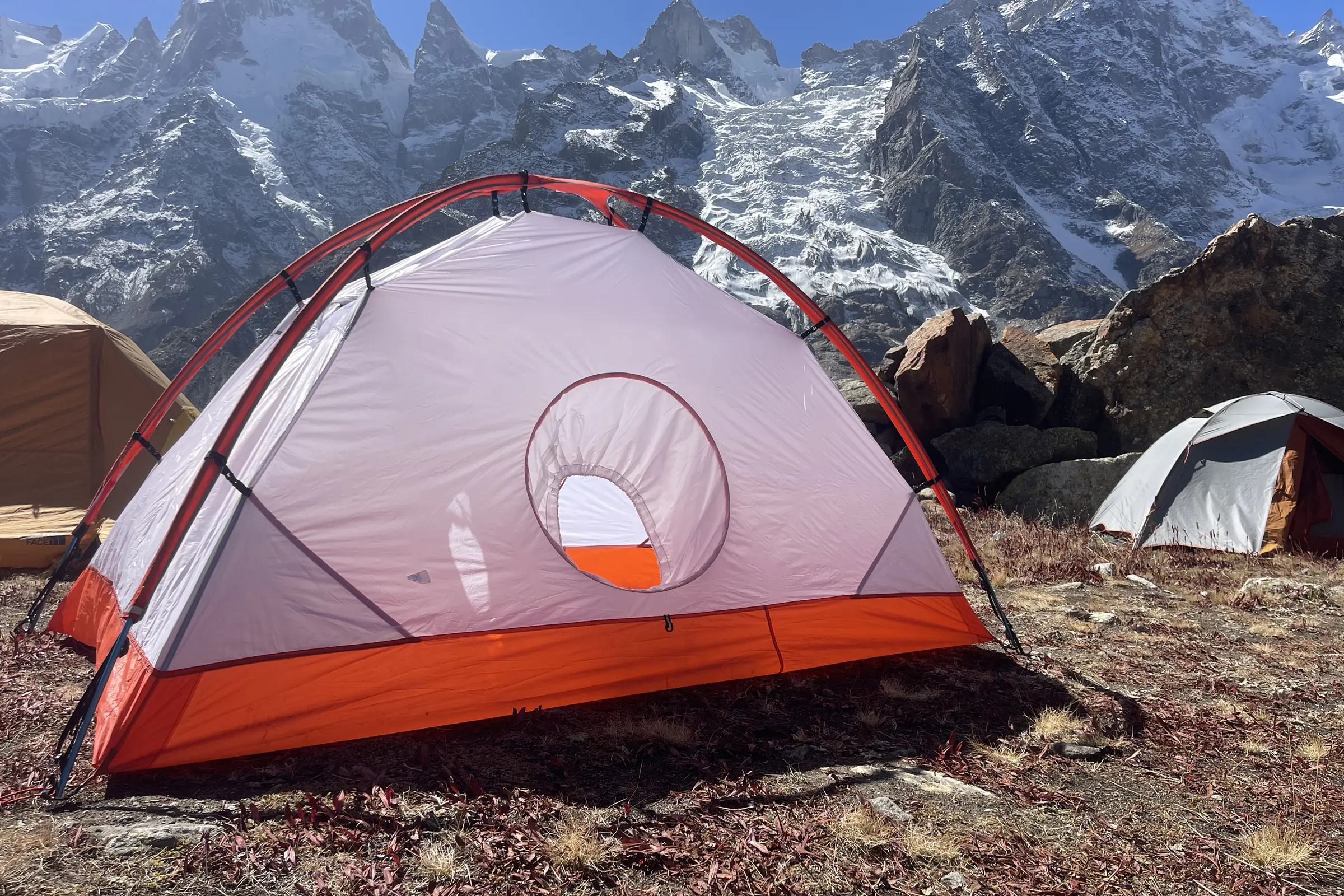



Single-Wall vs. Double-Wall Tents
Tents are either single-wall or double-wall designs. Single-wall tents are lighter-weight, nonbreathable, waterproof, and don’t include a rainfly. They typically don’t offer as much storage for gear.
A double-wall tent actually contains two items: a breathable tent paired with a waterproof rainfly. The setup usually offers vestibule space to stash equipment.
The kit weighs more and requires more time to set up compared to a single-wall tent. Single-wall tents are less breathable and produce more condensation but can be worthwhile for light, fast, difficult mountaineering missions where minimal weight is preferred.
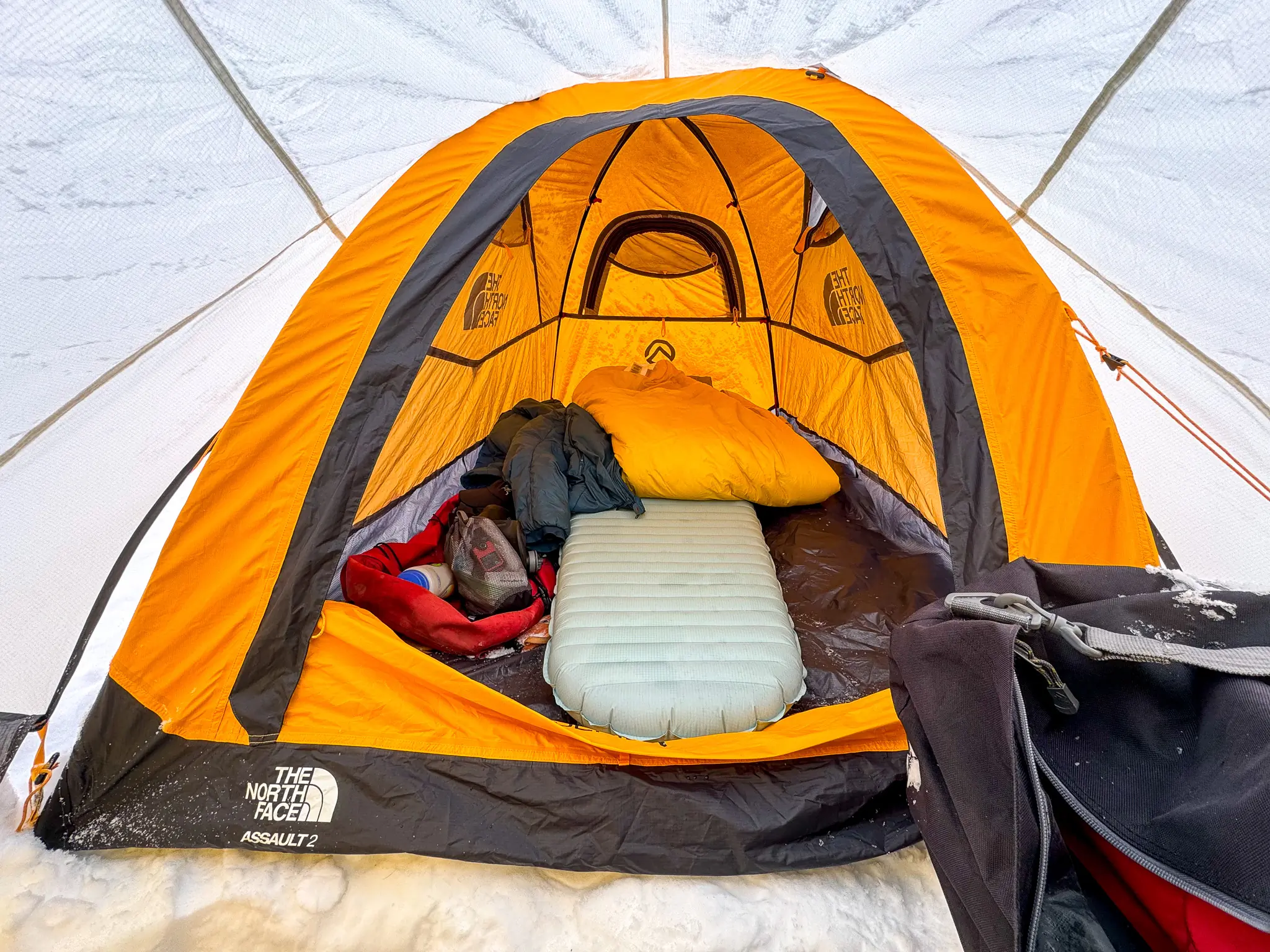



Material & Durability
A price tag is usually reflected in the balance of the materials’ durability and weight. Ultralight, strong materials often cost more than heavier fabrics. The KUIU Storm Star 2 Person Tent is constructed with a 40-denier ripstop nylon tub and floor and a 30-denier tent body that has a DWR (durable water-repellent) coating. The tent is 29.5 square feet and weighs 5 pounds, 5.2 ounces.
In contrast, the NEMO Equipment Kunai 3 is 36.5 square feet but only weighs 5 pounds, 3 ounces. The tent is constructed with ultralight waterproof-breathable nylon and a polyurethane-coated floor.
A separate footprint, or groundsheet, isn’t required for an enclosed single-wall tent. Lightweight materials are pretty durable, but they tend to break down if they’re roughly handled. Investing in a lighter-weight bundle means the recreationist should be mindful with gear care.


Bathtub Floor
A bathtub floor means the waterproof fabric comprising the floor extends a few inches off the ground and up the tent walls. Often four-season setups have a bathtub floor for extra protection during a weather event.
Waterproofness
The material used in tent construction is either inherently waterproof or treated with a DWR coating to block precipitation. If the fabric is treated, it’ll eventually need a refresh, depending on the conditions faced, user care, and volume of use.
Tent Setup & Poles
The majority of our top four-season tents are freestanding. This type of skeleton takes more time to assemble because the ground needs to offset the stake just right — especially if it’s windy or rainy out.
In contrast, tunnel tents or ultralightweight tents and shelters are nonfreestanding, meaning they don’t include tent poles to be hoisted. Instead, one or two trekking poles plus stakes are used to elevate three-season tents. And four-season tunnel tents need to be staked down extremely well with rocks in summer or grippy stakes in winter.
Many four-season tents have color-coded poles and pole clips or pockets on the canopy and fly. That addition helps recreationists efficiently put up their shelter when time is crucial and they need to get out of the elements. These year-round designs also feature strategically placed guylines, often with reinforced attachment points, and many loops to stake down the tent.
The poles vary from tent to tent. The KUIU Storm Star 2 Person Tent features DAC NFL poles, which are a super-lightweight aluminum alloy blend that’s extra strong and stiff. The Big Agnes Battle Mountain 3 has the DAC NSL aluminum poles, which are still lightweight yet slightly stronger.
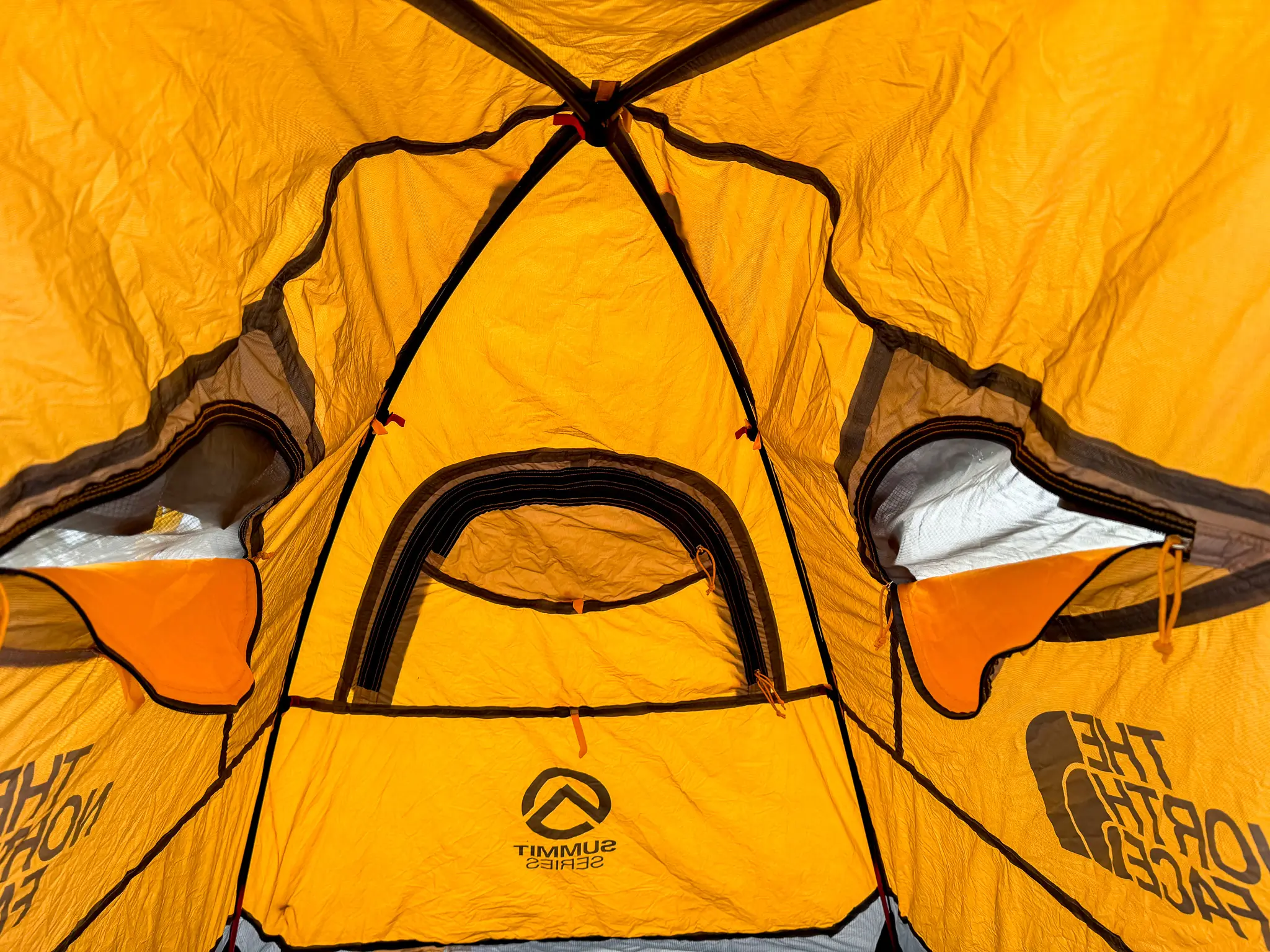



Price & Value
Protection from unkind elements comes at a price, and 4-season tents tend to be some of the more expensive shelters you might spend your money on. That said, there’s a definite range of options available and, based on your needs, a range of prices that its worth spending to get the right shelter for you.
Budget
If you’re more of a backpacker looking to tread into the fourth season or simply aren’t looking at overnight stays in the worst weather out there, there’s good reason to save your bills and spend them somewhere more wisely (such as on a warmer sleeping bag). These tents tend to be of the 3/4-season variety, meaning they utilize structures seen in more storm-worthy shelters but often using lighter materials.
The REI Co-op Arete ASL 2 ($449) is an excellent example and, design-wise, is similar to the battle-hardened Mountain Hardwear Trango series, just in a lighter cut. The KUIU Storm Star 2 Person Tent ($599) is also on the cheap(er) side of things, and the more minimal floor area of >30 sq. ft. is typical of this range of tents.
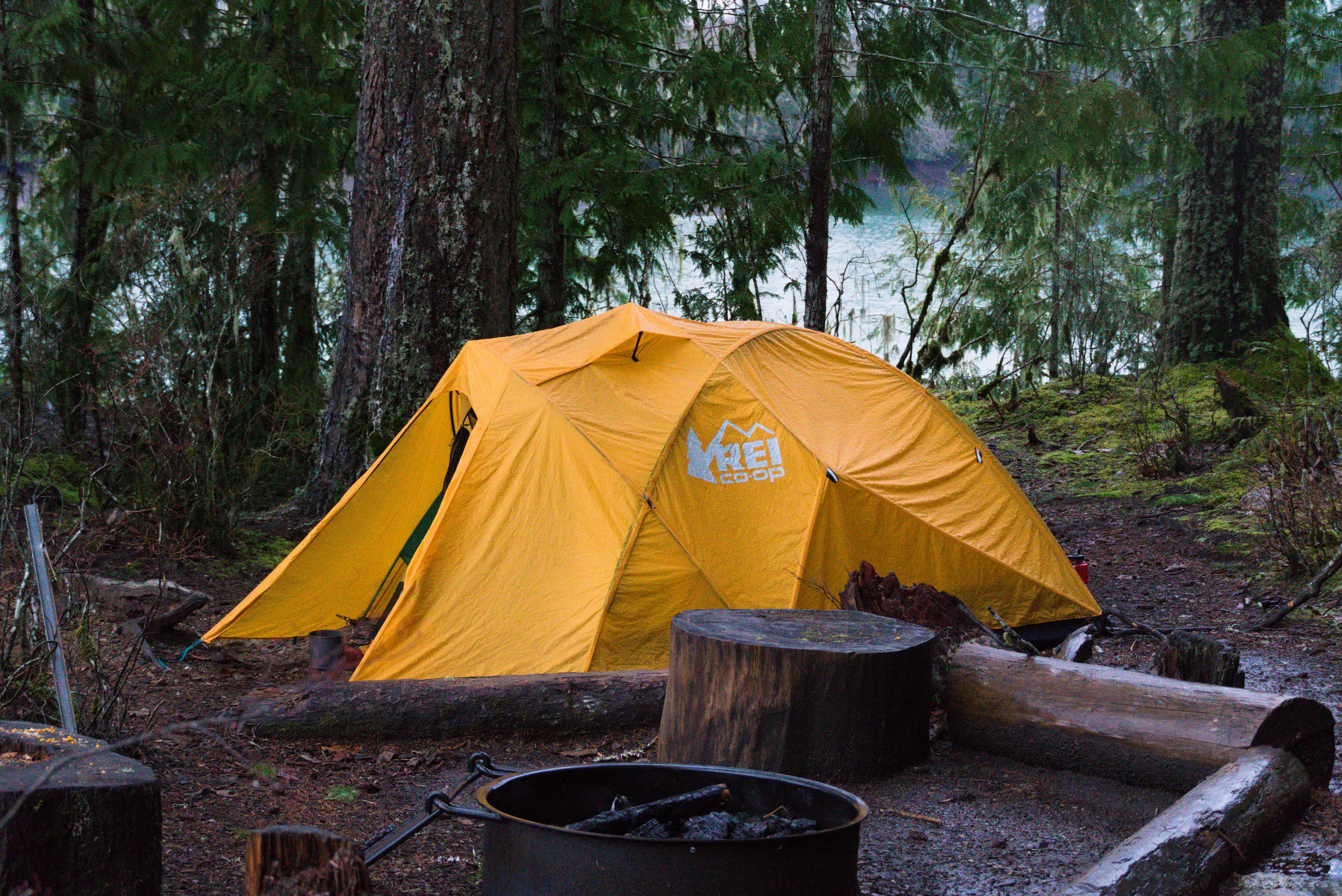



Mid-Tier
Your bread and butter 4-season tents will likely run you between $600-800, with some reaching a bit higher than that. This is some good coin to drop on a shelter, but you do get a lot in return: Thicker 10mm poles are common, along with more durable 70D+ fly materials that won’t shred under harsh winds. Vestibules will also be larger, meaning you can stash all of your kit outside the sleeping quarters.
The Mountain Hardwear Trango 3 Tent ($1,050) is at the upper end of this range, but we think it’s the best value out there for a tent with a serious lineage. The five pole design is very sturdy against hard blows, and the spacious interior is larger than most other 2-person shelters to accommodate large sleeping bags. You’ll also see more special use-case tents here, like the ski trip-worthy MSR Access 2 Tent ($800), and the on-route bivy style SlingFin HotBox ($750).
Premium
If you need the absolute best in protection, look for brands such as Samaya and Hilleberg. These $1,000+ shelters use cutting-edge materials and designs and are tested at the bitter edge to ensure they last. Hilleberg’s Black Label tents are made with the brand’s Kerlon 1800 fabric, which is coated on both sides with silicone to create an uber-tough fabric, while the Samaya 2.5 Tent ($1,200) uses Dyneema Composite Fabric — a superlight waterproof textile.
Frequently Asked Questions
When you shop for a four-season tent, you should first consider your preferred capacity for your size, any potential partners, and the equipment. Take a close look at each tent’s width, length, height, and volume in the central space and vestibules.
After you determine tent size, consider how far and often you’ll need to haul the shelter and if you’d appreciate fewer pounds versus a larger footprint and room to shuffle gear around or lounge. Another consideration of a four-season tent is how well-ventilated the design is and if it’s suitable for the amount of time you’ll be posted up in your tent.
When you examine the finer features, it’s nice to have interior storage space — pockets and loops — to help organize gear items and apparel.
A three-season tent is generally lightweight and breathable for activities like backpacking in the spring, summer, or fall. These versatile builds provide protection against insects, wind, and rain. Typically these packages have a tent body and a fly, so they’re a double-wall setup.
The weight varies from tent to tent, including a segment that serves ultralight trekkers. To learn more, check out The Best Ultralight Tents, According to Thru-Hikers buyer’s guide.
A four-season tent has more substantial, hardy shapes and materials to block snow, ice, harsh wind, hail, or even rock. As a result, mesh is not commonly featured in the body of the tent in order to maintain warmth and security. However, these tents still need ventilation, which is strategically placed on the main body and fly to help prevent the uncomfortable buildup of condensation inside.
Many four-season tents have one or two vestibules to help protect gear from the elements. Lighter weight models are single-wall for efficiency of setup and ease of travel.
Check the overnight lows and make sure your sleeping bag and pad are rated for the temperature swing. For extra comfort and protection from the cold, you can stack two closed-cell pads or layer a foam pad with an inflatable pad.
Dress in layers and don’t let yourself get too hot or sweat, which will become a downward spiral of getting cold. Keep a warm pair of socks for tent use only to prevent lounging or sleeping in damp socks, which can lead to serious foot health issues.
Make sure to eat a hearty dinner and hydrate well. Before dinner, you can top off with a cup of hot chocolate for calories your body can burn throughout the night. You can also fill a Nalgene bottle with hot water and put it inside your sleeping bag for a boost of warmth.
If you find yourself venturing to high-altitude, alpine, or remote environments in the shoulder seasons or during winter, it’s a good idea to invest in a shelter that will protect you in a blizzard. If you’re pursuing a winter hunting trip, polar expedition, or mountaineering adventure, a four-season tent is an obvious good choice.
A three-season tent is typically constructed with a mix of mesh and the structure is not engineered to withstand the weight of snowfall or extreme wind.
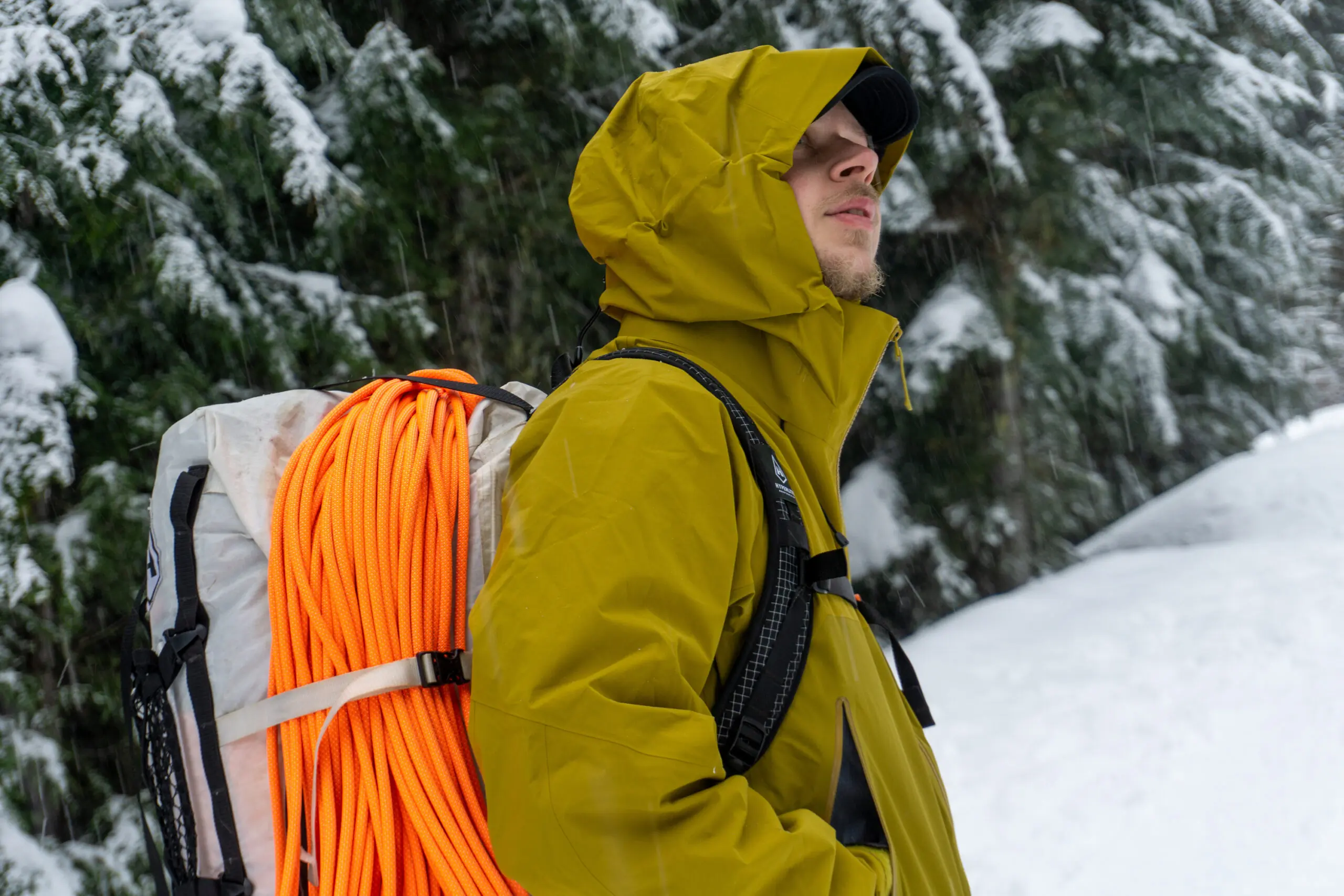

The Best Hardshell Jackets of 2025
After months of testing in the harshest of conditions, these are the best hardshell jackets to brave the alpine with in 2025.


The Best Backpacking Tents of 2025
Whether you’re looking to spend 100 nights on the trail or stick to a tight budget, we’ve found the best backpacking tents of 2025.
